


This summer I spent two weeks hitting my head on things in Japan. This is that story.
It may shock you to know that Japan was not built with 6’3” Caucasians in mind.
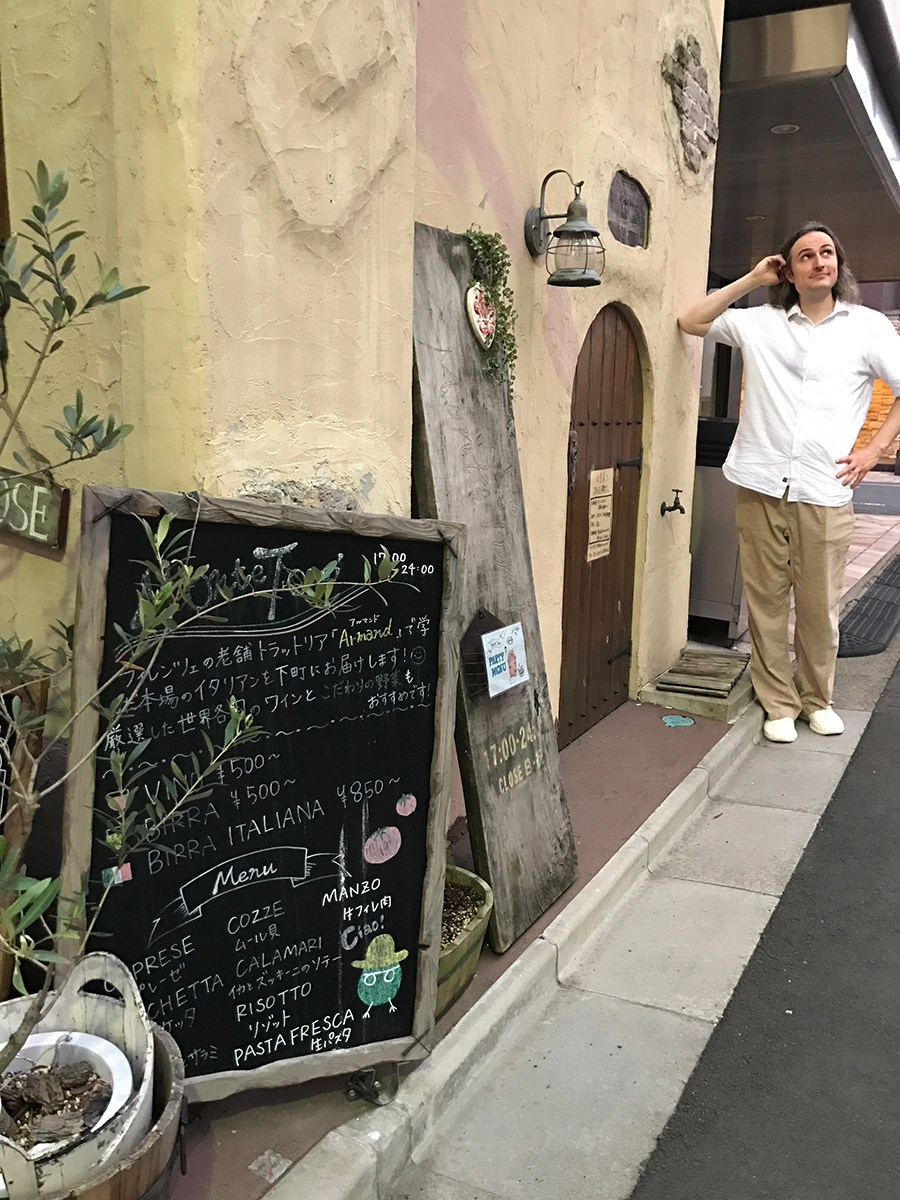
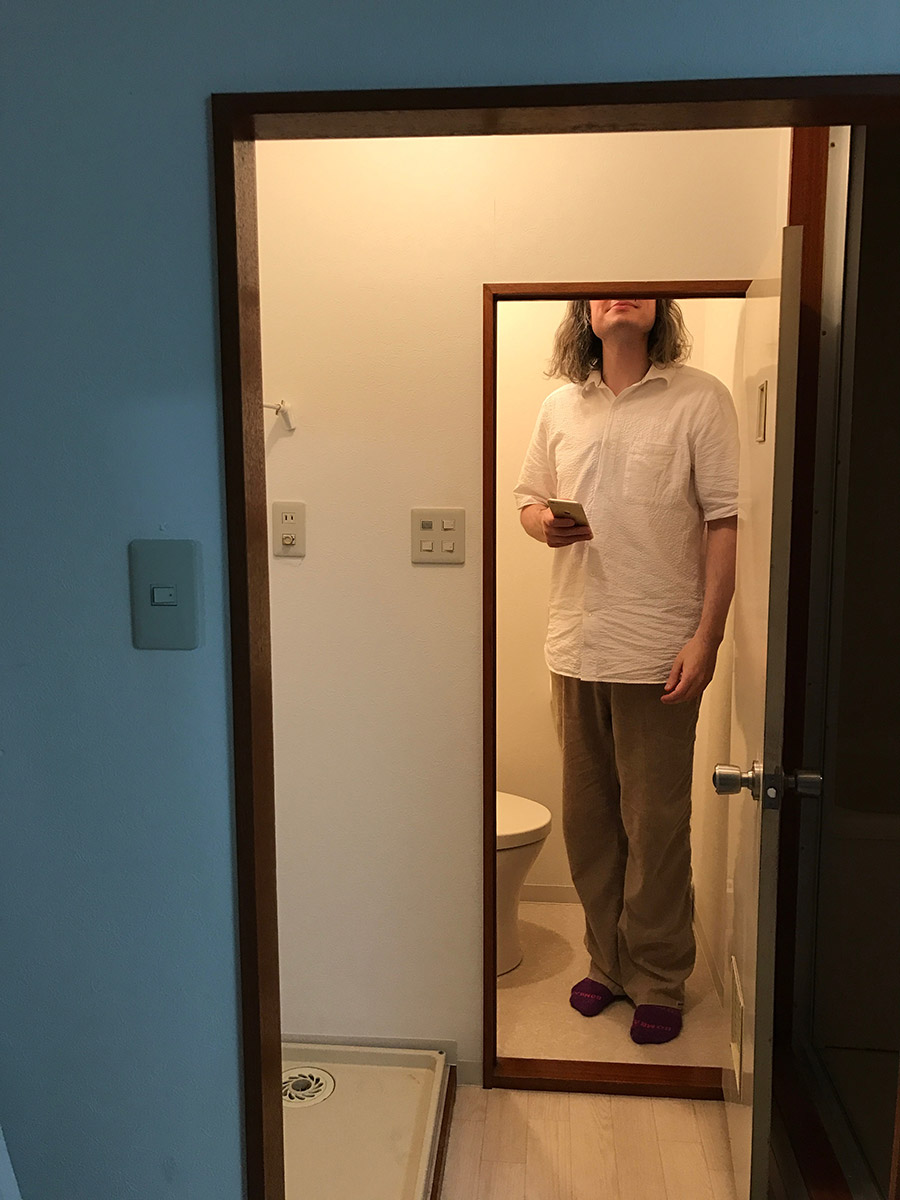
At the beginning of the trip I started counting the things I hit my head on. Doorways, ceilings, signs, people. After a few days I stopped around 30, as I had lost count due to brain damage.
I cannot begin to describe the serious handicap that being tall in Japan represents. You'll hit your chin on doorways. Bathroom mirrors uniformly reflected the center of my chest. I hope one day to repair the damage done to my posture by two weeks spent continually ducking and crouching. After a week of bonking and tripping and crashing my way through Lilliput, I realized that Godzilla was just the story of a white guy visiting Japan.
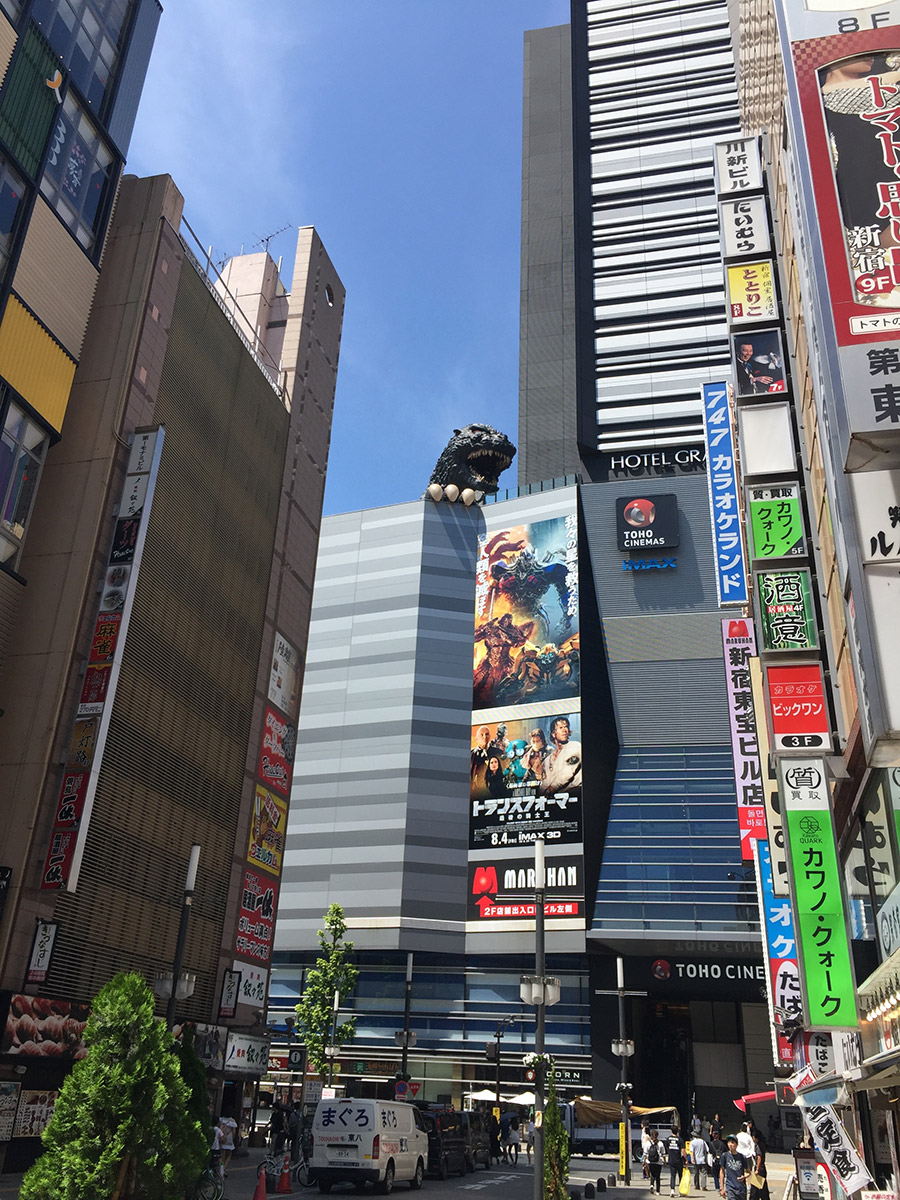
At first I was slightly hurt that the locals looked at me with equal parts curiosity and fear, until I realized this is exactly how I would look at someone who was two feet taller than me. It didn’t help at all that getting off of crowded subway cars inevitably involved me head-butting, smacking and elbowing people inadvertently as I ducked under ads hung from the ceiling and contorted my inconveniently sized body through child-sized passageways and dense thickets of 5-foot-tall people. I felt like a monster.
At Tokyo Disneyland, I was waiting in line for Space Mountain when a Disney employee approached me in line. “Excuse me sir, but due to your extreme height you’re too tall to ride in the normal cars on this ride. We can seat you in a special car, but you’ll need to sit cross-legged and crouch down a bit.” I agreed to these terms as long as she promised I wouldn’t wake up tied to the ground with tiny ropes.
Ten minutes later, another employee approached me. “Excuse me sir, but due to your extreme height-” This happened a third time before I got on the actual ride. The guy seating people in the cars looked at me like “Oh, shit,” then sighed a sigh of polite Japanese relief as I managed to contort myself into the largest car, barely getting the lap bar to lock down over my sprawled legs. As Space Mountain flung us around in the dark, I sat there, Indian style, ducking slightly, realizing that nothing adds more thrill to a roller coaster than the realistic possibility of sudden and absolute decapitation.
Later that night, as I climbed aboard Splash Mountain, I realized the floor of the log was shorter than the length of my shoes, and I ended up having to wedge my feet into place diagonally and curtsy into position like the belle of the ball an instant before the flume took off. All was fine and wet and well until it came time to exit the ride at the end, and I realized I couldn’t get out. The Disney employees began to momentarily panic before I managed to reach up and grab ahold of the railing for the line outside the ride and corkscrew myself out of the log with a sound like someone ripping a wetsuit off of a sea lion. There was much relief from all assembled.
At one point my friend Linda and I were waiting at a crosswalk in Tokyo, when we spotted a couple on the opposite side of the street, an enormously tall white dude and his tiny Japanese girlfriend. “Thank God!” I thought. A circus freak I can hide behind. The light changed and we passed the couple in middle of the crosswalk. I looked over as we passed and realized with deflated shock that I was a good two inches taller than that guy. It was all an optical illusion caused by his three-foot-tall girlfriend. Goddammit. I’m the tallest person in Japan.
I stepped off the plane at Haneda (rhymes with “Canada”) airport in Tokyo, and onto the moving walkway. The “Caution: You are approaching the end of the moving walkway” recording was looped in both Japanese and English. The English recording was done by a 90-year-old Oklahoma farmer’s wife on a wax cylinder during the Dust Bowl, with an accent unheard by human ears since The Grapes of Wrath, so I felt right at home. I didn’t hang around long enough to hear if it played “Jimmy Cracked Corn” on a banjo next.
After the twelve-hour flight, finding a bathroom was a priority. I stepped into line in the Men’s room, and in time a stall became available. I stepped in, and was greeted by a small porcelain… thing sticking a few inches out of the floor, rather than a toilet. I froze. I think you’re supposed to squat over this? I was not prepared to conduct my business in this manner so I spun on my heel, walked out, and got back in line.
Two American GIs in fatigues looked at me like I was too strange to live and ambled into the stall together. (Why together?) Laughter broke out and they quickly came back out and got in line behind me.
Eventually the other stall became available and thankfully they’d thought to put a toilet in this one. The GIs offered to go in with me but I declined. Now, allow me to prepare you by explaining that I already knew all about Japanese toilets before I went to Japan. I consider it insane that we make do with toilet paper in 2017 and I have looked into installing a high-tech Japanese butt-washing toilet at home. But this was my first time experiencing one in the flesh. And let me tell you, you are not ready for that level of water pressure blasting straight up your nethers, like a fire hose aimed at a daffodil. I wasn’t.
After my colonic, I navigated the various butt-drying, odor-evacuating, and music-playing buttons on the toilet, all of which are marked with cryptic little graphics like a whale spouting or a rainbow. You basically mash buttons like you’re pooping on a Playstation and hope it all works out in the end. I then moved on to figuring out the sink. Yes, the stall had an en suite sink. The mirror on the wall reflected my waist. The sink itself could be flushed. I didn’t understand this at all until I’d dried my hands on a paper towel and realized there was no trash can in the stall. I put the wadded-up paper towel in the sink and flushed. FOOMP. It was gone. Okay then.
The most shocking thing I can tell you about Japan is that it’s really not as strange as you think. The Japanese have their quirks, sure, but what they’re really good at is playing to the “Japan So Crazy!” fetishes of western tourists by selling us what we want to see. I went over there expecting to see used schoolgirl underwear in vending machines, puppies in vending machines, tentacle porn as the only channel on the hotel TV, whale meat at McDonalds, etc. Nope, nope, nope. You can find some strange things if you really go looking, but that’s just as true in New York.
Vending Machines: There are vending machines every ten feet in Japan. 99% of them just sell drinks. Some funny drinks, like Beard Papa’s Drinkable Cream Puffs:
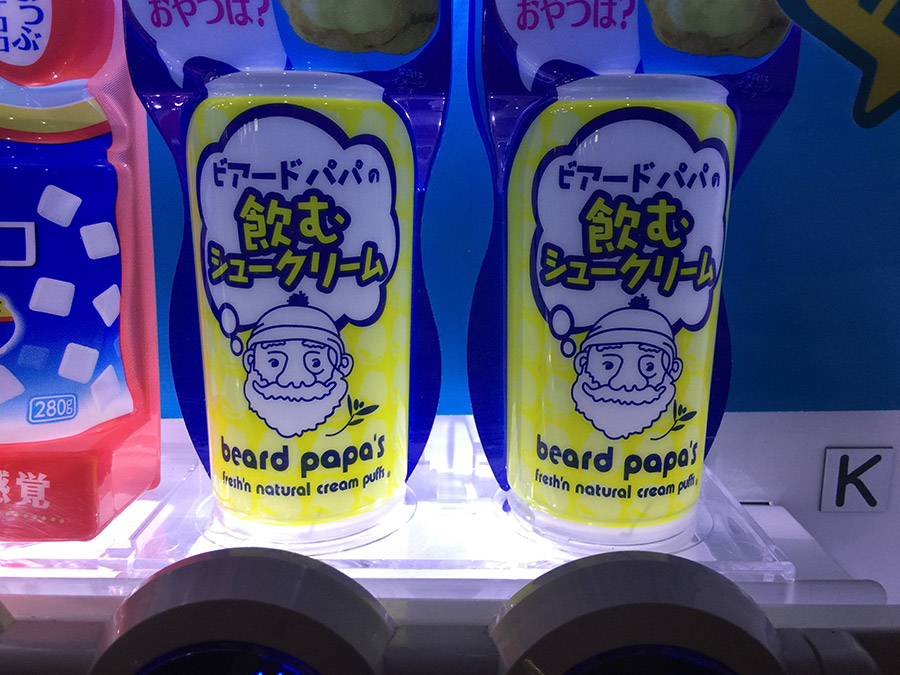

...and little coffees with Tommy Lee Jones on them...
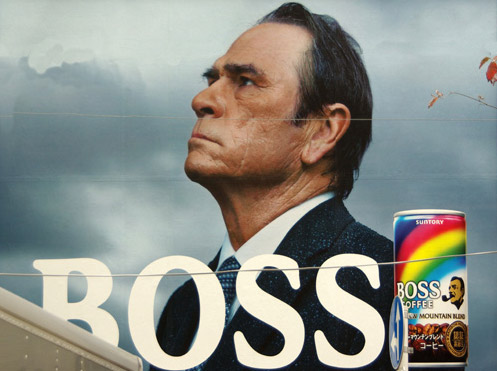
But mostly just water and tea and Japan’s not at all disgusting-sounding answer to Gatorade, Pocari Sweat:
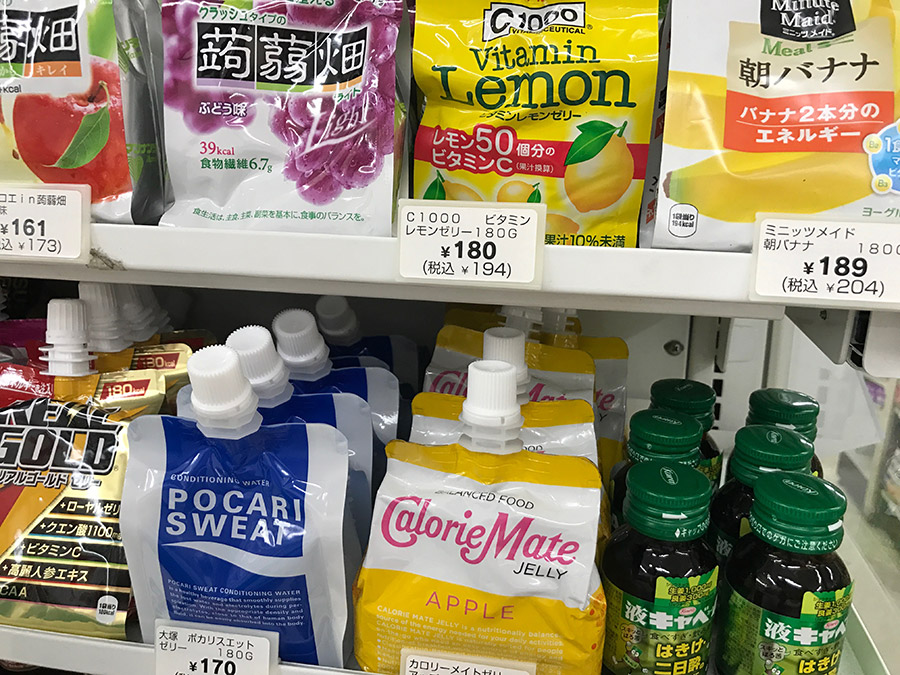

The next most common vending machines were for cigarettes. Occasionally you’ll see one for green tea ice cream or other snacks. If it was the whole point of your trip you could probably find one full of toys or hamburgers in a can or something wacky like that.
From what I was able to discern, once upon a time some very seedy adult shops once sold used schoolgirl underwear behind the counter, until this practice was outlawed 10-15 years ago as a health code violation. This conflated with the ubiquity of vending machines in Japan in the western imagination to create the used underwear vending machine urban legend. Enough Western tourists came looking for used underwear vending machines that companies responded to this demand by putting up fake used underwear vending machines, which sold brand new underwear that was made to look used. They even say “USED” in English on the machine, then below that in Japanese it would explain that this was definitely new underwear you sick pervert.

Homogeny: Japan is 98.5% Japanese. Almost all of the other 1.5% is Korean or Chinese. So if you’re not Asian, you’re definitely going to get noticed. All the white people I saw or met were obvious tourists. A shockingly high number of them were Australian. I ended up playing a mental game of treasure hunt for other races. Out of the approximately 3 million people I encountered across Japan, I found one African-American person, one Indian, and two middle-easterners. All tourists.
95% of the time I was the only white person wherever I was, which was an eye-opening experience. Everyone was perfectly nice, but it was also very clear you were “other.” People never sat next to me on the subway unless there were no other open seats. I think this was fear of the unknown more than any animosity. I know it’s not quite the same thing, but I felt like for the first time I understood a bit of the experience of my friends in America who belong to various minority groups. You begin to immediately notice the other white people wherever you are, enough so that I recognized white people I’d seen only in passing in other cities days before.
It was a strange feeling to realize how much someone could know about you just looking at you in Japan. I can see a Japanese person on the subway in America and not know anything about them, but anyone looking at me in Japan would know I was definitely a tourist, well-off enough to have made the expensive trip to Japan just for shits, and I almost certainly did not speak their language.
I did my best to speak Japanese when I could, though it would have added a lot to the trip to be able to speak it better. I had a few conversations where I would speak in Japanese and the Japanese person would reply in English, which was surreal but worked pretty well. Everything always falls apart when you’re caught off guard, however. My favorite exchange was when someone asked me a question in Japanese in a high-stress situation and I replied with “Yes! Wait I mean Si! Wait no I mean Hai!” The best part is that I don’t even speak Spanish, I have no idea where that came from.
The highest concentration of white people I found in Japan was in the Akihabara, the district of Tokyo that used to be all about high-tech gadgets before the internet crushed that market, and now is all about manga and fantasy. It was kind of hilarious how many white guys there were in this one specific area. You couldn’t get away from the pervasive “white guys who are way into Asian women” vibe. I found this kind of icky and uncomfortable until I suddenly realized I was there with my friend Linda, who is Vietnamese, so I fit in perfectly. Awesome.
There were women on the street corners, dressed as sexy manga maids, handing out flyers for something involving sexy manga maids. It was unclear whether it was a show or massage or what would happen to you when you went upstairs.
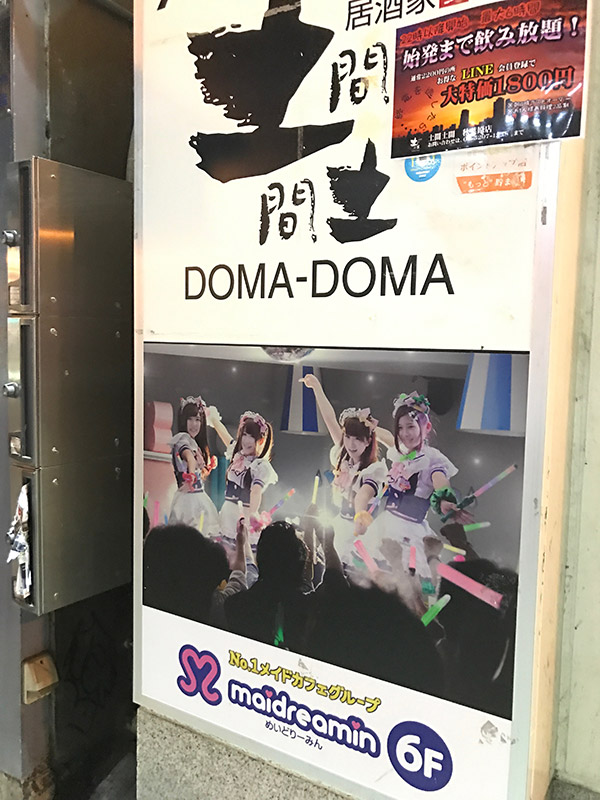
And as much as I found the whole “white dudes who are way too into Asian women” thing totally uncomfortable, there’s no way to get around one fact: the ladies in Japan are hot as balls.
They’re also very subtle with their flirting, either that or “big sweaty white guys” are not a major fetish item for Japanese women, a horrible thought that can’t possibly be true.
Ads: If there’s one thing I regret from the trip it’s not taking more pictures of everyday ads. They’re so pervasive that it felt silly asking someone on the subway to move so you could take a picture of the weird ad on the wall behind them, and I had a vague expectation that I’d be able to find them online once I got home, which has turned out to not be true at all.
White skin is prized in Japan, to the point where every Japanese person in every ad was much whiter than me. They buy a lot of skin-lighteners and melanin blockers there. The ads also seemed to heavily favor models with Western features. Every ad also appeared to star the same woman, with the notable exception of one ubiquitous subway ad we came to call “the girl with the janky haircut”:

Hygiene is also a big deal in Japan. They sell special tinctures to eliminate “old people smell.”
I’d heard a lot about Japan’s aging population. There seemed to be plenty of kids everywhere we went, though I also interacted with a lot of older people. This made me reflect on how few elderly people I see day to day in America, I think the contrast is partially a function of everyone taking public transportation together in Japan. It seems like the elderly get out more in Japan. You also see more elderly people on television, many in ads for diapers. My favorite is best summed up as “Grandma can’t put her diaper on oh wait now there are new elastic diapers I don’t have to put grandma’s diapers on anymore let’s dance.”
Cartoons are pervasive in everyday life in Japan, and absolutely everything has a cartoon mascot. When someone dies and you go to pick out a coffin for them I’m certain there will be a cartoon mascot involved.
Japan’s favorite way of making things whimsical is by putting hats on them. At the bus stop there is a cartoon bus with a hat on it. Cow in front of a restaurant for some reason? Put a hat on it. One pervasive mobile phone ad featured a girl being followed by two giant Muppets, both of them wearing hats.
Everything in Japan gets much more complicated when you scratch the surface, however. We see anime and Hello Kitty and cartoons everywhere and think “Oh, Japan’s so cute and crazy!” Then you read a little and realize that after World War II, Japan was utterly destroyed, and the only thing they had to work with were all the empty ration tins US soldiers had left behind everywhere in their wake. So the Japanese started making the tins into toy Jeeps and dolls, and Japan rebuilt itself by making toys to export to the rest of the world. To succeed at this, they had to figure out what Western kids liked, and cuter sold better. They studied Walt Disney and Fleischer Brothers animation and adapted those styles to their toys and cartoons, amping up the cuteness until that began to be thought of as a Japanese trait. Eventually this mutated into anime.
Long story short, it’s weird to be a white guy in Japan taking pictures of all the cute stuff and realizing this is all a cartoon they made specifically for us so they could survive after we burnt their country to the ground.
My cousin Tyler couldn’t make it on the trip, so we FaceTimed with him as we wandered across Shibuya Crossing, the busiest intersection in the world, waving the phone around overhead to give him the full view. What we hadn’t realized was that he was in the bathroom when we called, a fact we were advertising to 4.5 million Japanese people, or as they prefer to be called, Japaneses.
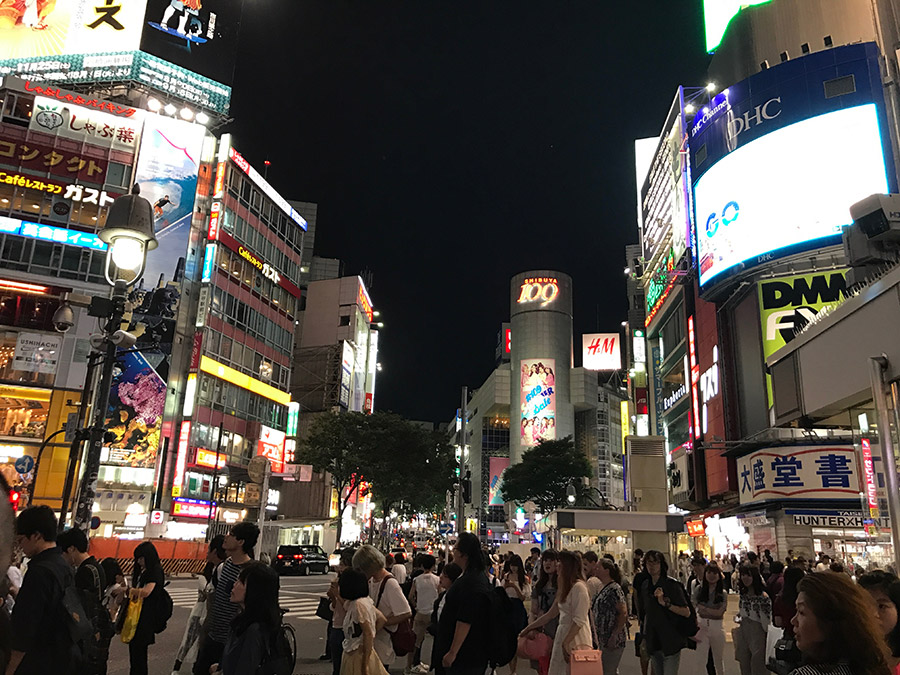
The top American properties in Japan, according to my informal poll of t-shirts I saw while I was there:
1. Marvel
2. The New York Yankees
3. Nirvana
Nirvana might seem like an odd choice for #3, twenty years after the fact, but allow me to point out that #4 was Oswald the Lucky Rabbit. So yeah.
My last full day in Japan I was blitzing through Tokyo and seeing some of the “So Crazy!” sights I had mapped out before the trip, which I now found slightly embarrassing as I realized Japan wasn’t really like this and they were just putting on a show for us tourists. But what the hell, it’s not like I eat in melty cartoon nightmare restaurants every day:
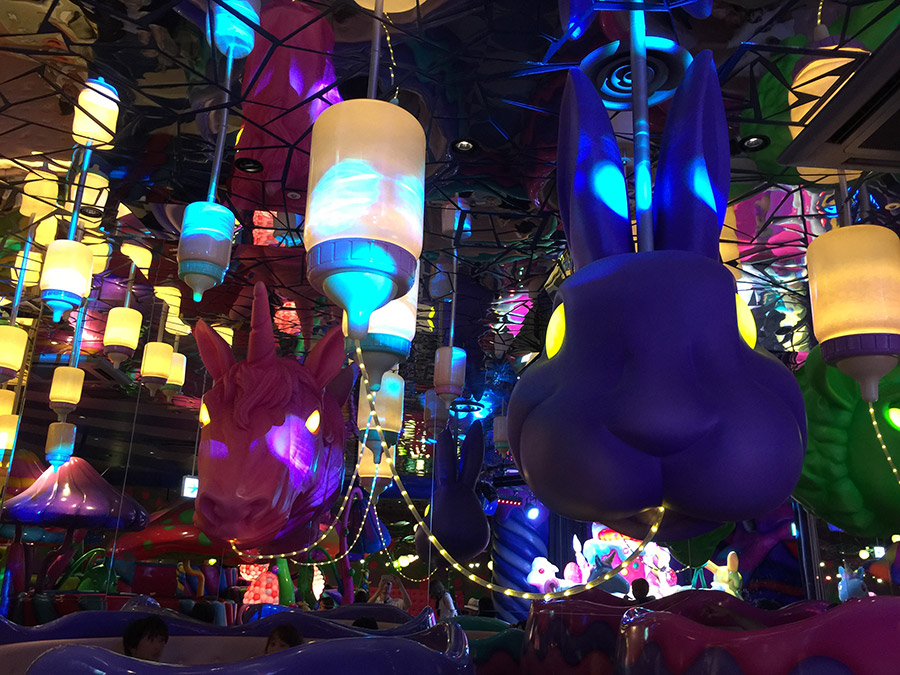
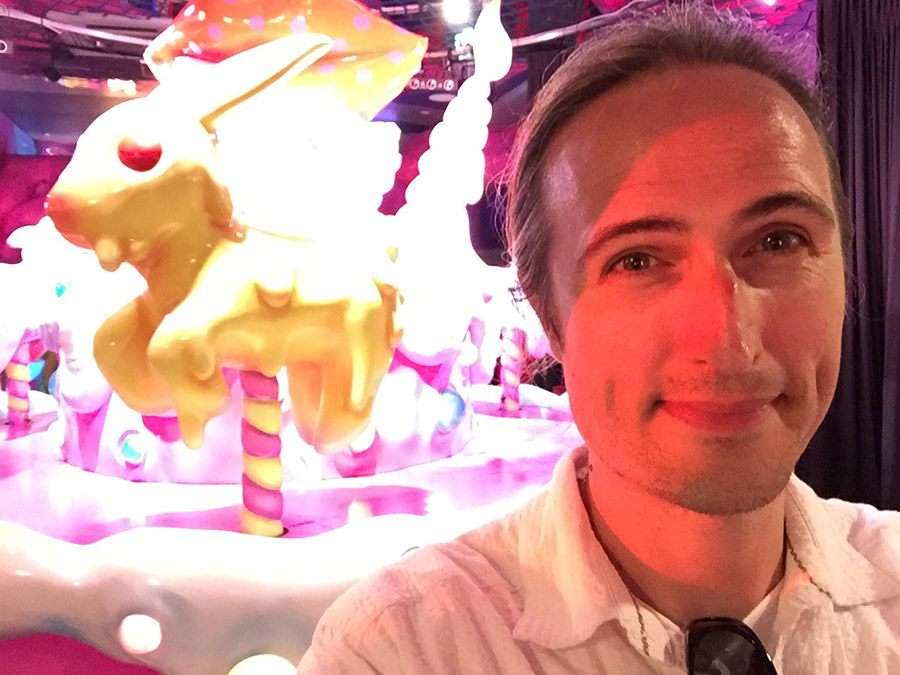
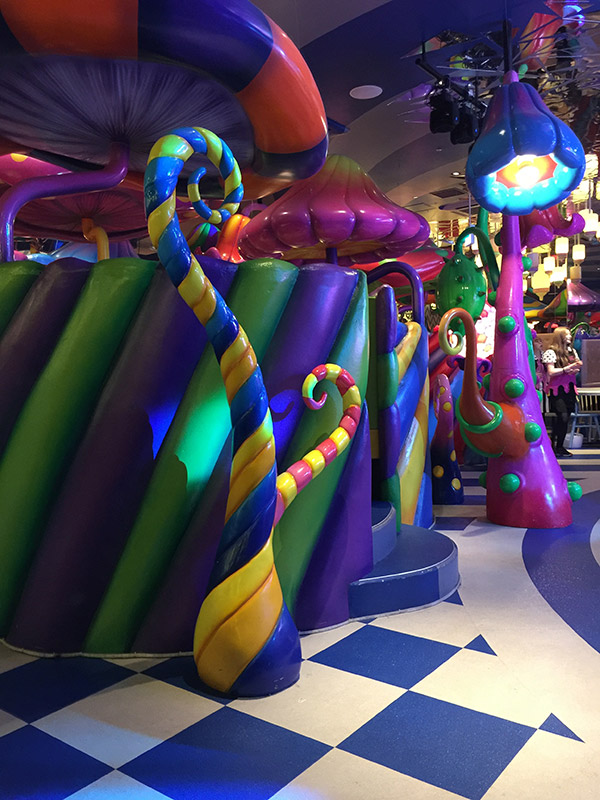
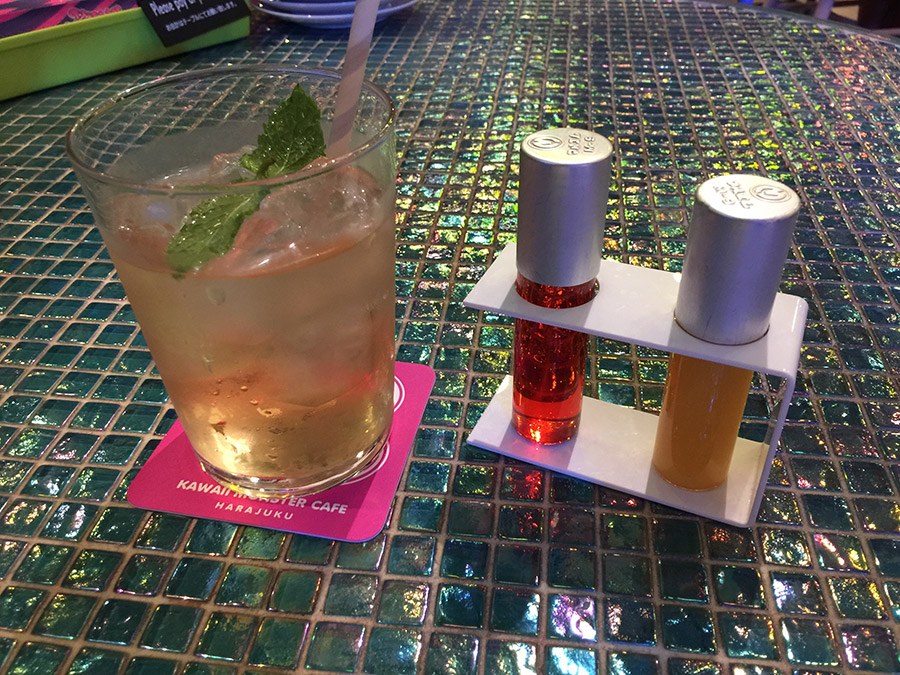
That night I attended the show at the Robot Restaurant, which I’d been describing to people as “The Robot Dance War,” which was an accurate description. This was an absurdly loud show full of giant dancing and fighting robots, huge fire-breathing snakes, somebody riding a panda, ninjas, cyborg monsters, disco Segways, neon light cycles, and lots of minimally-dressed and psychotically enthusiastic Japanese women. It was the very definition of too muchness. And it was fun, in spite of the fact that the waiting room was a closer encounter with typical American tourists than I hope to ever have again. “I got so wasted at karaoke last night!” “We shut that sushi bar down, bronin!”
My iPhone chose this trip to become a walking advertisement for upgrading to the iPhone 8, as it would suddenly die at hilariously inopportune times, like in the middle of the city when we don’t know where we’re staying or how to get there or right as I’m holding it up to display my e-ticket for entrance to an event, etc. Most of the time this ended up being a plus of sorts, as I got to know Tokyo pretty well from having to navigate it blind and I met plenty of people from needing to ask where the hell I was all the time. But it did mean no pics from the robot dance war. I’ll borrow a few from online anyway:
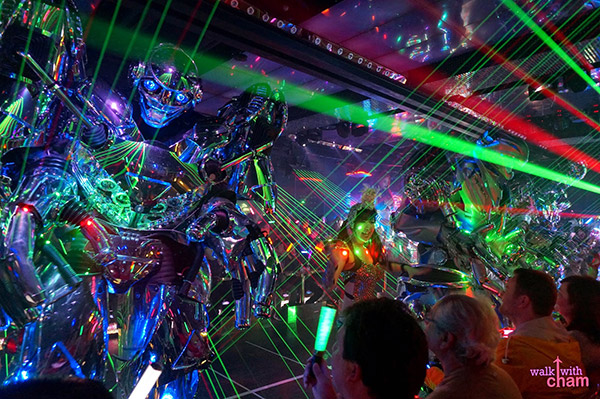
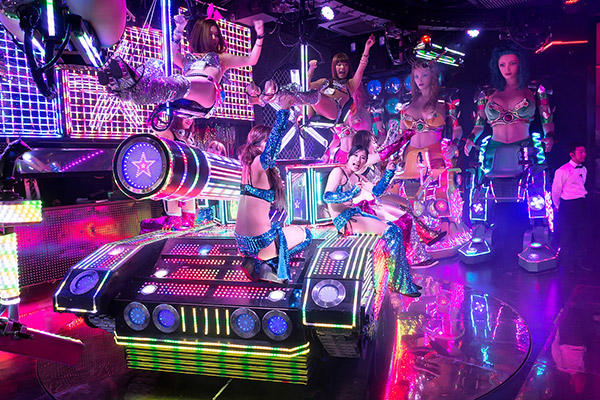
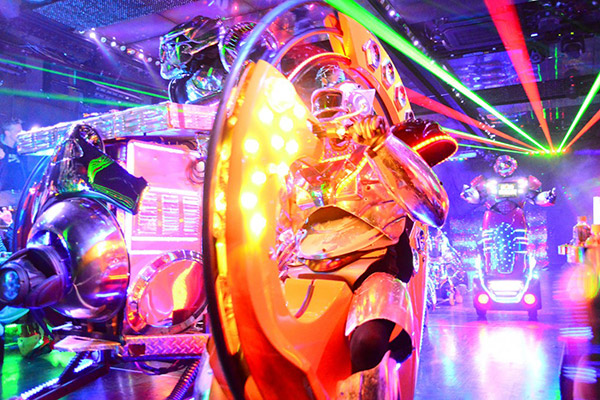
And now allow me to further erode my “Japan’s Really Pretty Normal” thesis by throwing in some other random strangeness I saw in Japan:
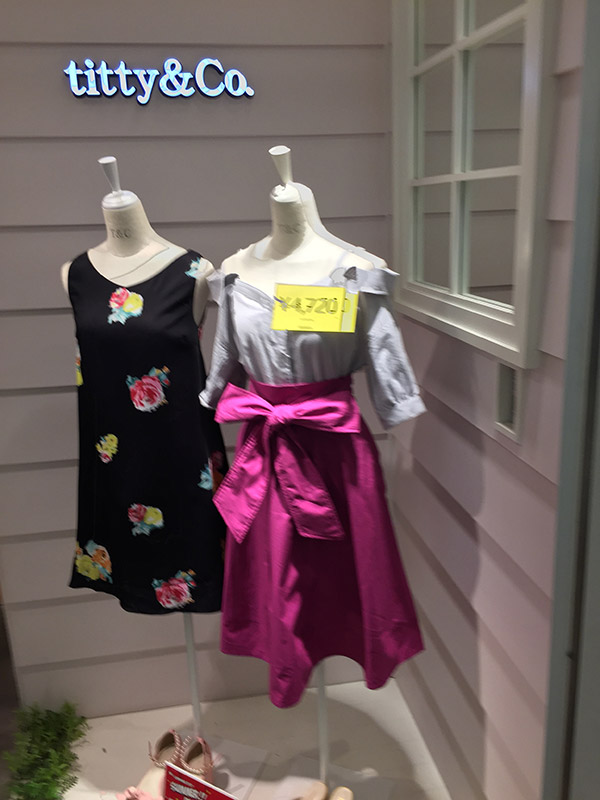
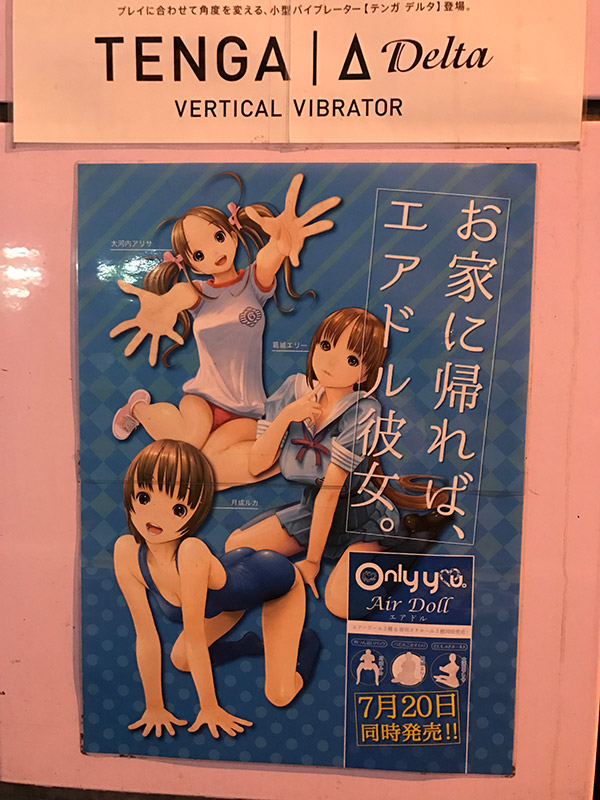
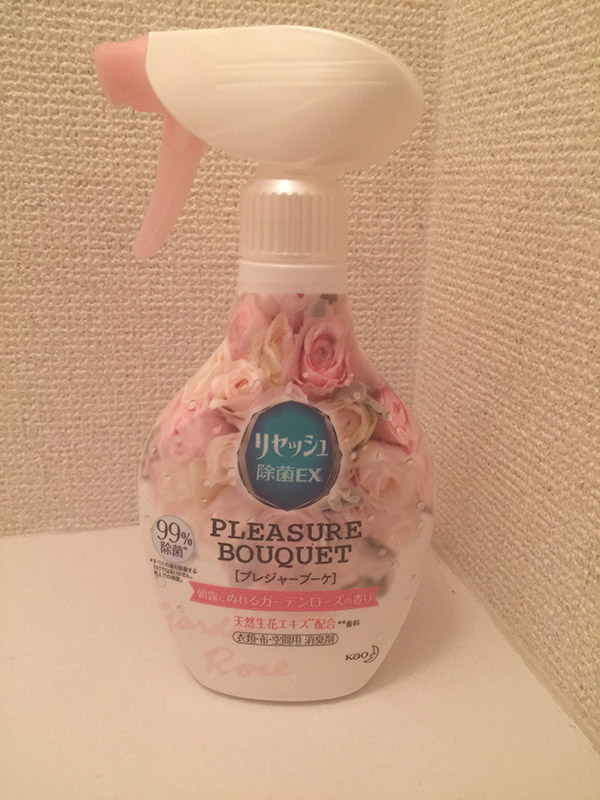
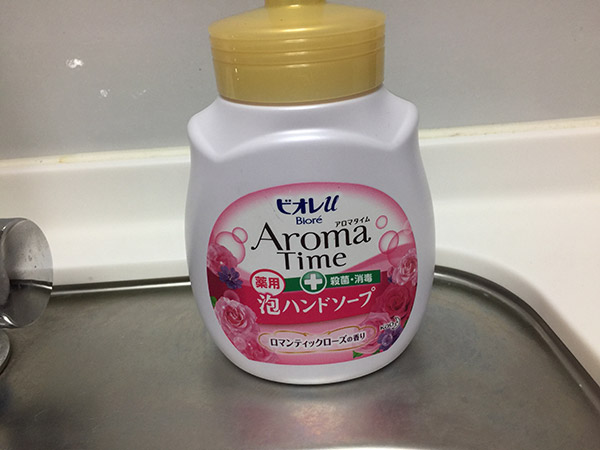
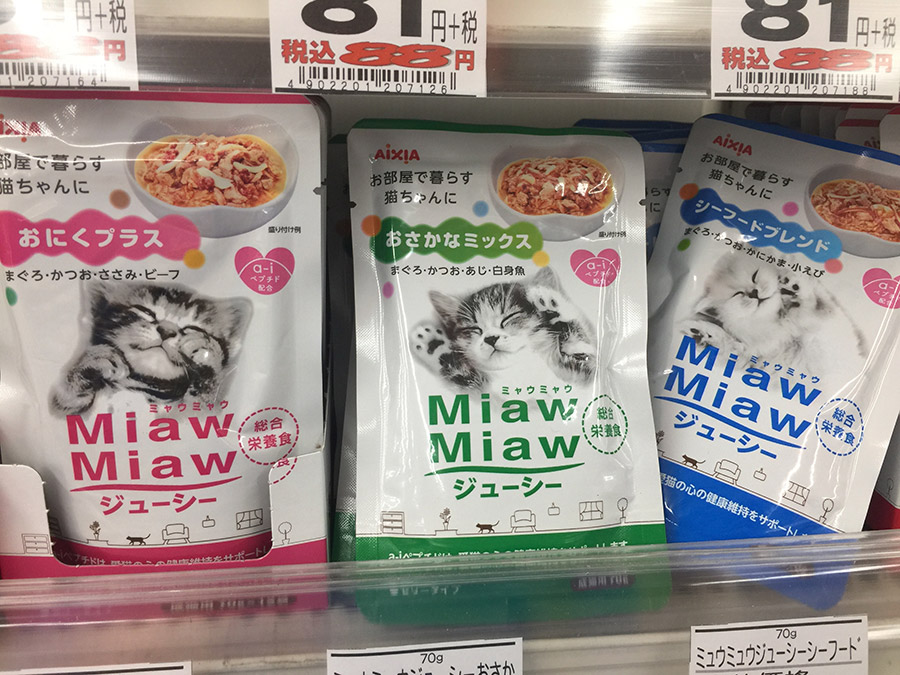
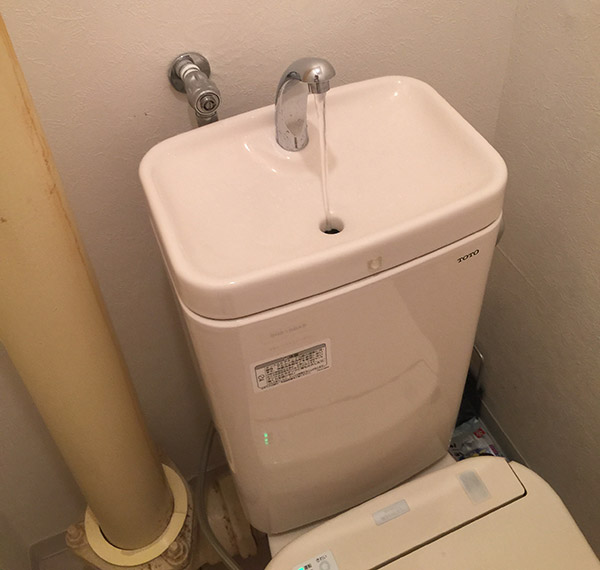
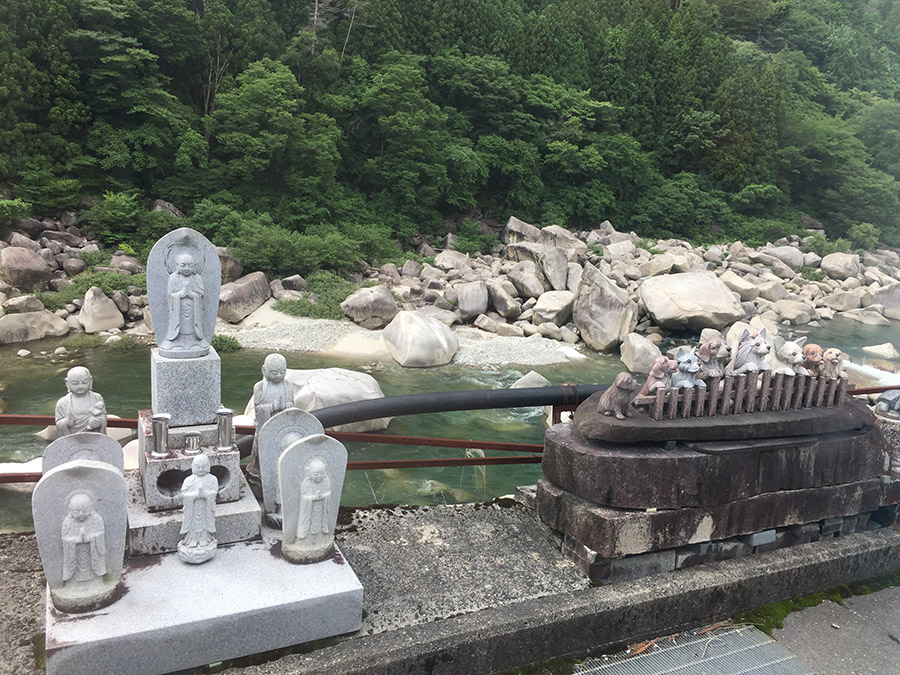
Japan is full of unexpected little melodies. When the train nears a station, the loudspeakers play a poignant little song that seems to be saying “It’s so sad our journey must come to an end…” This varies by which train company you’re riding with, one of which plays a melody that sounds weirdly like “My Country, Tis of Thee.”
Various train stations have their own melodies. My favorite was Matsumoto station, where when you get off the train, instead of a staid “Matsumoto Station,” the announcement is three women singing “Matsumoto! Matsumoto! Matsumotooooo!” in harmony like the Three Stooges saying hello.
The crosswalks play either a “squik squik” car alarm sound or they go “cuckoo, cuckoo.” Sometimes both. After a day in Japan, my Japanese rice cooker at home that plays “Twinkle Twinkle Little Star” when the rice is done suddenly made perfect sense.
One night we were eating ramen in the kitchen of our hostel when without warning, music filled the room out of nowhere. It took us a full minute to realize it was coming from the completely ordinary-looking clock on the wall, which had split open and was rotating around, revealing all kinds of gears and inner images that spun to the music. It was a bit like reality had broken. After about a minute the clock sealed back up and was silent.
But the most unexpected song came on our first full day in Japan, when we were hiking between the quaint traditional Japanese villages of Magome and Tsumago...
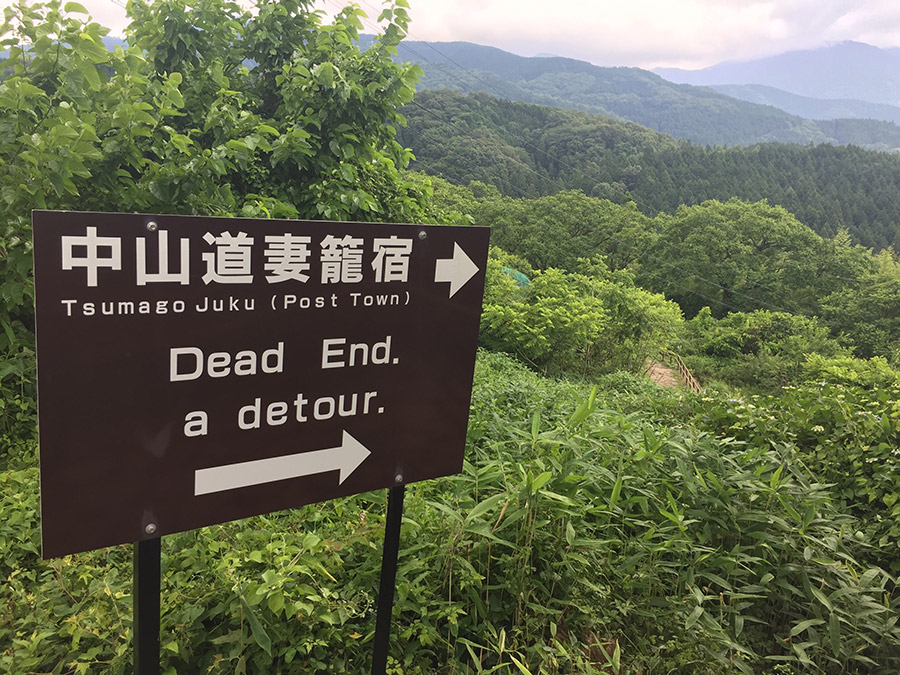
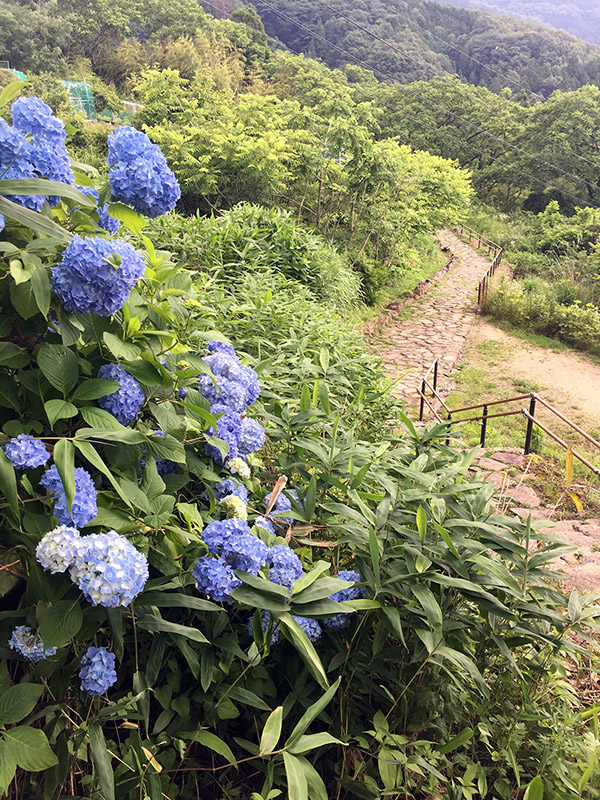
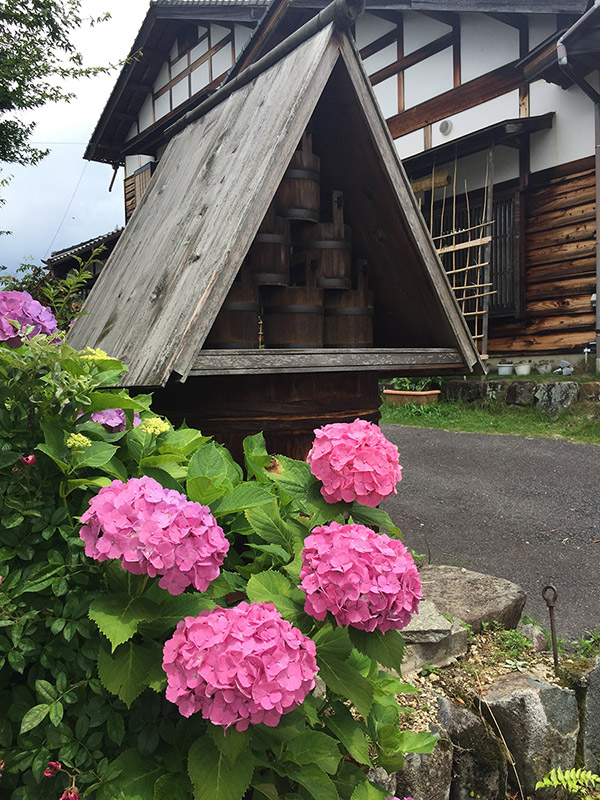
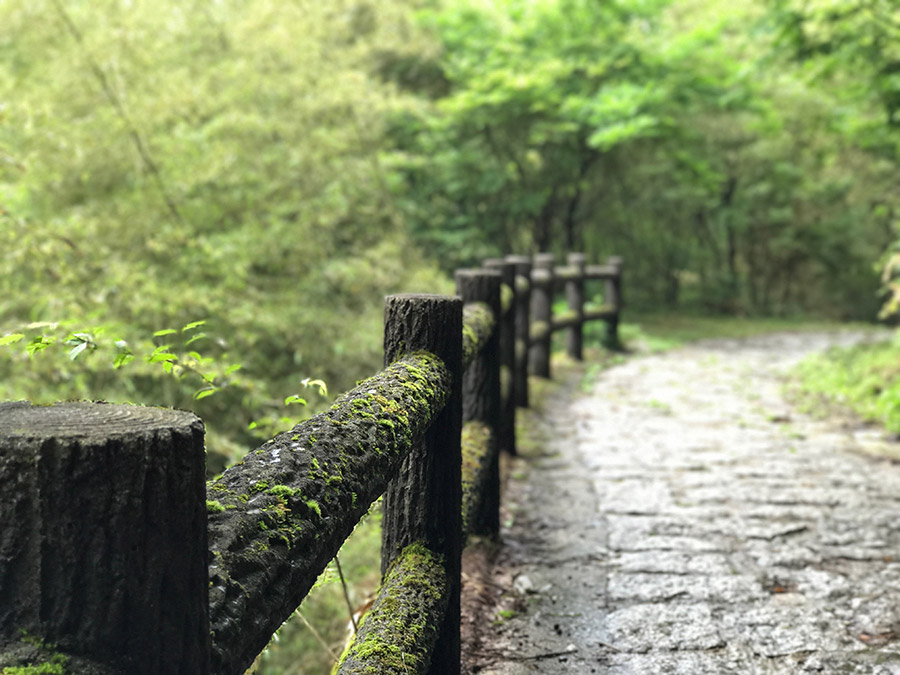
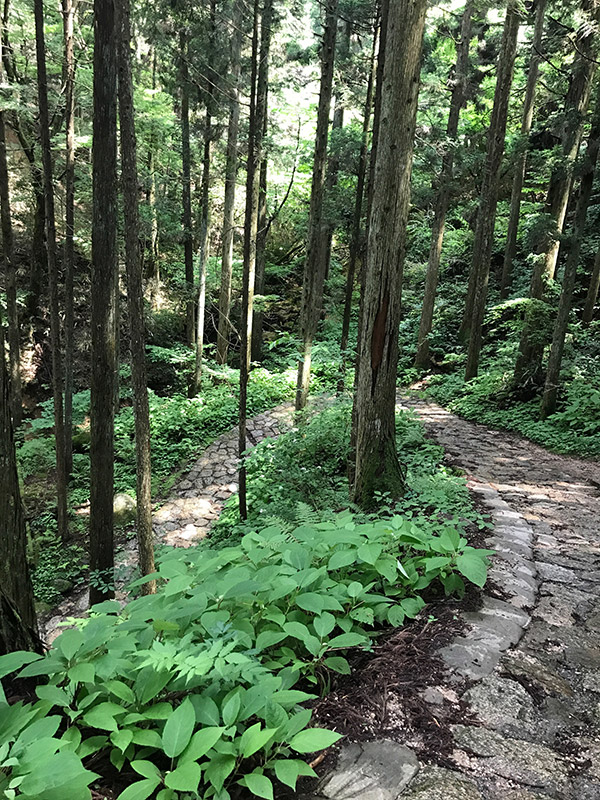
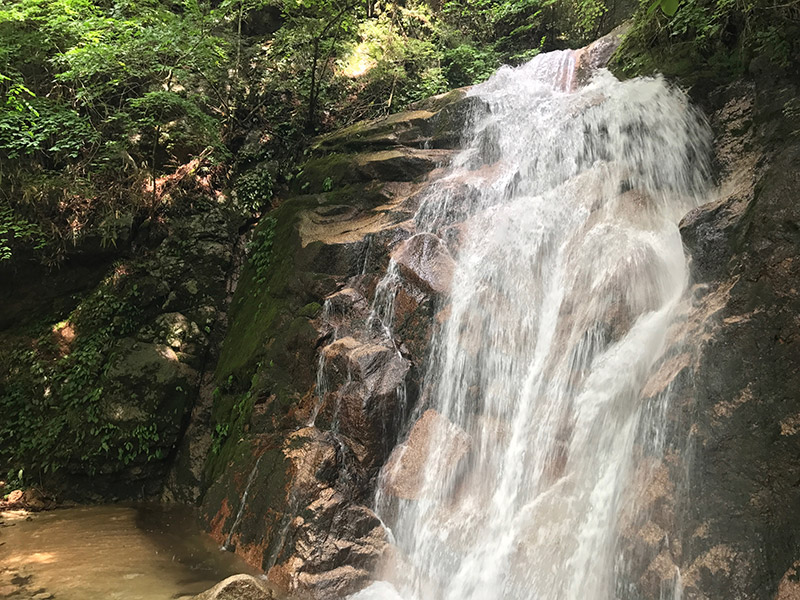
Before the trip, friends had expressed concern that I was planning on climbing four mountains in the heat of July during my trip to Japan. The final count came closer to seven though, since we climbed a few more mountains on accident. One of them was unexpectedly located between Magome and Tsumago.
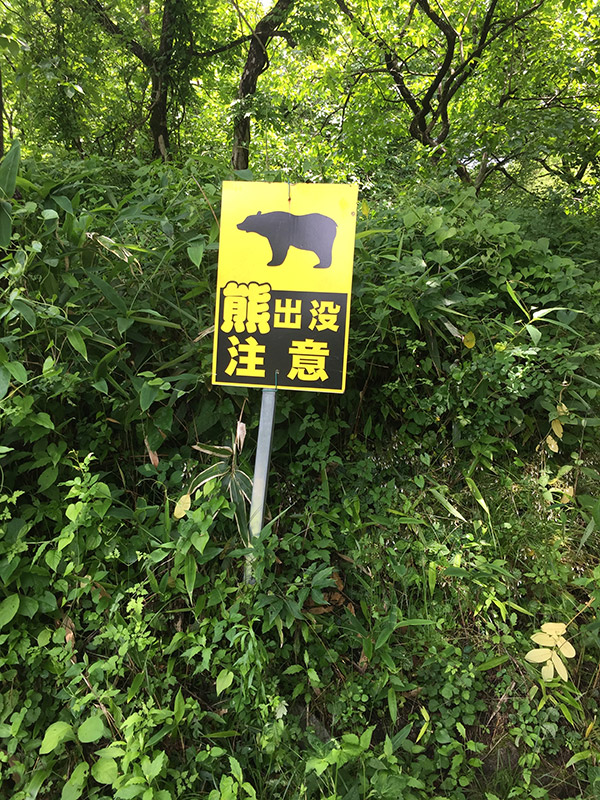
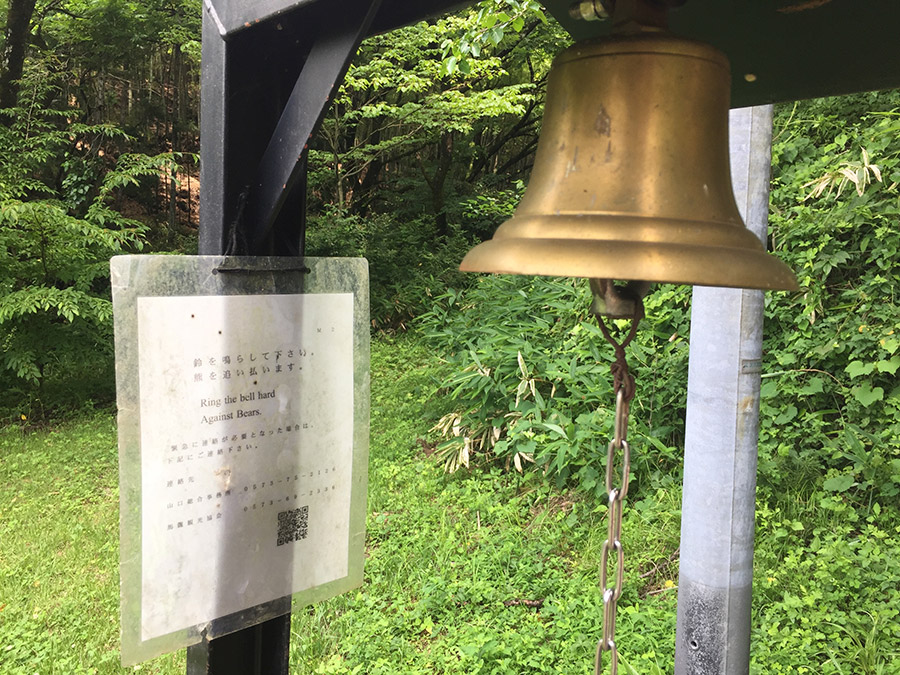
The curvy mountain roads featured large mirrors to allow you to see drivers coming around the corners. We stopped at one of these to take a photo, when suddenly there was music all around us.
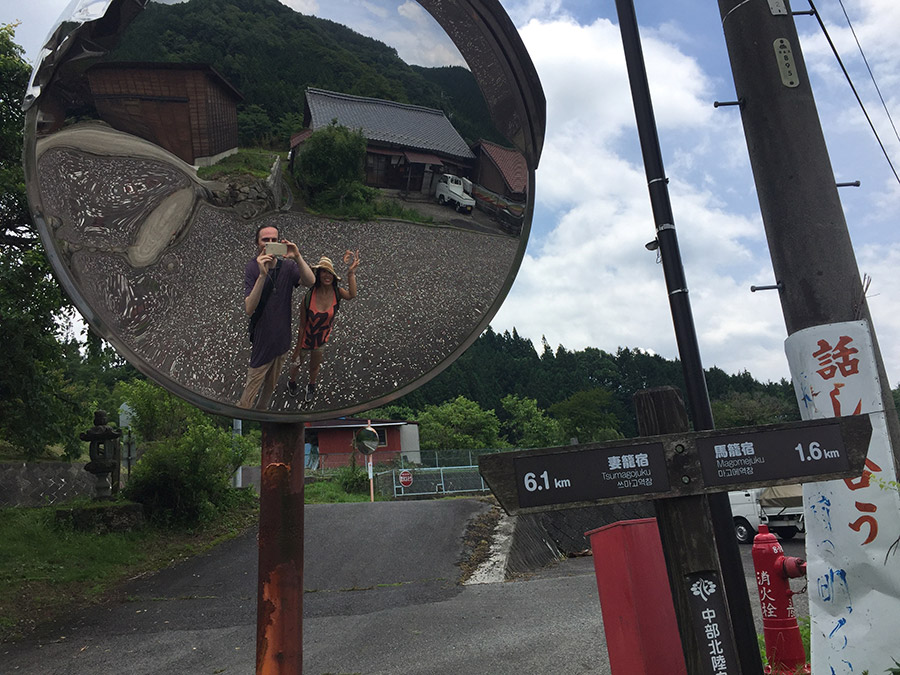
We were entirely in the middle of nowhere, and the music seemed to be coming from the mountain itself. I’ve never felt so much like I was on the island from Lost.
After a few minutes, which we spent wandering around and trying to understand where the music was coming from, it stopped.
Sometime later that day I realized the music had started at noon, so this must be the mountain’s way of announcing that it’s noon, like a giant cuckoo clock.
I had time in Kyoto on both ends of the trip. Kyoto is the cultural center of Japan, one of the only Japanese cities spared during WWII. It’s been said this was solely because the US Secretary of War had spent his honeymoon there.
My most anticipated sight to see in Kyoto was the Golden Pavilion…
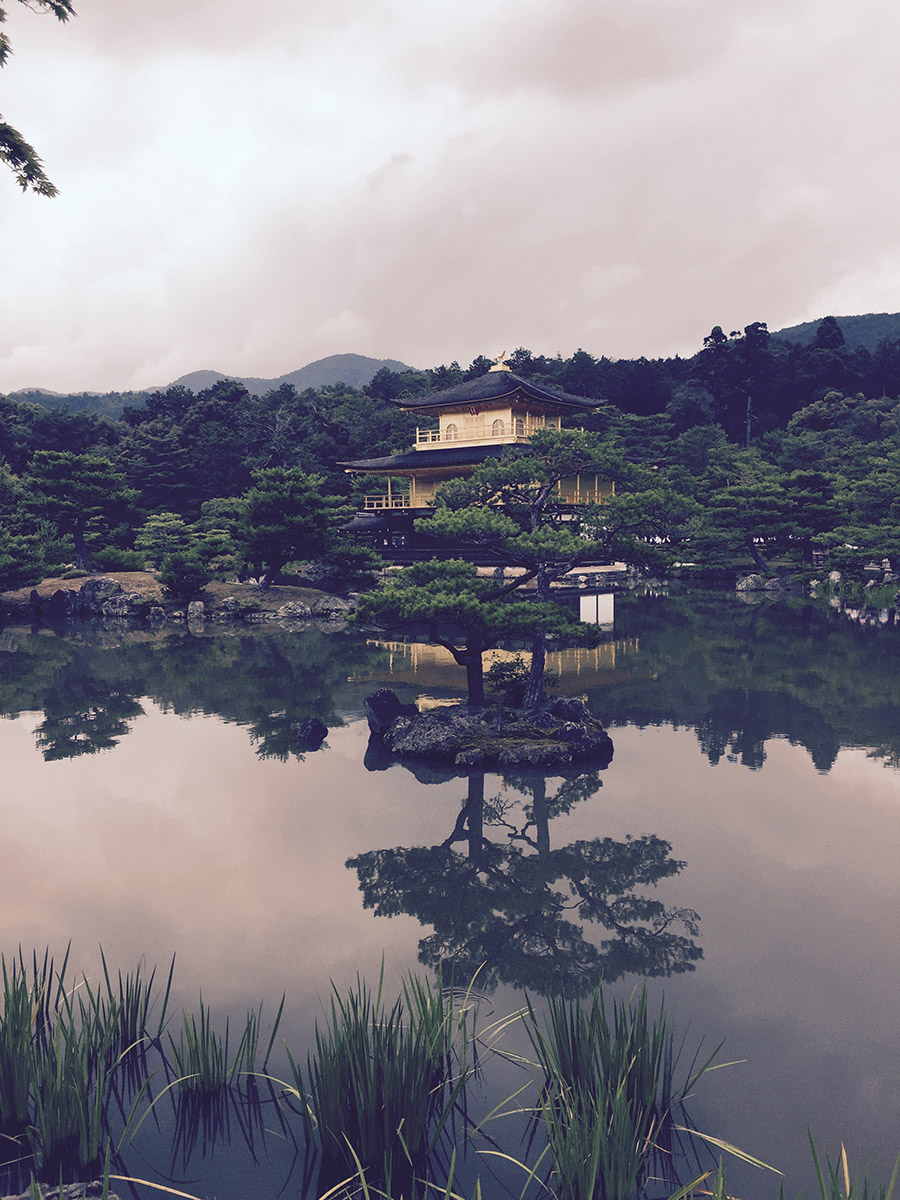
…which was indeed beautiful but absolutely swarmed with tourists.
Even more lovely was the Ryoan-ji zen garden, which is what all other zen gardens aspire to be...
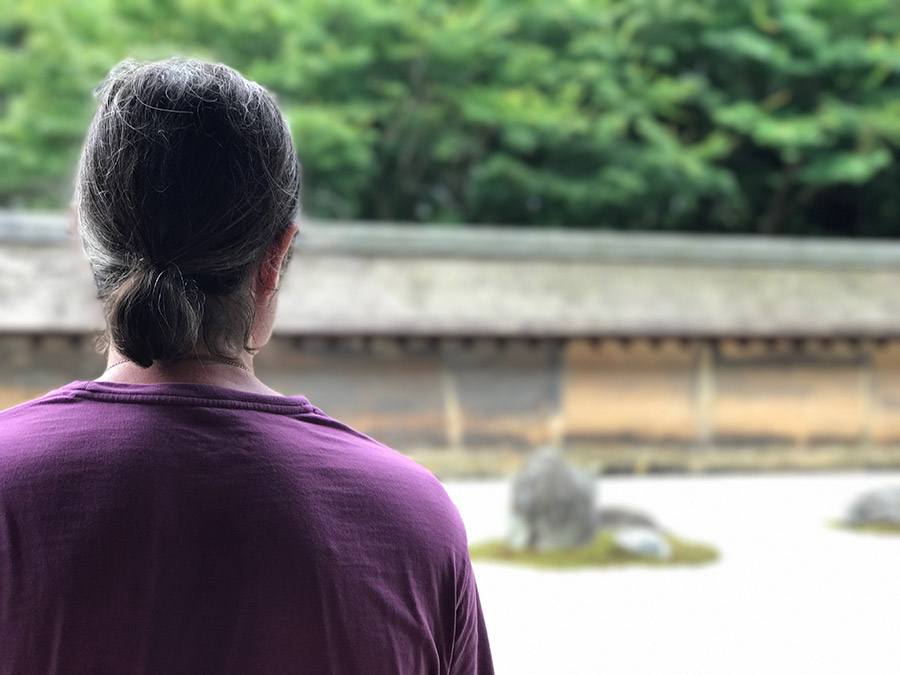
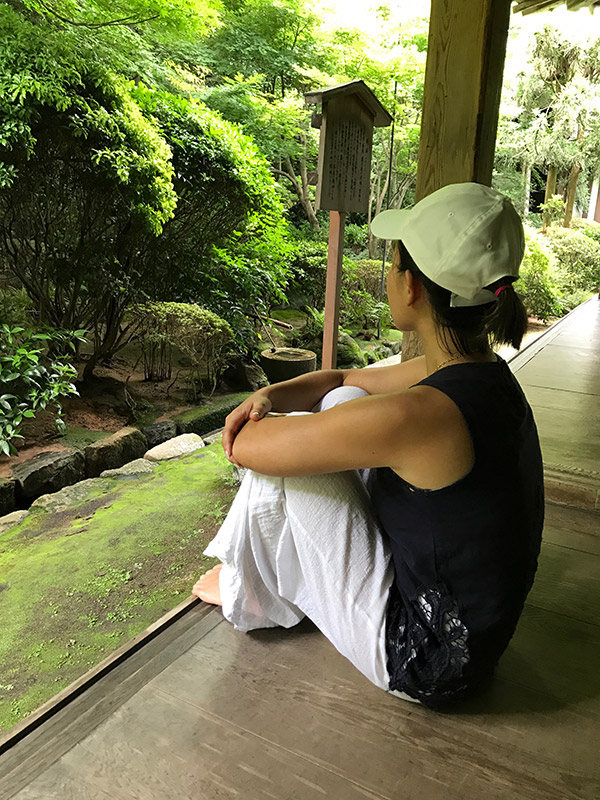
Pictures don’t really do this one justice, you need to sit on the wooden deck and soak up the peace of this place yourself. Meditating here was a special treat. How many monks sat in this same spot over the centuries? This isn’t the set up for a Japanese lightbulb joke, I’m actually wondering how many.
That afternoon the heavens opened up and drenched us thoroughly, and I learned an important lesson: Rain coats are absolutely worthless in a hot climate. The choice is between being drenched in sweat or drenched in rain, and I’d choose rain if I had the option to do that one over again. Better still, do what the locals are doing: Buy an umbrella.
In the evening we toured the Fushimi Inari Shrine and hiked up yet another unintended mountain. The tunnels of orange torii gates at the base of the shrine are what’s famous, but the path of torii actually leads all the way up Mt Inari and back down, which makes for a beautiful hike. In Shinto tradition, each torii gate marks a transition from the profane to the sacred, something to think about as you walk through thousands of gates in the light rain.
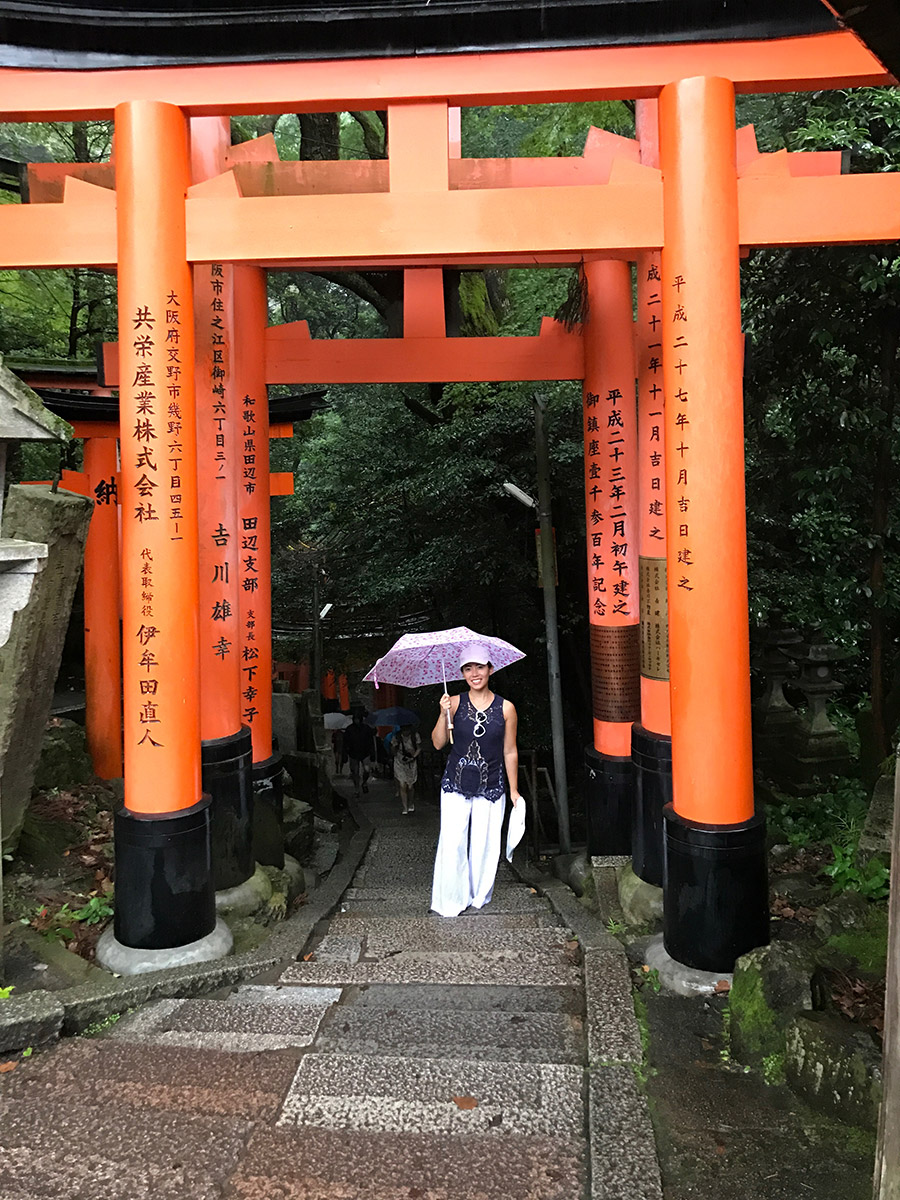
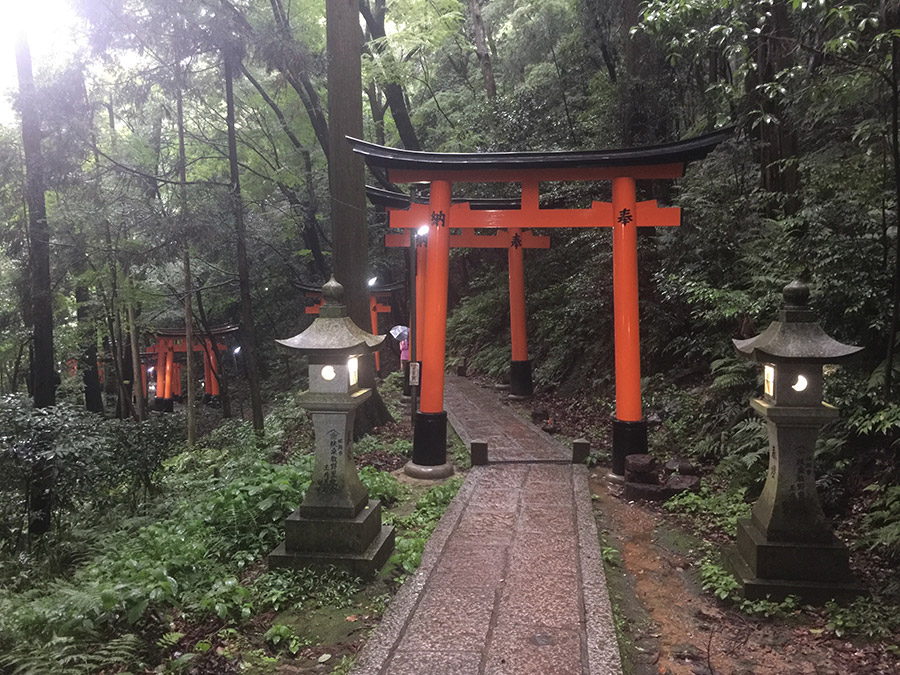
Inari is the Shinto god of foxes, so fox statues abound. Haunting graveyards dot the mountain, with tiny torii gates stacked in honor of the dead.
On the way back down the mountain, I noticed something strange:
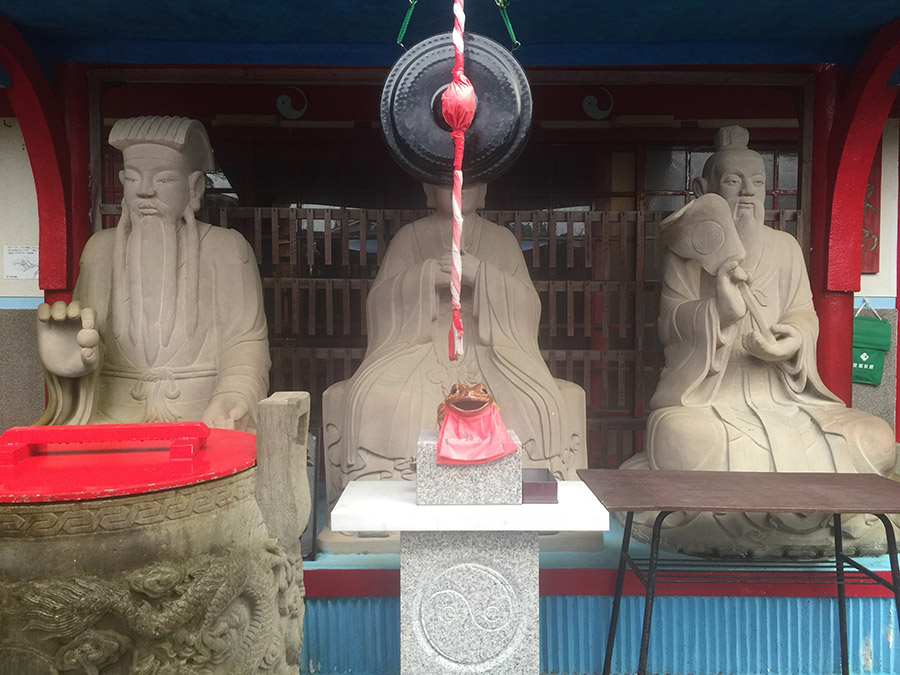
This was strange all by itself, but especially strange to see a frog statue in the Inari fox shrine. I looked around and found more frogs. Shit. I don’t think we’re in the Inari shrine any more.
We backtracked up the mountain and eventually found where we’d made a wrong turn, and continued our journey. But on the upside, now I can say I’ve been to a frog shrine.
On one of our many trains from site to site across Kyoto, we sat with a Columbian mother and her adult son from Washington D.C. We talked about our trips and I asked them what they’d seen that day in Kyoto. The son responded that they’d gone to the Buddhist temple, refusing to elaborate any further. I was laughing about this the rest of the day since saying you went to the Buddhist temple in Kyoto is like saying you went to the restaurant in New York.
That night we made our way to the Sagano bamboo forest in the Arashiyama. This is what it looks like in photos online:
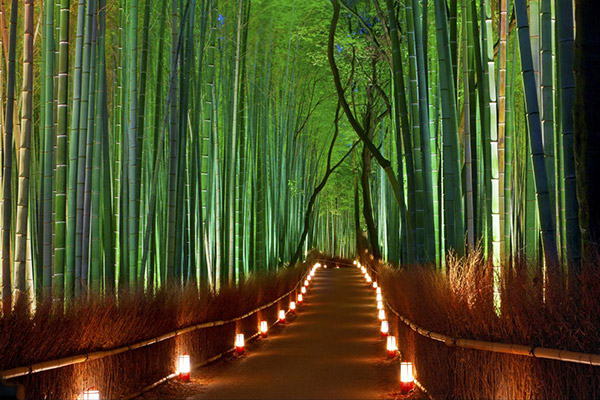
This is what it looks like in person:
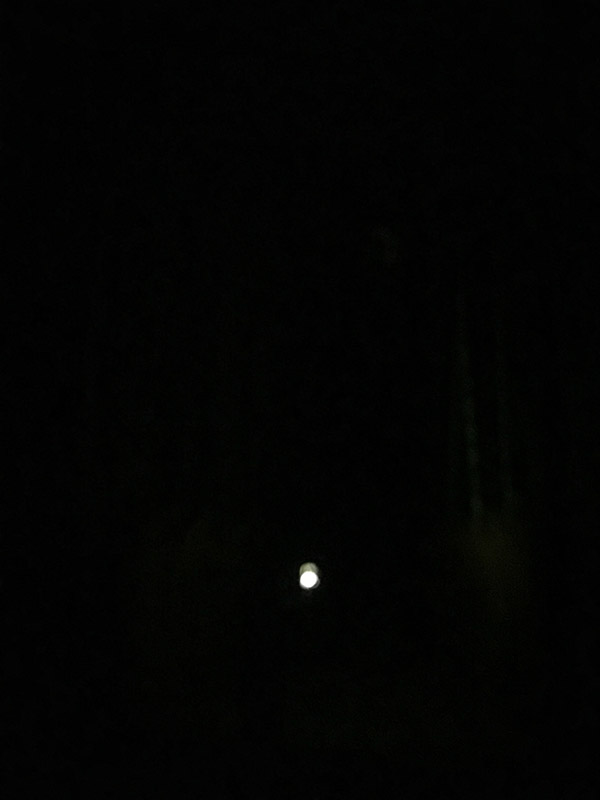
Apparently they only put the lights up when they’re taking tourism photos.
I actually quite enjoyed walking through the bamboo groves in the pitch black, occasionally hearing the sound of the bamboo stalks clinking together in the breeze. Linda was less enamored of walking around in “can’t see your hand in front of your face” darkness in the middle of the night in a strange place in a foreign country, which was understandable.
At one point we heard the sound of a car ahead and saw headlights cutting shafts of light through the gaps between the stalks of bamboo. I thought “Oh hey, there must be a road over that way-” right before I realized the car was coming up what I had thought until that very moment was a walking path that we were on.
“Get to the side get to the side get to the side-” I said to Linda as we hurriedly pushed ourselves flat against the stone wall and the approaching car bore down upon us.
The car went by within a foot or two of us and I clearly heard the woman inside scream as she passed by.
Well, that was strange.
Twenty minutes later we were walking past a graveyard on the same path when the woman came back down the “road” going the other way and we repeated our “press yourselves against the wall and pray” cat burglar move as she drove by.
I’m still pretty sure this was a walking path.
Nevertheless, we’d also got to see the kimono forest and a bitchin’ moonlit temple while we were trying to find the bamboo forest in the dark.
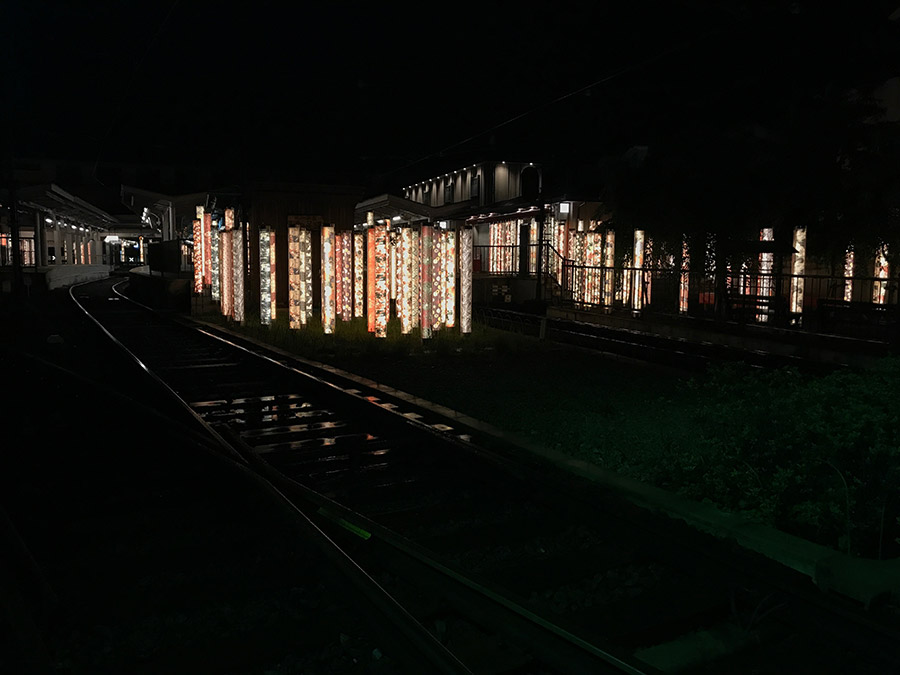
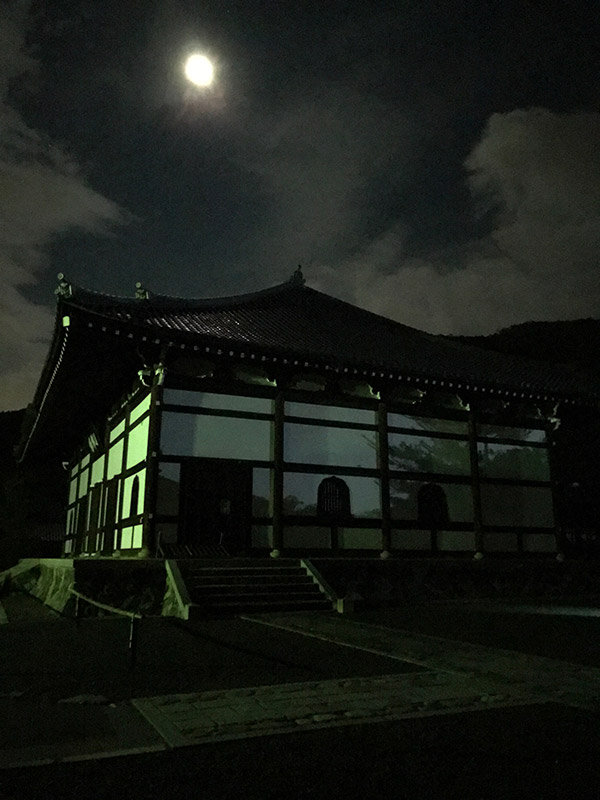
On the back half of the trip I was in Kyoto again, and this time I got to update my bucket list, crossing off “stay in a capsule hotel.”
Capsule hotels are a uniquely Japanese oddity where you can sleep in a tiny pod within a honeycomb of other pods:
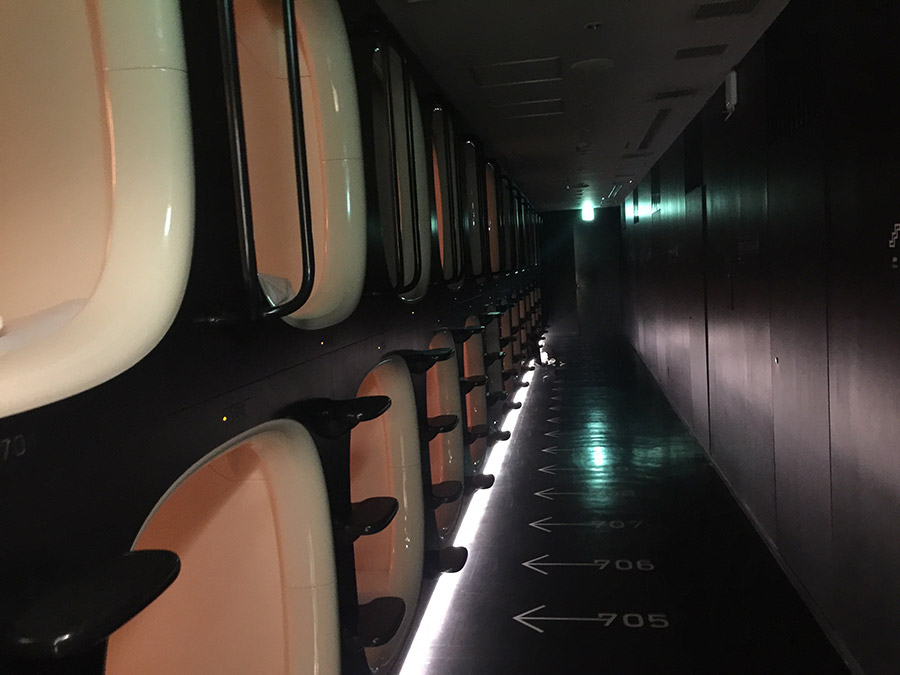
The floors are segregated by gender and upstairs there’s a locker room where you can store your luggage and take a shower.
After checking in, I was given slippers and a little card with a QR code on it, which opened my locker when held up to the scanner on the door. Luggage wedged inside, it was time for a shower.
I stepped into the shower stall and locked the door behind me. There was a vestibule with a small bench to toss my clothes on before I opened the tiny shower door and stepped inside. Bizarrely, there was another glass shower door on the opposite side. I opened this, which led to a little open hallway that connected all the showers. What? This empty hallway was only accessible from within the showers and didn’t lead anywhere else, only from one shower stall to another. I decided this must be some sexy Japanese thing I didn’t understand at all.
I forgot to mention that they gave us all matching pajamas. After my shower I put the pajamas on because what the hell am I doing here if I’m not wearing the pajamas?
I felt like I had joined some weird Japanese hotel cult. And since the PJs were made for a Japanese-sized man I also felt like an adult wearing a child’s pajamas like Tom Hanks in Big.
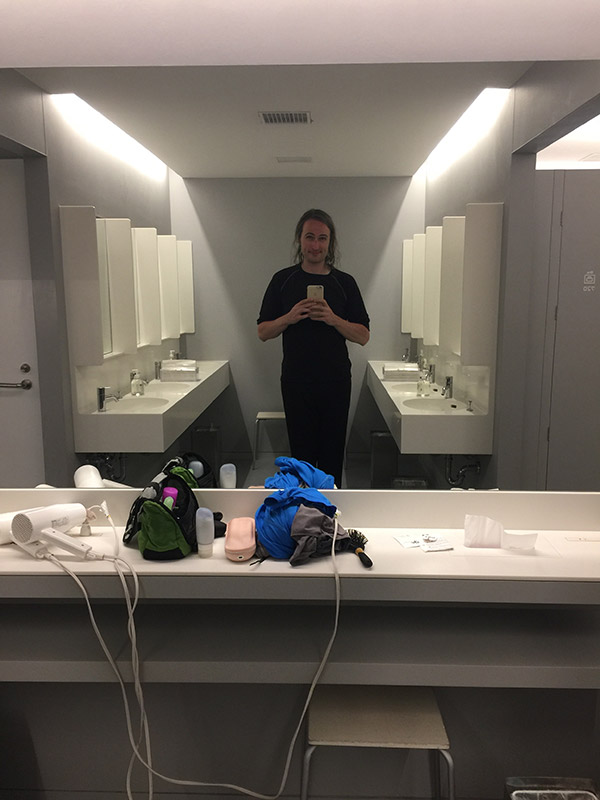
On my way out I passed some giggly German tourists. I may have looked ridiculous but what they didn’t understand was that this was all completely avoidable and entirely my own doing… wait, what?
Into the pod.
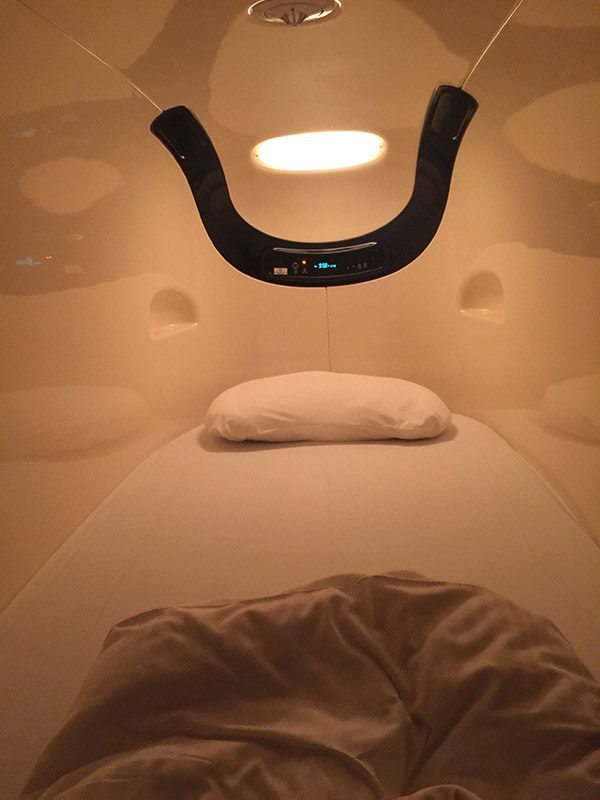
To answer the question absolutely everyone has asked, yes the pod was long enough for me to sleep in. I was fully prepared to sleep with my feet sticking out the end but this was not necessary. It was also tall enough for me to sit up inside, which was nice. You roll down a shade at the open end of the pod and there you are, sleeping in a tube in Japan.
Was it comfortable? Not really, but only because Japan doesn’t have any comfortable beds. I stayed in business hotels, AirBnBs, ryokans, hostels, pretty much every kind of lodging possible in Japan and all of their beds are rock hard. It’s just a Japanese thing.
At 4:30am, the fatal flaw in the capsule hotel model became apparent. Sleeping in a giant fiberglass honeycomb full of other men is not the most soundproof environment you will ever enjoy. And at 4:30, somebody’s phone alarm started to go off. A very loud, very upbeat song that went something like “Good morning! Na na na na na na good morning! Na na na na na na na na good morning!" This went on for three minutes straight until this person shut it off. Only they didn't shut it off, they just hit snooze. So ten minutes later we all got another three minutes of "Good morning! Na na na na na-" before they hit snooze again. This went on for two hours until that person was probably murdered.
Mt Koya, aka Koyasan, is a holy mountain in the center of Japan, covered in hundreds of temples. You can spend the night in many of these. We were all over this.
Koyasan, the town, is as quaint as you might imagine for a town that’s just a hundred temples and a couple little restaurants up in the beautiful mountains.
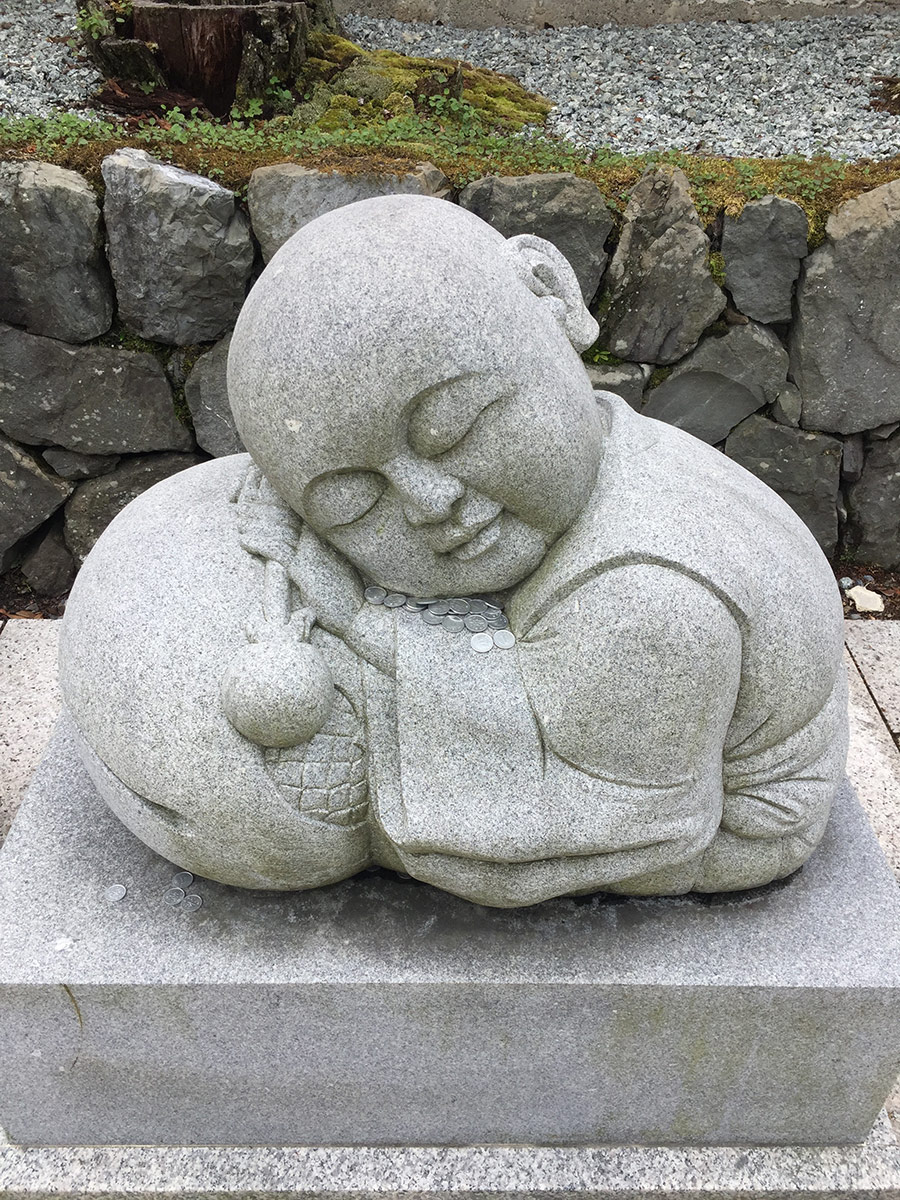
We were welcomed into our temple and issued slippers. This is standard in Japan. Almost nowhere are you allowed to wear your shoes inside, and I screwed this up countless times. Very rude. Unfortunately, at no point was I ever given slippers larger than 2/3rds the size of my foot. So you spend a lot of time padding around and trying not to accidentally kick your slipper through the window or fall down the stairs.
The whole slipper thing is to prevent you from wearing your filthy outdoor shoes inside and tracking all that Japan everywhere. That would be very un-Japanese. Inside, when you get to the bathroom, there is another pair of slippers inside for you to change into. I’m not sure if this is to prevent you from tracking all the inside all over the bathroom or to keep the bathroomness in the bathroom. The slippers in the bathroom are even smaller than the slippers you get at the front door, so I was only able to fit four toes into them. Opening the toilet stall, I fully expected to find an even smaller pair of slippers inside there, which would only fit on my big toe.
The service in the temple is very elaborate. At dinner time, they bring you tray after tray of fancy little foods, a flood of little stacks of trays, too many courses to count:
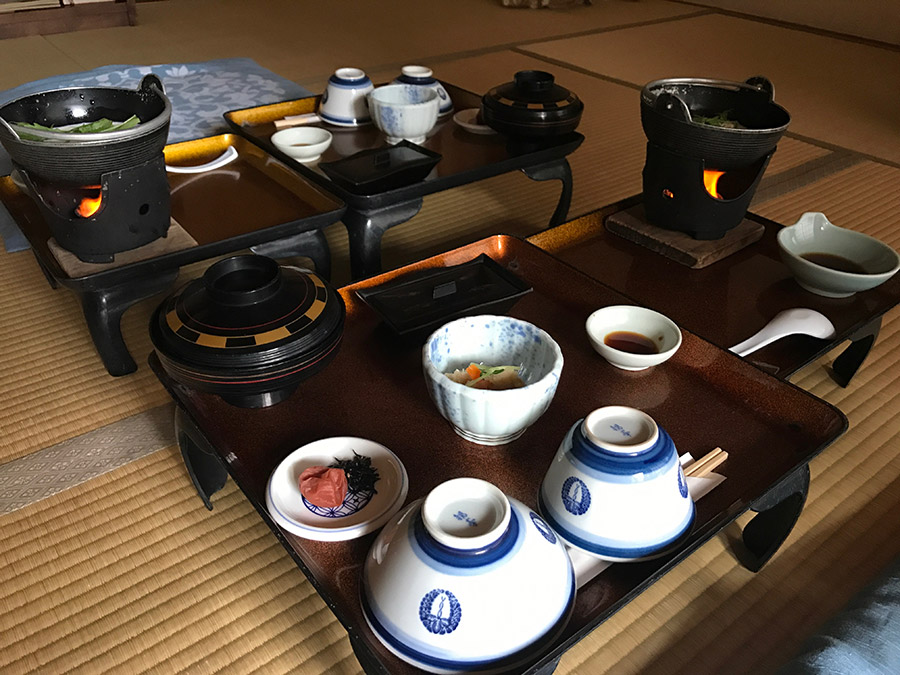
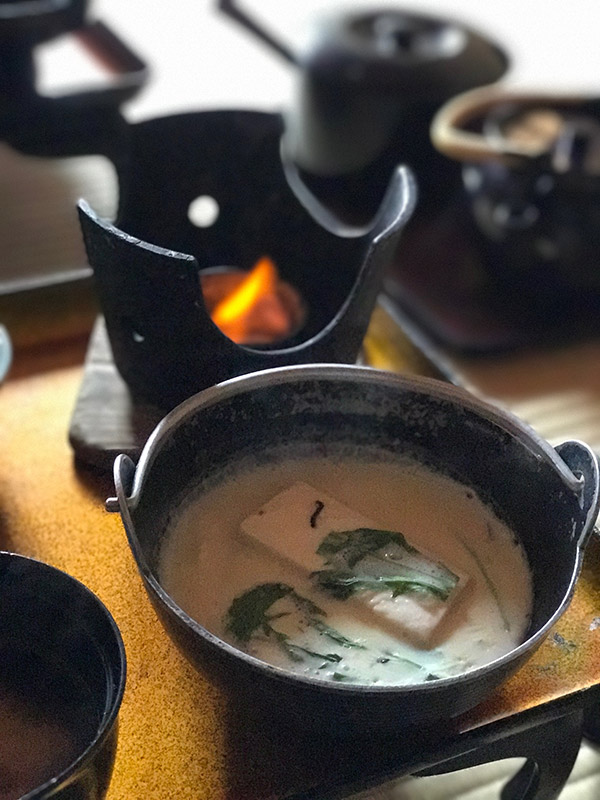
This seems to be very authentic traditional Japanese food, which is both beautiful and very strange.
After dinner they come and take all those little trays away. At bedtime they come in and roll out your futon mattresses on the floor and make them up for you. The blanket has a weird sheet on it like an inside-out fitted sheet with the open end on top. Sort of like the blanket is wearing socks.
Before bed, we went out for a nighttime tour of Okunoin cemetery, the holiest place in Koyasan. Two hundred thousand tombs stand between towering cedars, the pathways lit up by stone lanterns, each one carved with a different phase of the moon. Our guide was a monk from a nearby monastery, who would show us noteworthy graves and statues while explaining the concepts of Shingon Esoteric Buddhism, the sect began by the revered founder of Koyasan, the monk Kobo Daishi. He explained that the moons cut into the sides of the lanterns served as a reminder of how your mind is different every day, like the moon. I quite enjoyed his talks, reflecting that Shingon seemed to combine elements of both of my long-term spiritual interests, Taoism and Buddhism.
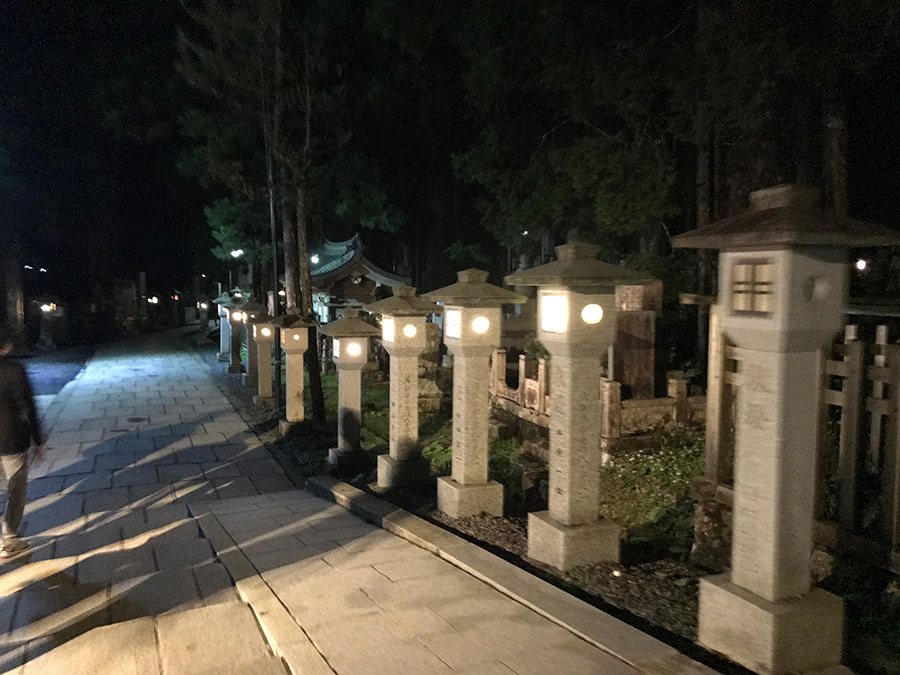
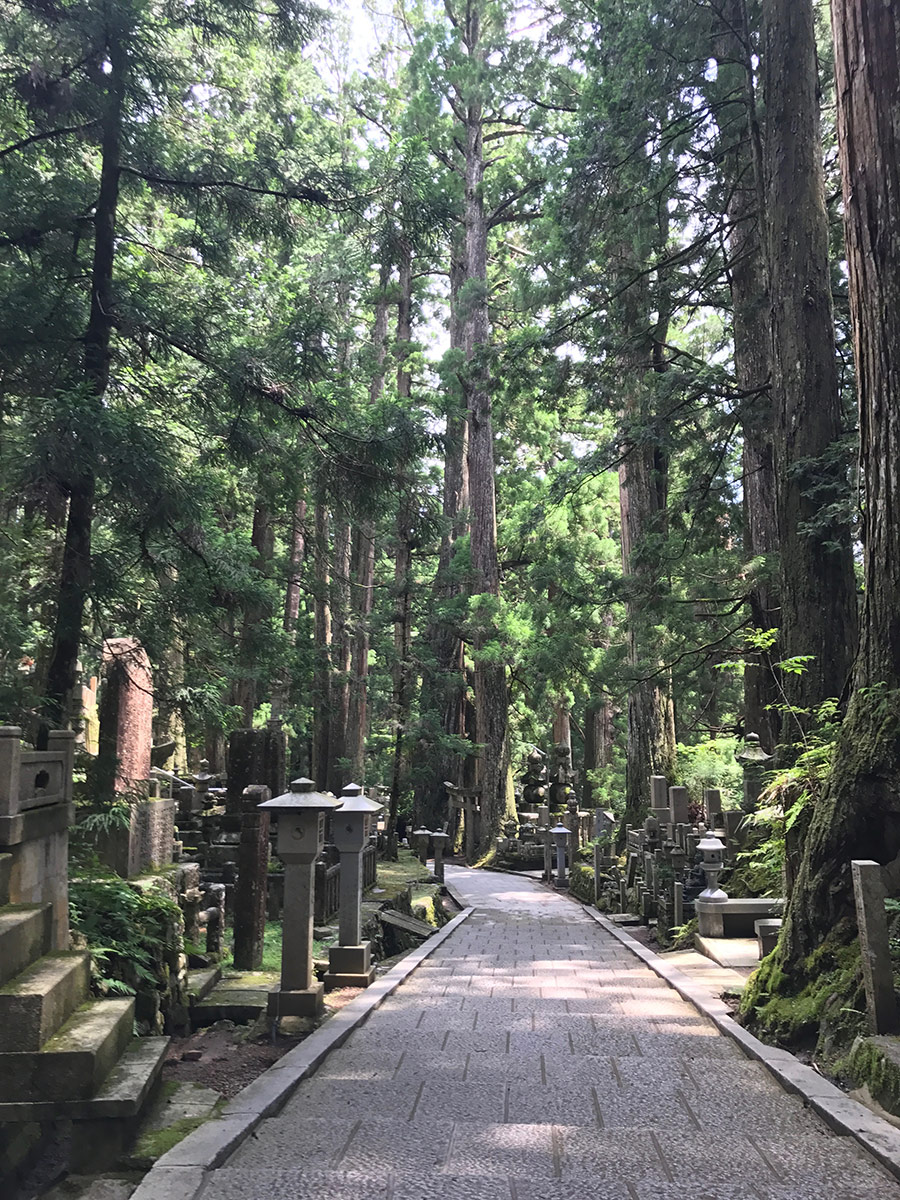
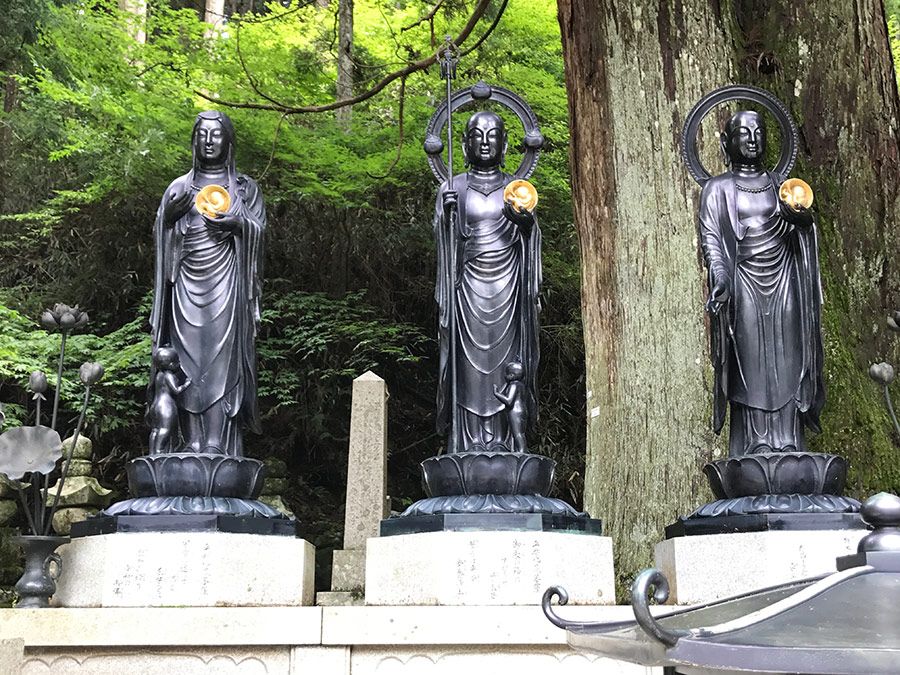
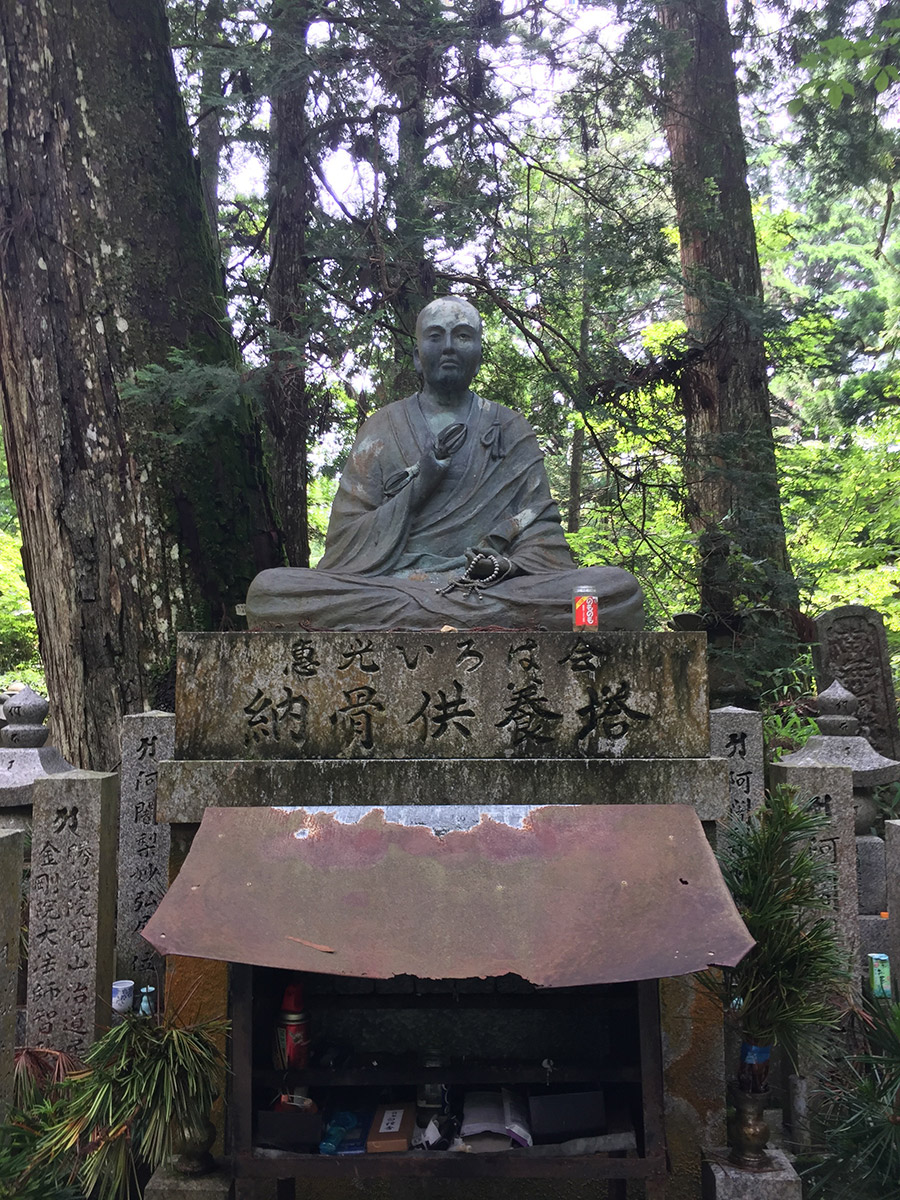
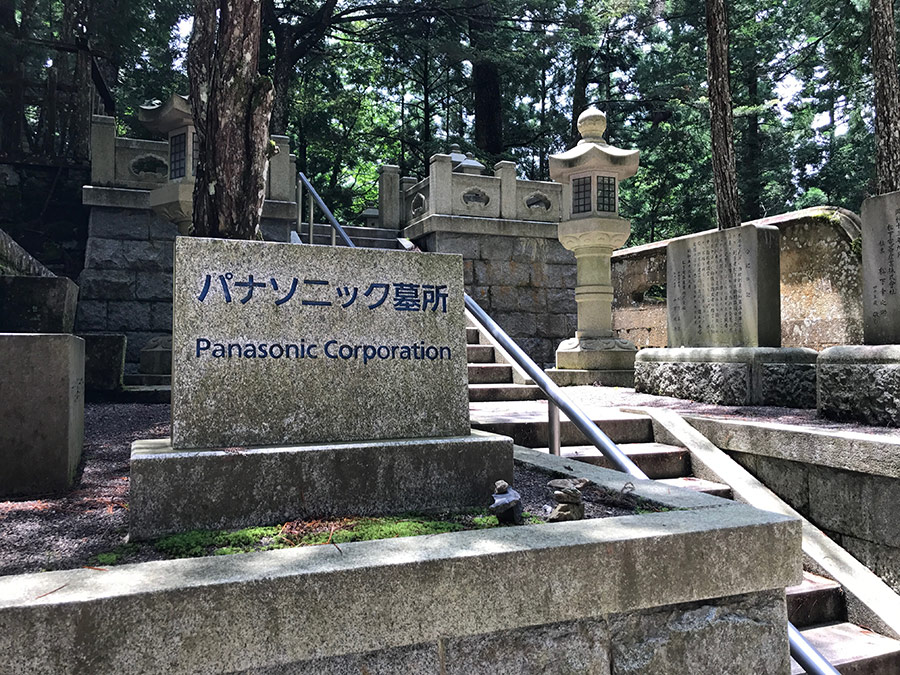
Before leaving for the trip I’d seen photos of this gravestone with Panasonic Corporation on it. I’d figured this was a particularly crass form of advertising, or perhaps an over the top sign of Japanese workers’ loyalty to their employers. But what I didn’t learn until I was standing in front of it is that the founder of Panasonic was actually a devout Shingon follower, and this grave was meant to honor and impart a spiritual blessing for all of his employees, whom he regarded as family. Aww.
The cemetery grows holier and holier as you approach the inner sanctum. Before crossing the river to the innermost section, you take a moment to pour water on your choice of Buddha statues, representing the cleansing of your higher nature before you enter the inner sanctum.
Across the river there are a few large temples, and up on the hill sits a small temple were Kobo Daishi is said to sit in eternal meditation, having been there since the year 835. Every morning the monks bring him breakfast. Interesting. We paused for a moment of meditation and prayer, and our monk guide asked us to pray for whatever we most wanted in the world. Linda prayed for nice things for other people, totally showing me up while I prayed for enlightenment.
Crossing the river again to leave the inner sanctum, we turned and bowed, pausing to thank Kobo Daishi. I said “Thank you, Kobo Daishi” and a voice said back “You’re welcome Sean, I will help you.” Whoa. Did anyone else hear that? Any doubts I had were washed away as I was filled with absolutely overwhelming flood of emotion. Okay, that just happened. I’m in touch with Kobo Daishi now.
Our friendly monk tour guide in his snazzy Nikes drove us back to our temple, so we could get back inside before the doors were locked for the 9pm curfew. This particular temple is famous for having an outdoor onsen (a communal bath) and a natural hot spring. I went to check this out and walked in on a shit-ton of naked old Japanese guys just standing around, being naked. Nope! I spun on my heel and walked right back out, which is very culturally sensitive.
I wanted to experience an onsen at least once while in Japan, so I set an alarm for 4am, when elderly nakedness sleeps. Right before the alarm went off I woke up with a start, realizing the night before in Kyoto I’d set my phone alarm to loudly play The Vapors’ “Turning Japanese,” which I thought was hilarious at the time but realized wouldn’t be that cool blaring through a giant silent temple with paper-thin walls at 4 in the morning.
The outdoor onsen was empty and I enjoyed a nice soak as the sky gradually lightened in the pre-dawn hours.
At 6am we joined the temple’s monks for a morning meditation, complete with chanting and a fire ceremony. As I meditated with my eyes closed, Kobo Daishi walked up out of the dark void and sat beside me. I asked him what I needed to do next on the way to enlightenment and he said “Go into the love.” Huh. Where is that? I pondered this for a moment and began to focus my attention on the center of my chest. My point of awareness became very small as I traveled into my heart, which expanded out around me like a great hall. In the center, a flower petal grew and multiplied until it bloomed into a beautiful white lotus flower.
We returned to our room and the many, many courses of breakfast were served.
Our stomachs full of weird little Japanese treats, we lost track of time talking and then were very politely kicked out at 9am, free to spend the day exploring Koyasan:
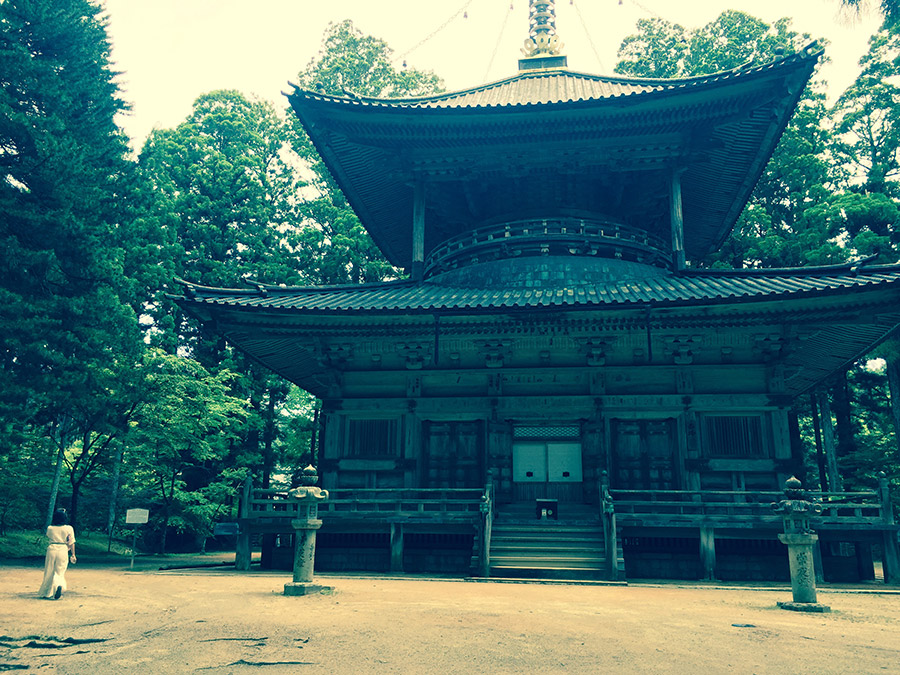
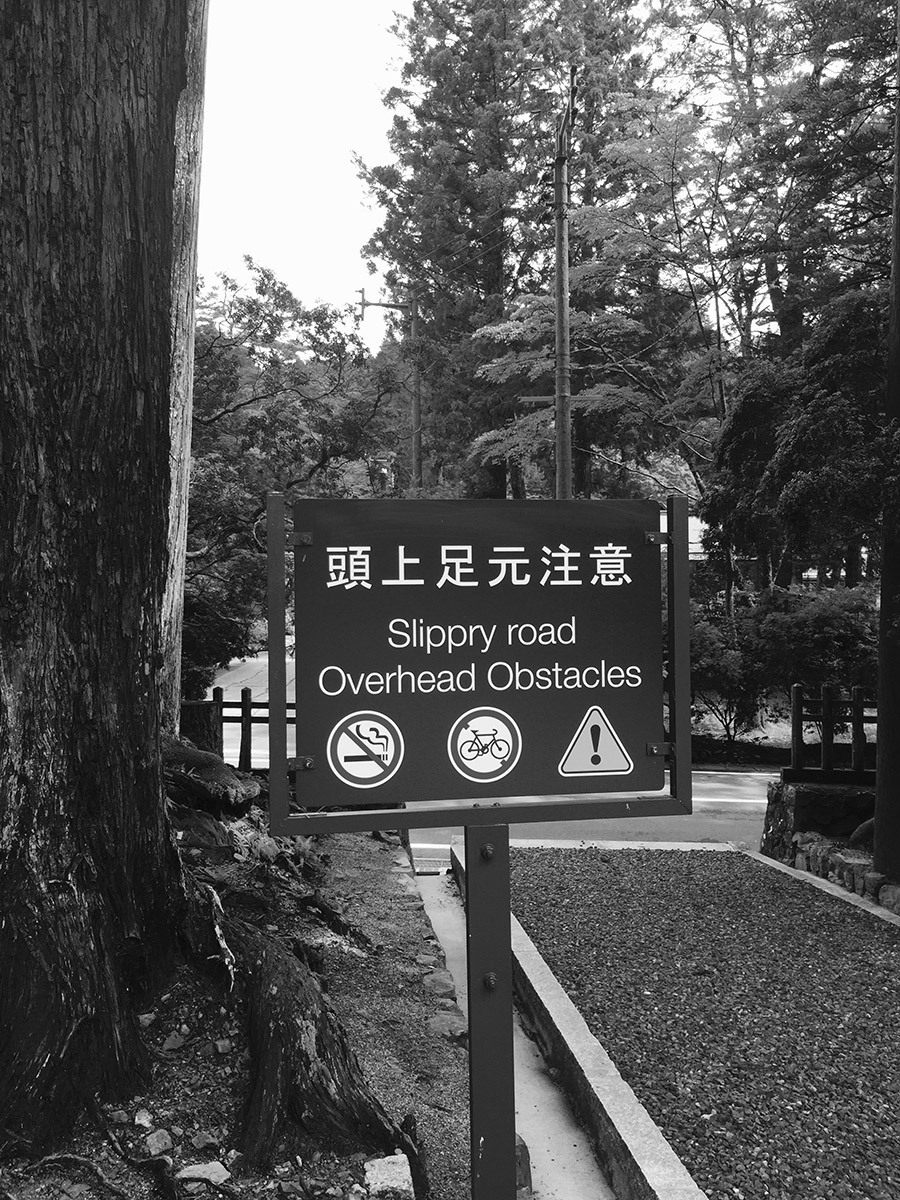

We got to enjoy the beautiful rock garden at Kongobu-ji and have lunch in the awesome little cafe we’d stopped into the afternoon before for the juiciest peach on record. The owner was a lovely Japanese man who came out and played some kind of accordion for no apparent reason. He was so happy that we liked his restaurant.
We made it back to Okunoin and were able to see the cemetery again in the daylight, this time getting to go inside the various temples. One haunting feature of the temples were the rooms filled with thousands upon thousands of glowing lanterns hung there in honor of the dead.
I would spend the rest of the trip reckoning with my newfound access to an ancient Japanese spiritual teacher, who spoke to me many more times over the course of the trip, providing profound and personal insight. As I read about him I realized that I had unconsciously chosen an itinerary that visited all of the important places from Kobo Daishi’s life, including his temples on Miyajima and the Todaiji Temple he’d been the head of in Nara:
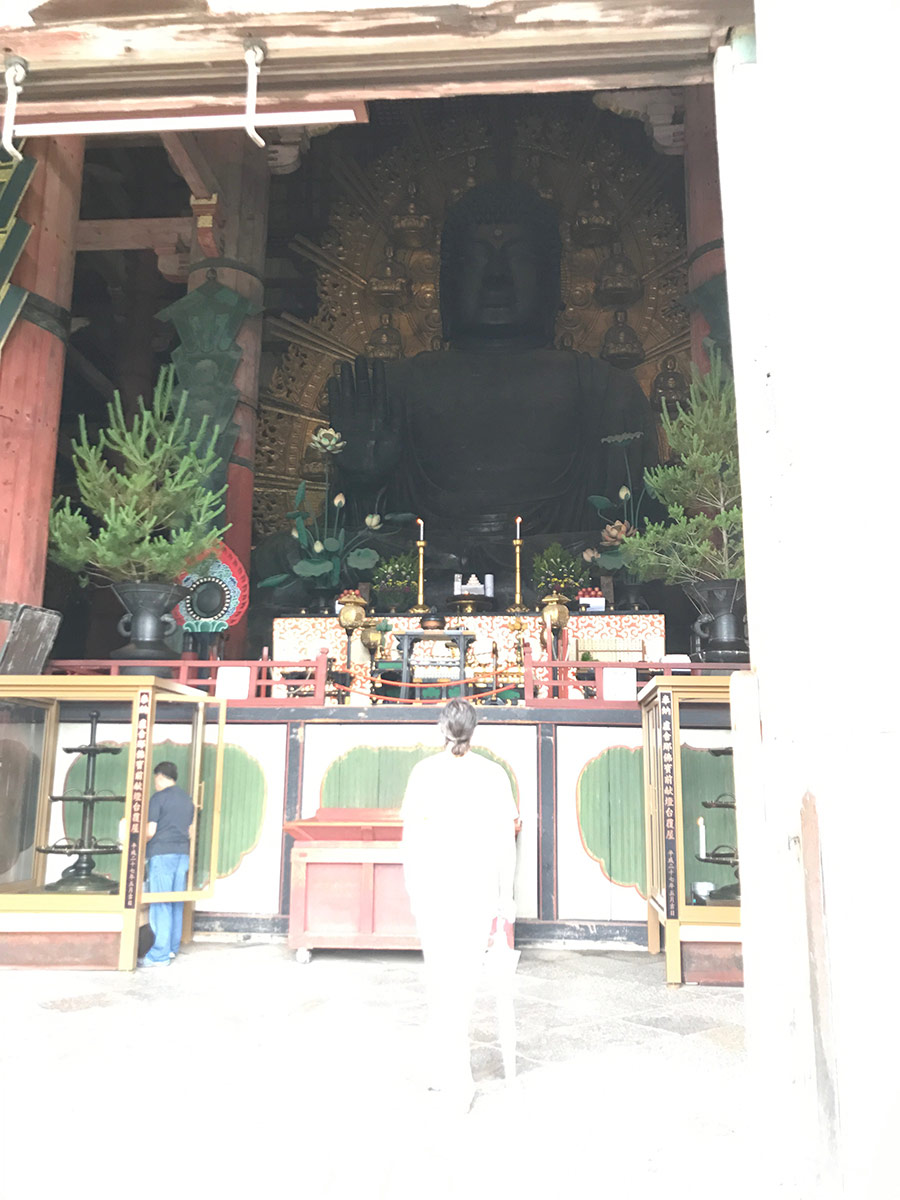
All this, in spite of never having heard of him before that night’s cemetery tour. I wondered if perhaps I’d followed him in a past life in Japan. It seemed so. It also became clear in retrospect that the spiritual work I’d done over the past year was preparing me directly for this experience. Life is fascinating and strange.
“Where was that great picture-”
Yakushima Island.
Yakushima is a small island off the southwest coast of Japan. Not many go there, since you have to travel the entire length of Japan to Kagoshima, then take a ferry or a jetfoil to the island. It's far away from everything.
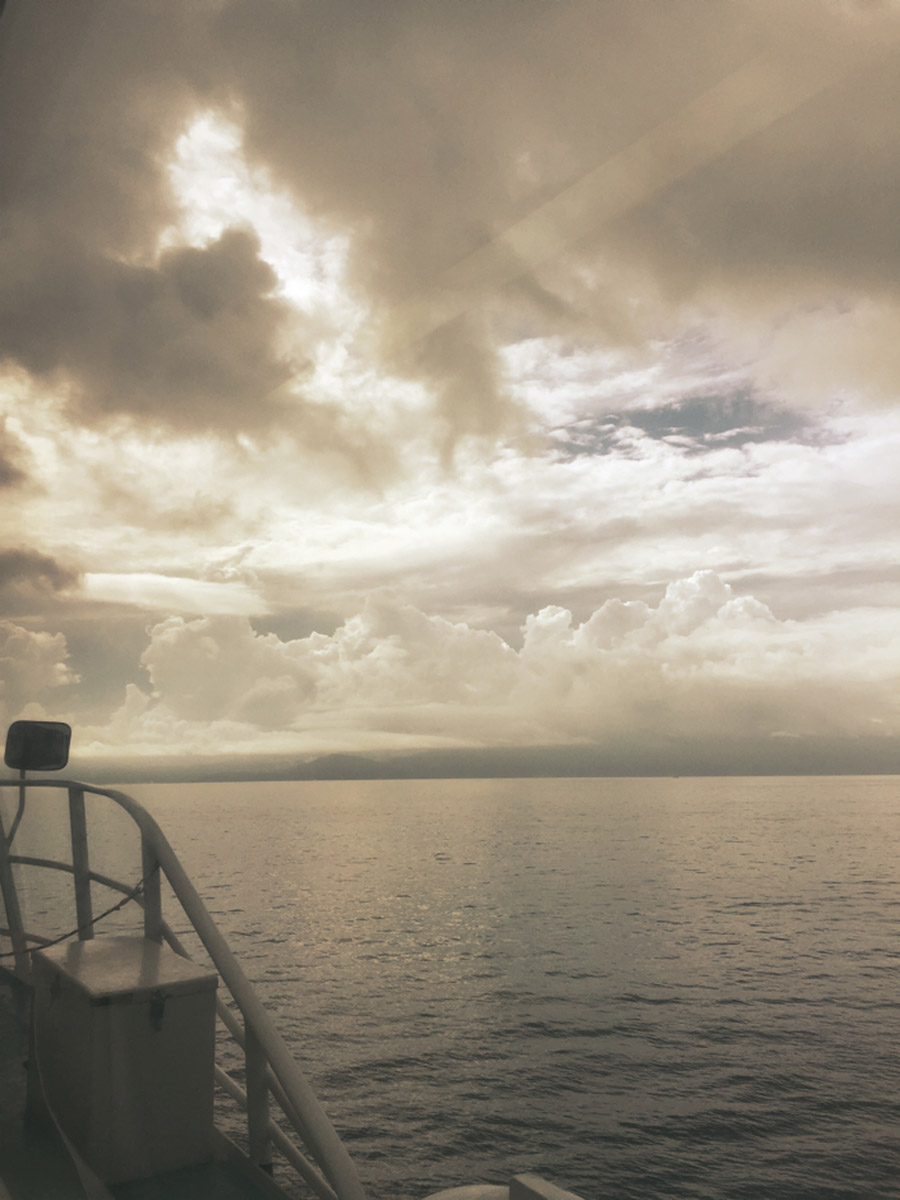
The volcano at Kagoshima was active and billowing smoke, but it was too cloudy to get a great picture of this. But this being Japan, we passed another active volcano along the way:
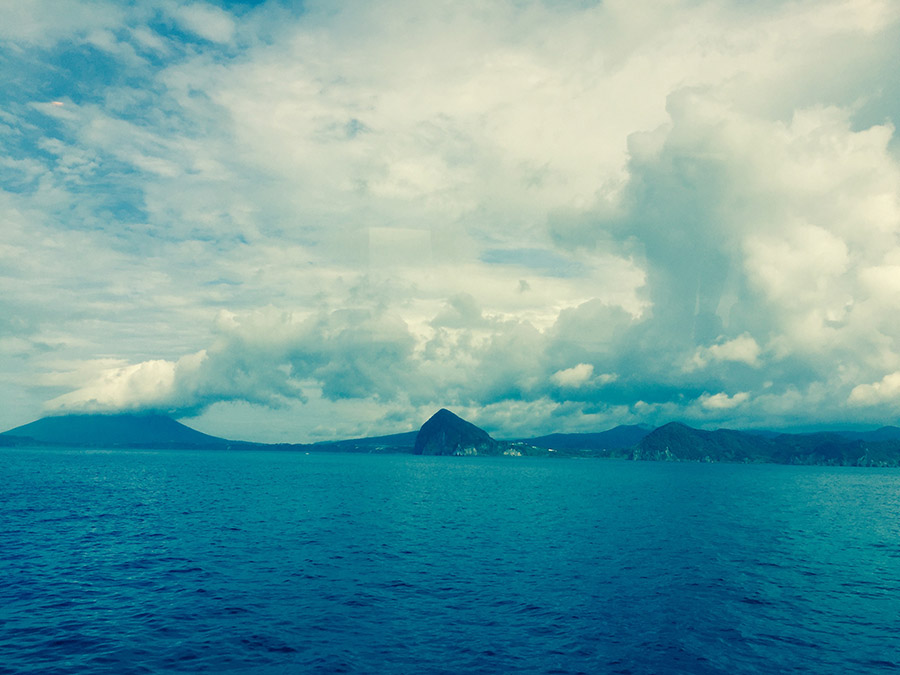
Two quick hours later we were at the port on Yakushima. Our rental car lady was going through all the features of our ridiculous car. It was eight thousand degrees Celsius.
The cars in Japan were a strange lot. First off, there are no American cars. The only one we saw was a Jeep in someone’s garage near Magome. There are a few BMWs here or there. Everything else is Japanese.
But not the Japanese cars you’re used to seeing. The vast majority of the cars there were strange, boxy little quasi-vans. The Nissan Cube or Scion xB are the closest I can think of for similar cars sold in America. But there, 90% of the cars fell into what would be a novelty sub-sub-sub category here in the US. It seemed like they’d started out with tiny little compact cars, and since the roads are so narrow they couldn’t make them any wider, so they’d compensated by just making them taller.
Like the Toyota Noah:
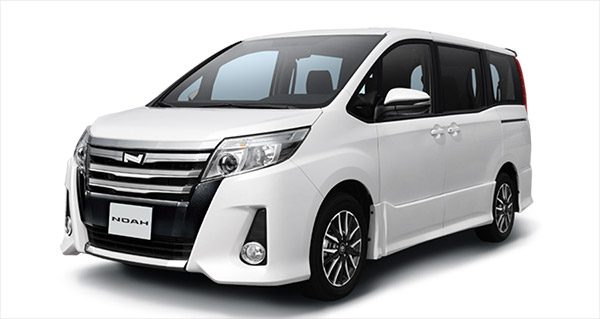
What the hell is that? I know it looks like a minivan but it’s the size of a Corolla. No way you’re fitting two of every animal into that thing.
The model names in Japan are fantastic. The March. The Alto. The Pastel. The Esse.
Yeah, there are Japanese people driving around right now in a Daihatsu Esse. Don’t you know they’re loco?
Our rental car was a Honda Life. That’s definitely the worst tattoo you could ever get.
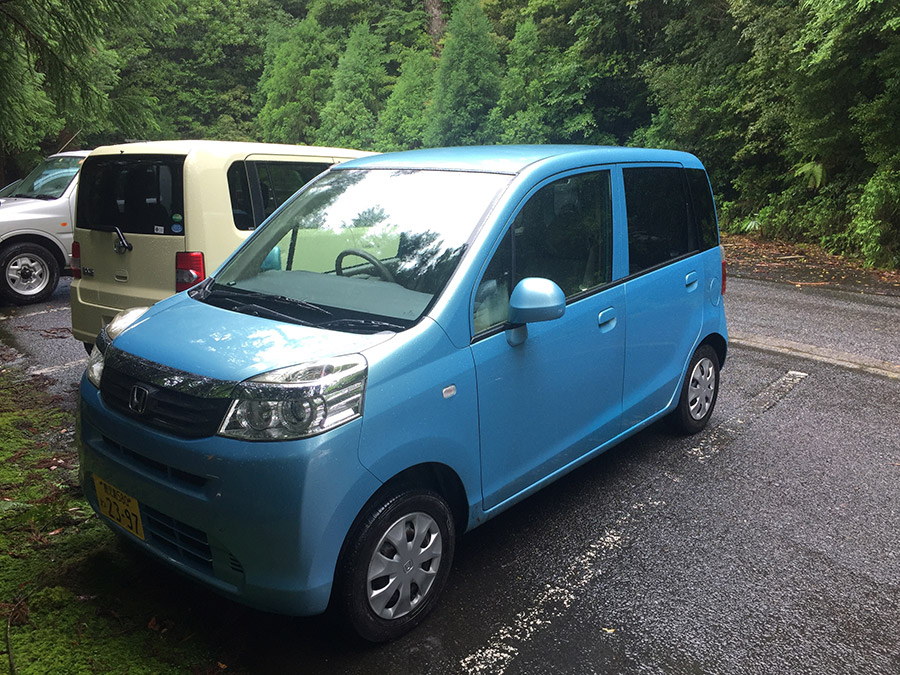
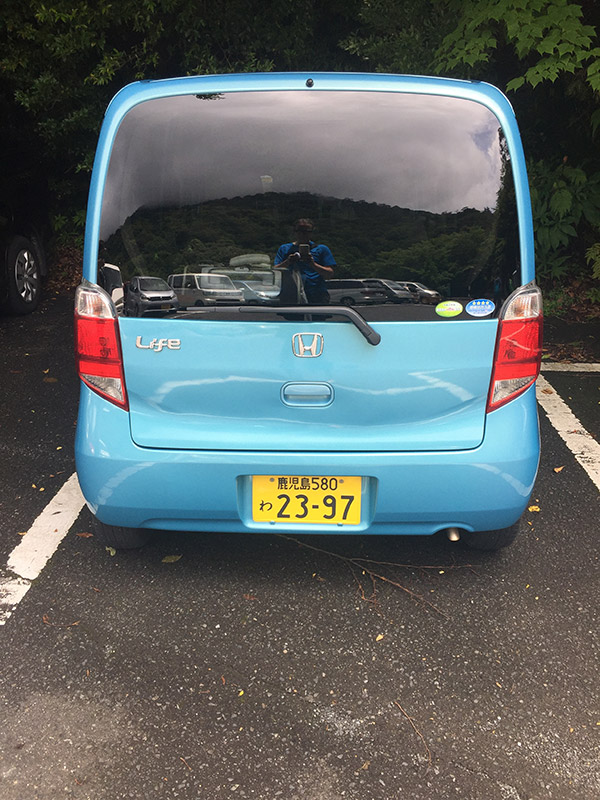
I know when people drive little cars they like to joke that they’re toys. I’ve driven a lot of different cars in my life but this was the first one that really felt like you needed to put quarters into it to make it go. And it wasn’t even that small, just weird.
We wasted no time winding up the car and tooling up the mountain to the Shirantani Unsuikyo hiking trail, through the forest that inspired the artwork in Princess Mononoke.
As soon as we got out of the car at the trail head, the sound of the cicadas was deafening. WHAT? THE SOUND OF THE CICADAS WAS DEAFENING. As we hiked through the beautiful mossy forest, the sound would ebb and swell dramatically all around us, like we were swimming in the ocean. I’d heard cicadas before, but never ten billion cicadas all at once. The sound would wash right through you. After two days, you sort of went deaf and couldn’t really hear it any more, until it suddenly stopped. Then you’d know for sure there was a dinosaur standing behind you.
Yakushima was a mossy green wonderland:
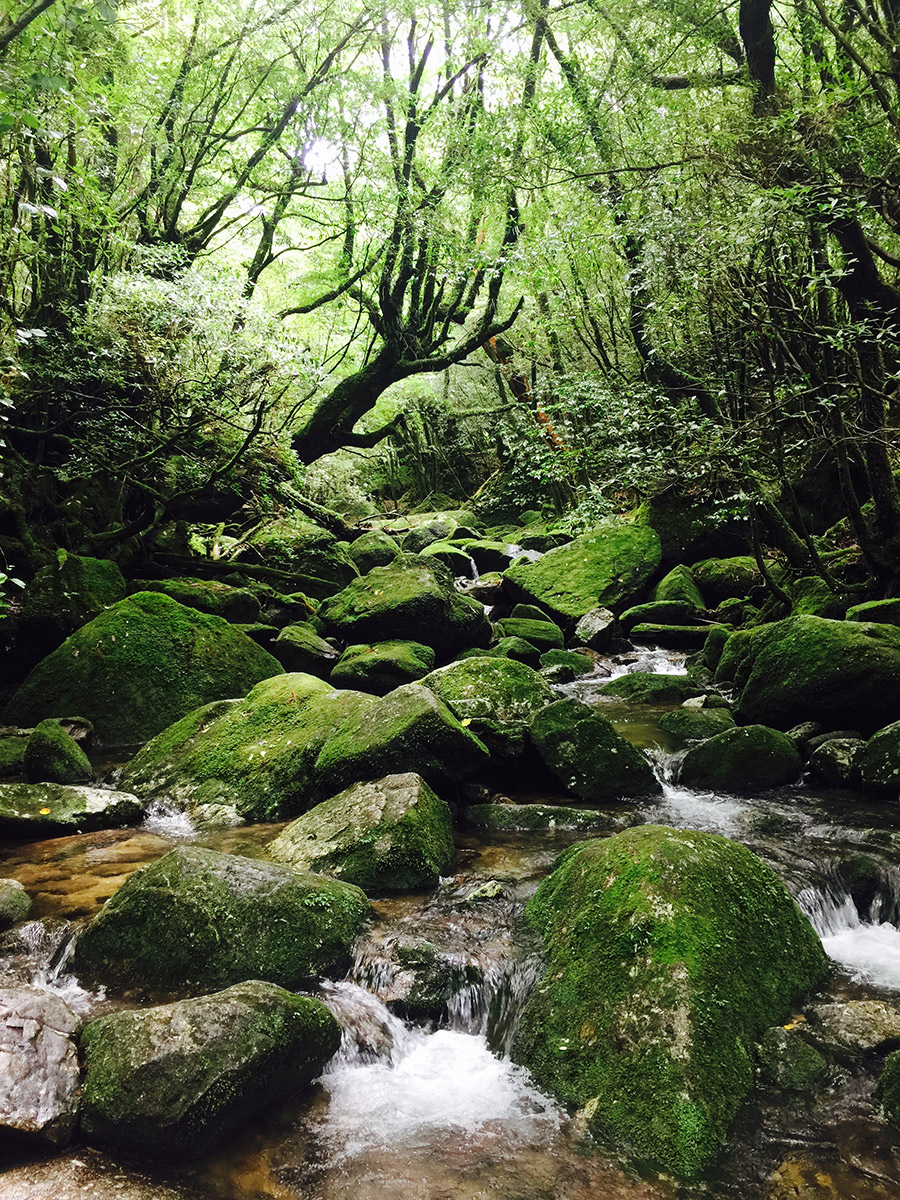
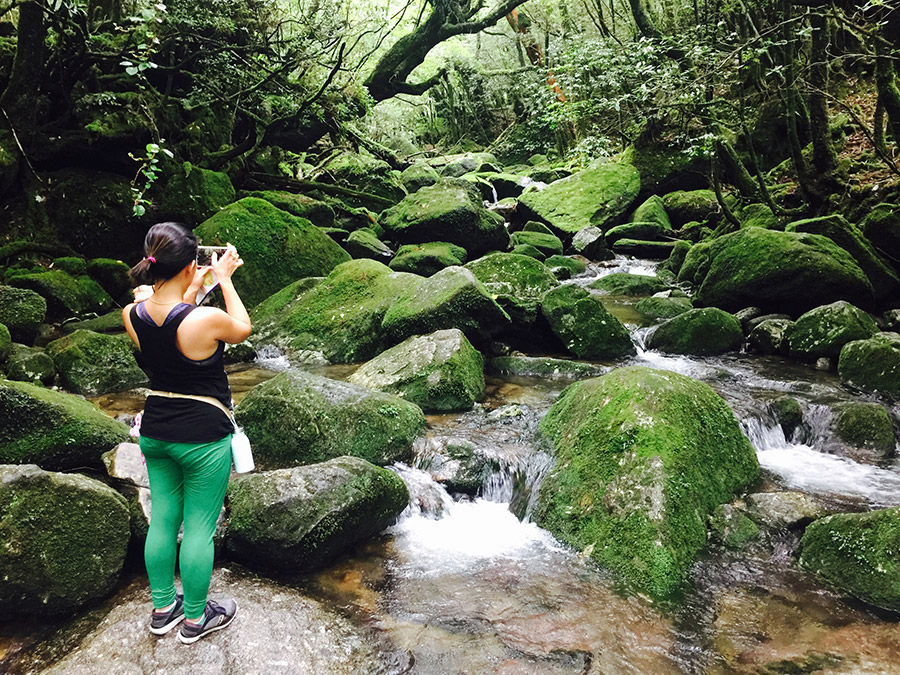
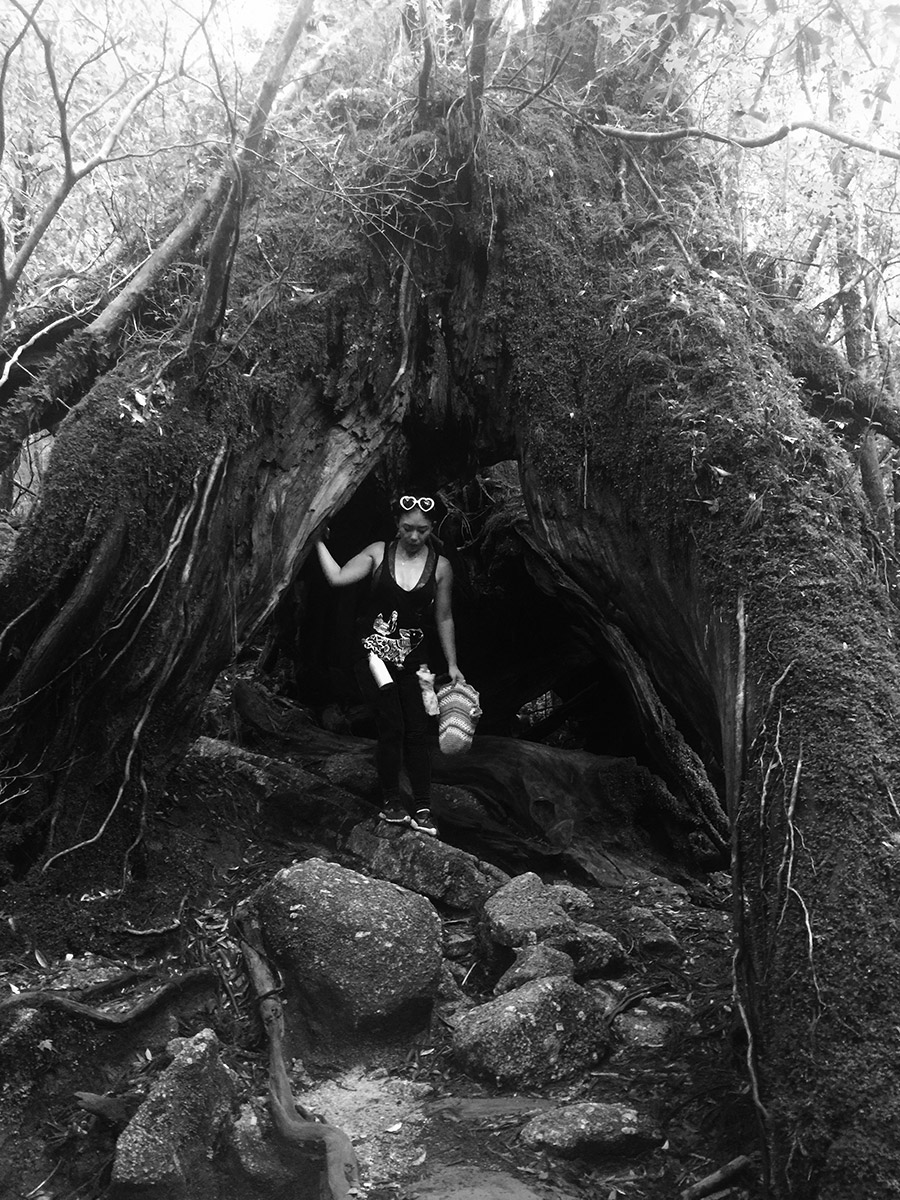
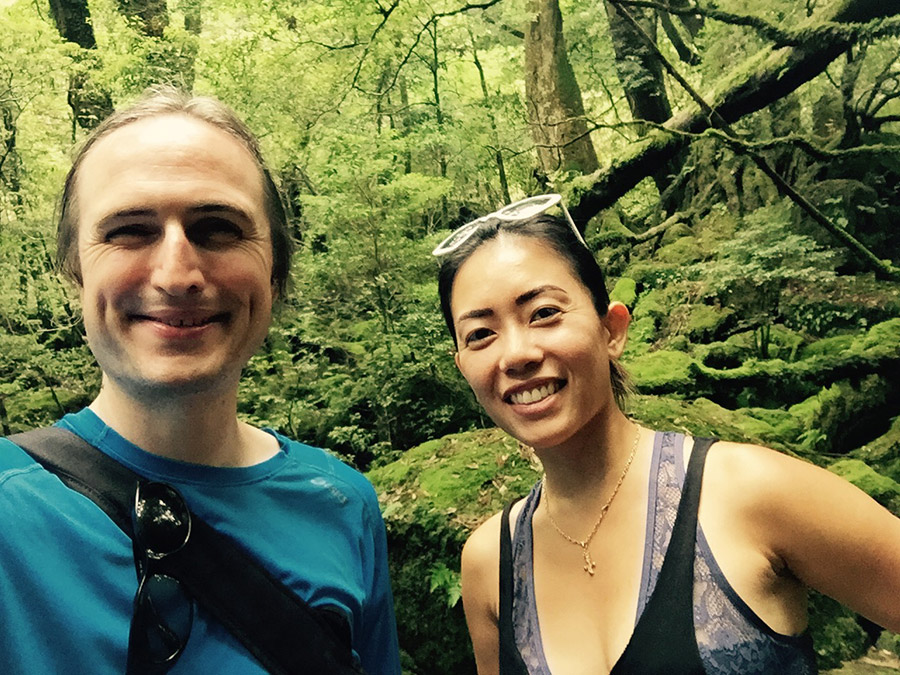
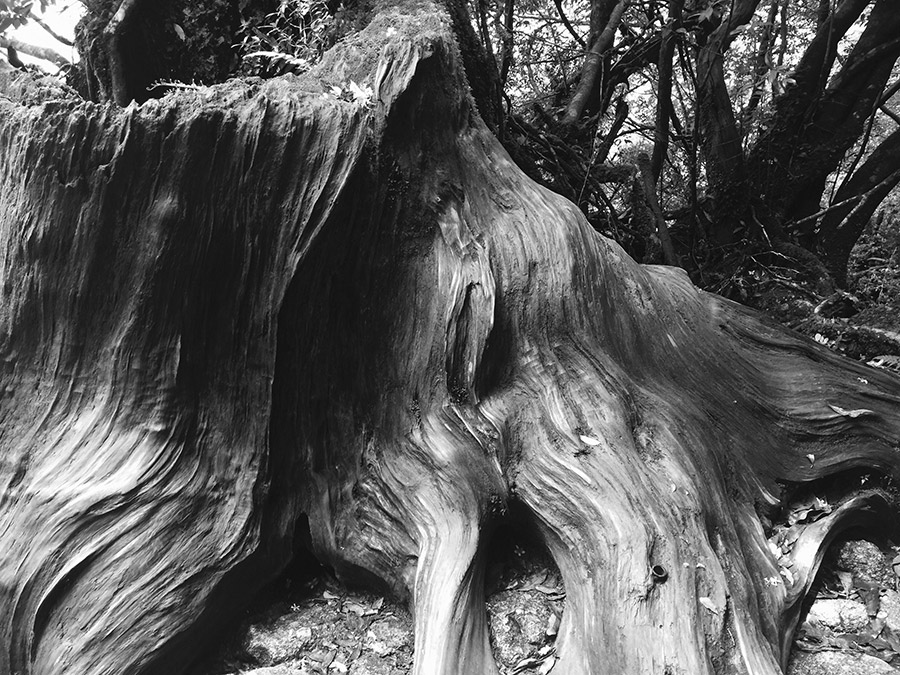
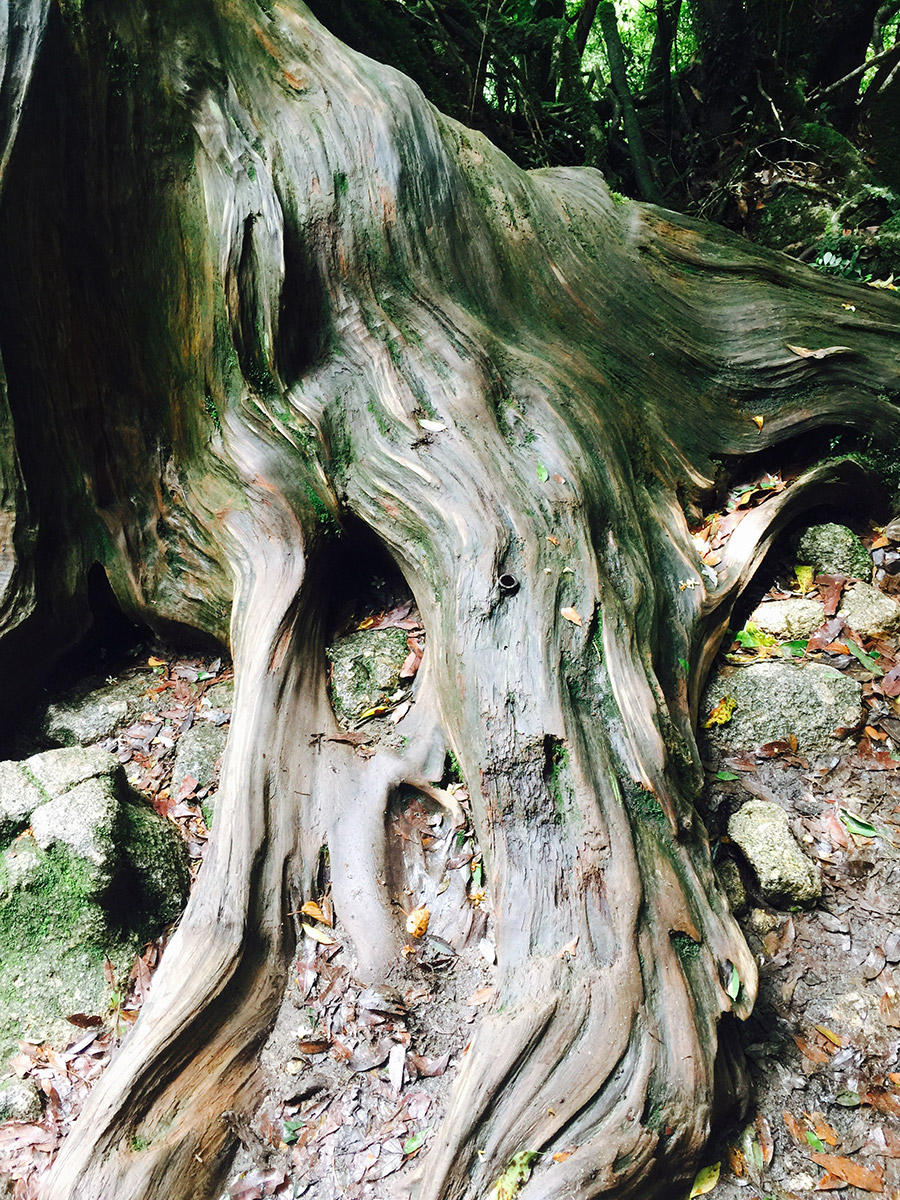
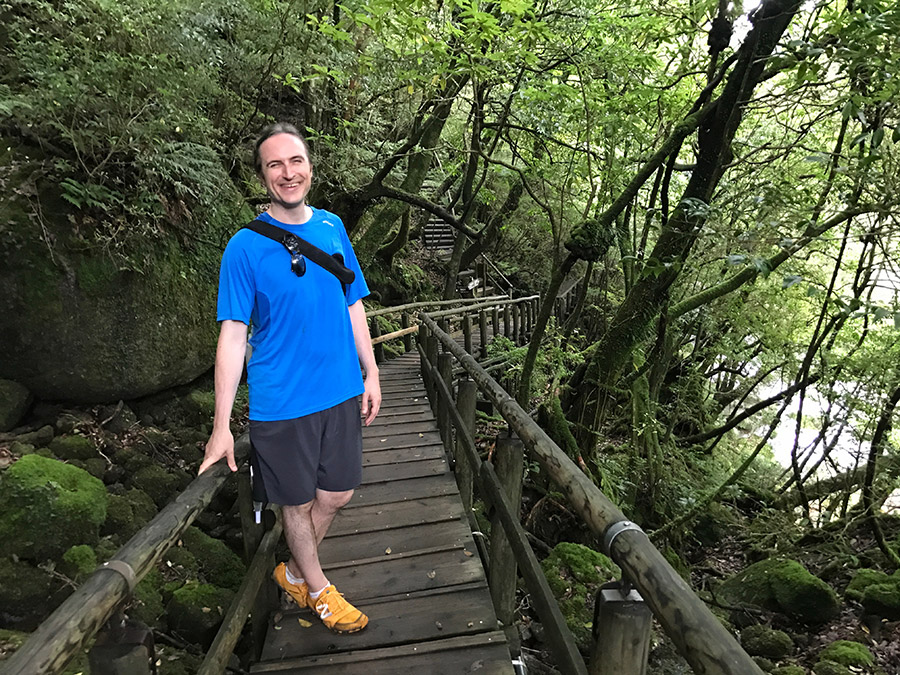
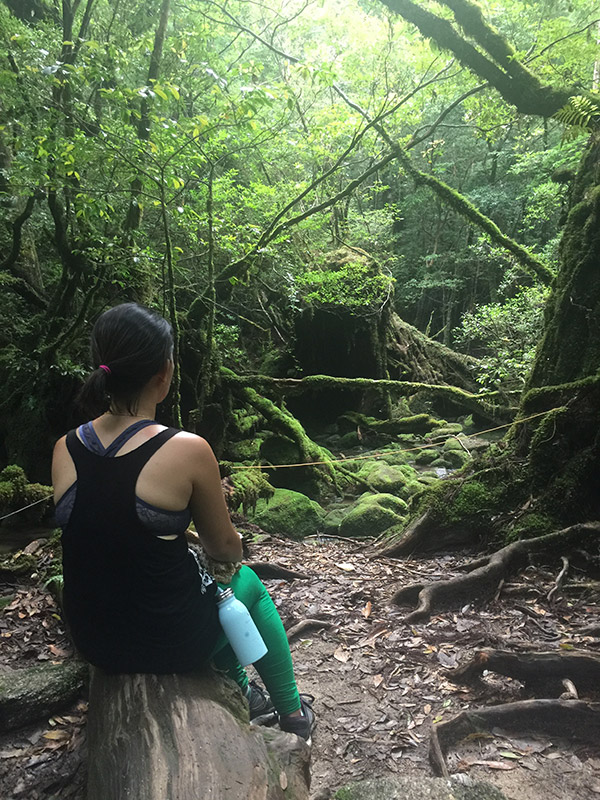
Tiny frogs zig-zagged up the trail ahead of us, and our path was crossed by the occasional very out-of-place looking crab.
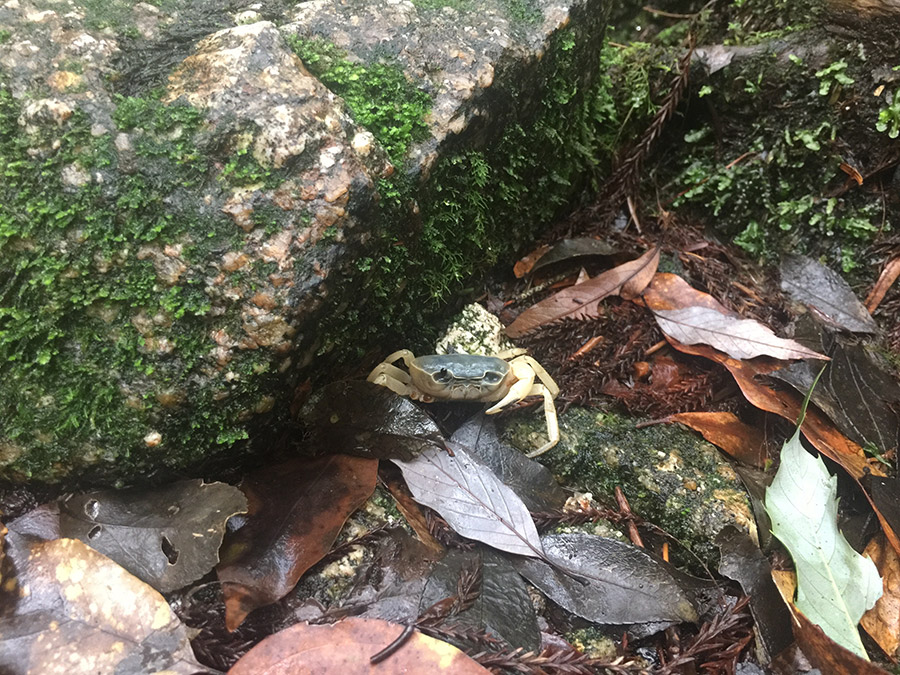
Before the trip, I had learned enough Japanese to be able to say hello, good morning, etc. As we encountered other hikers along the trail, I enjoyed greeting them in Japanese. Most of them seemed to enjoy this, except the Korean ones. Linda didn’t learn any Japanese at all, so I was greatly amused watching the Japanese hikers’ reaction to a white guy unexpectedly speaking to them in Japanese, followed by an Asian woman greeting them in English.
Eventually we reached the zenith of the hike, Taiko Iwa, a rocky outcrop at the top of the mountain that overlooks the world...
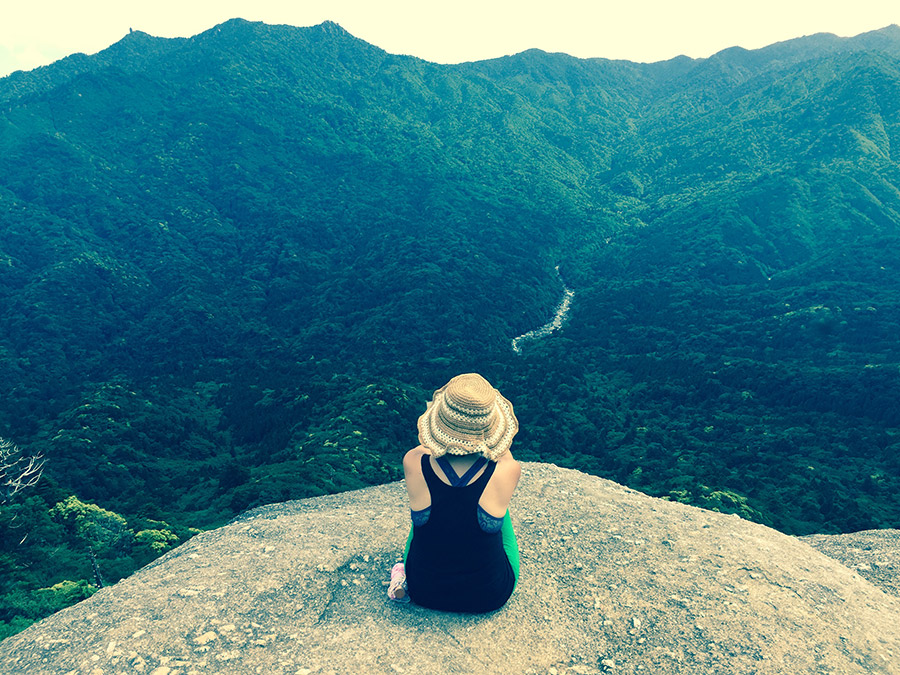
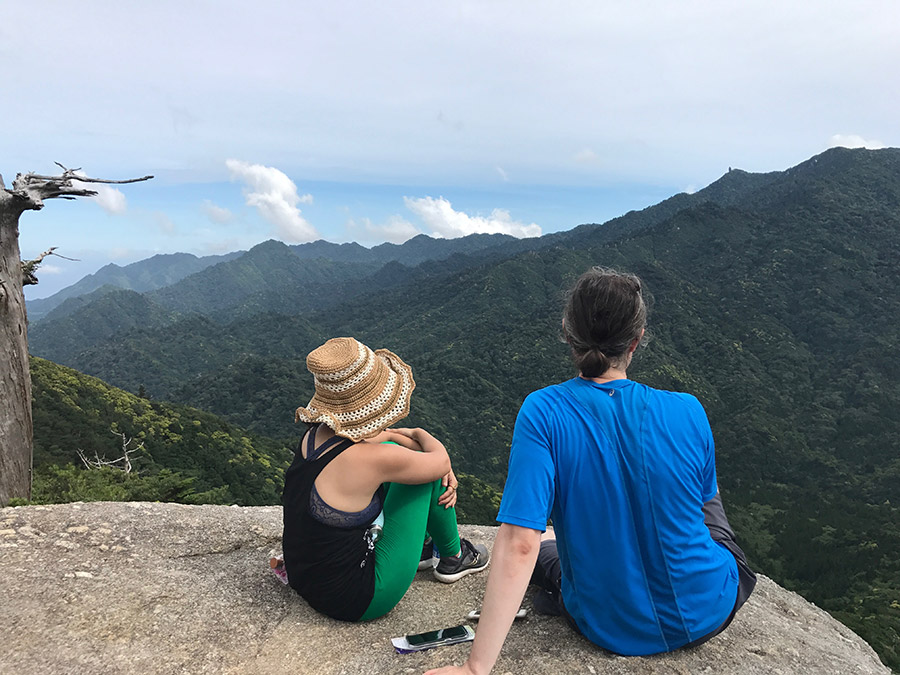
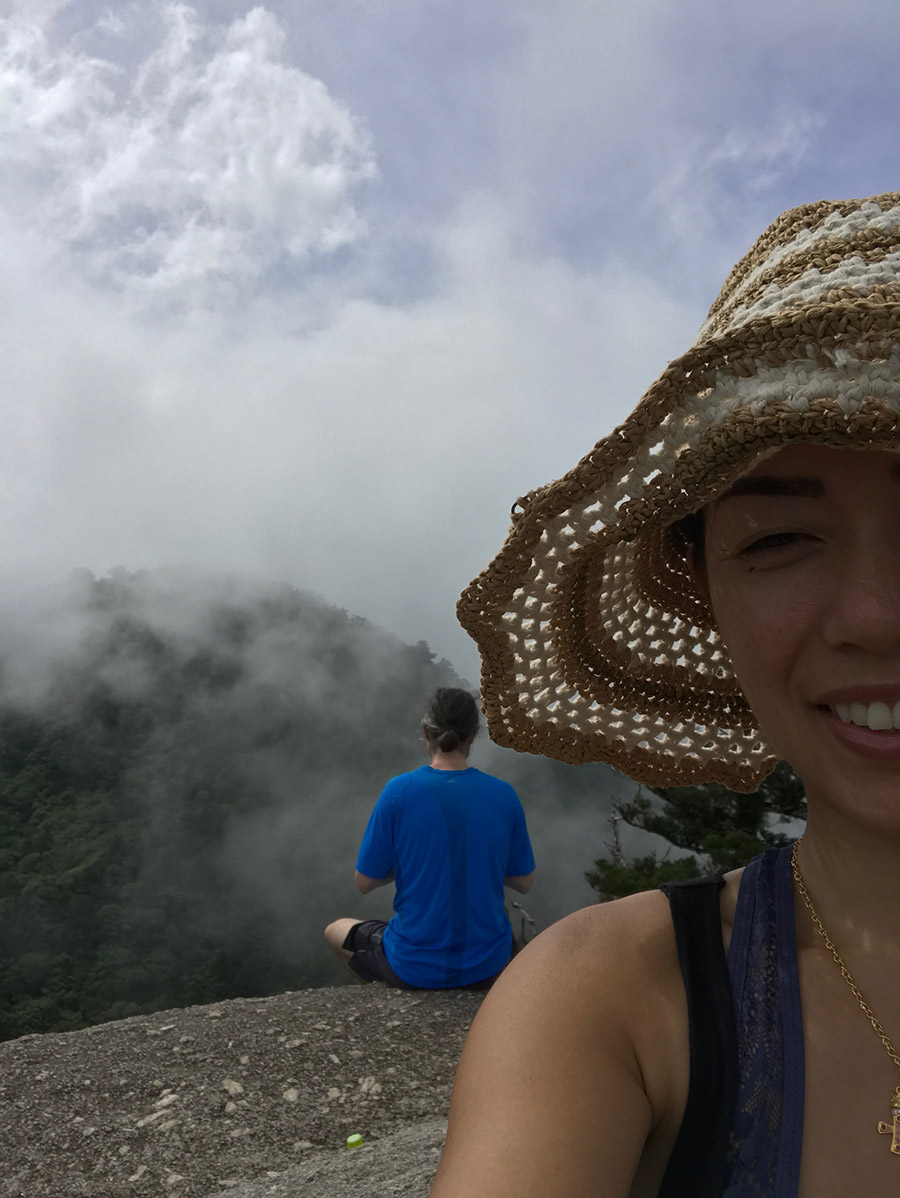
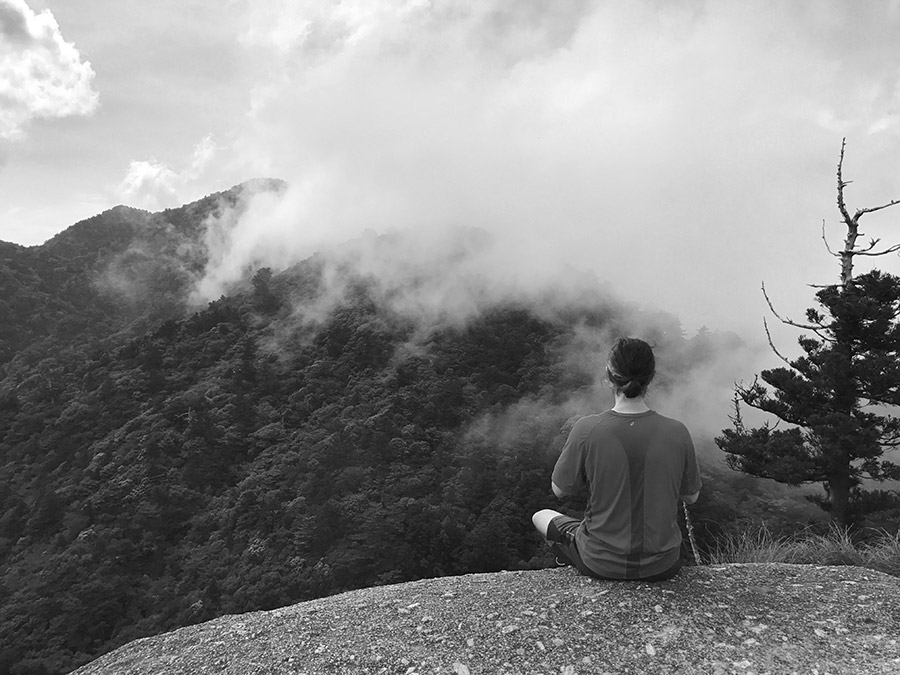
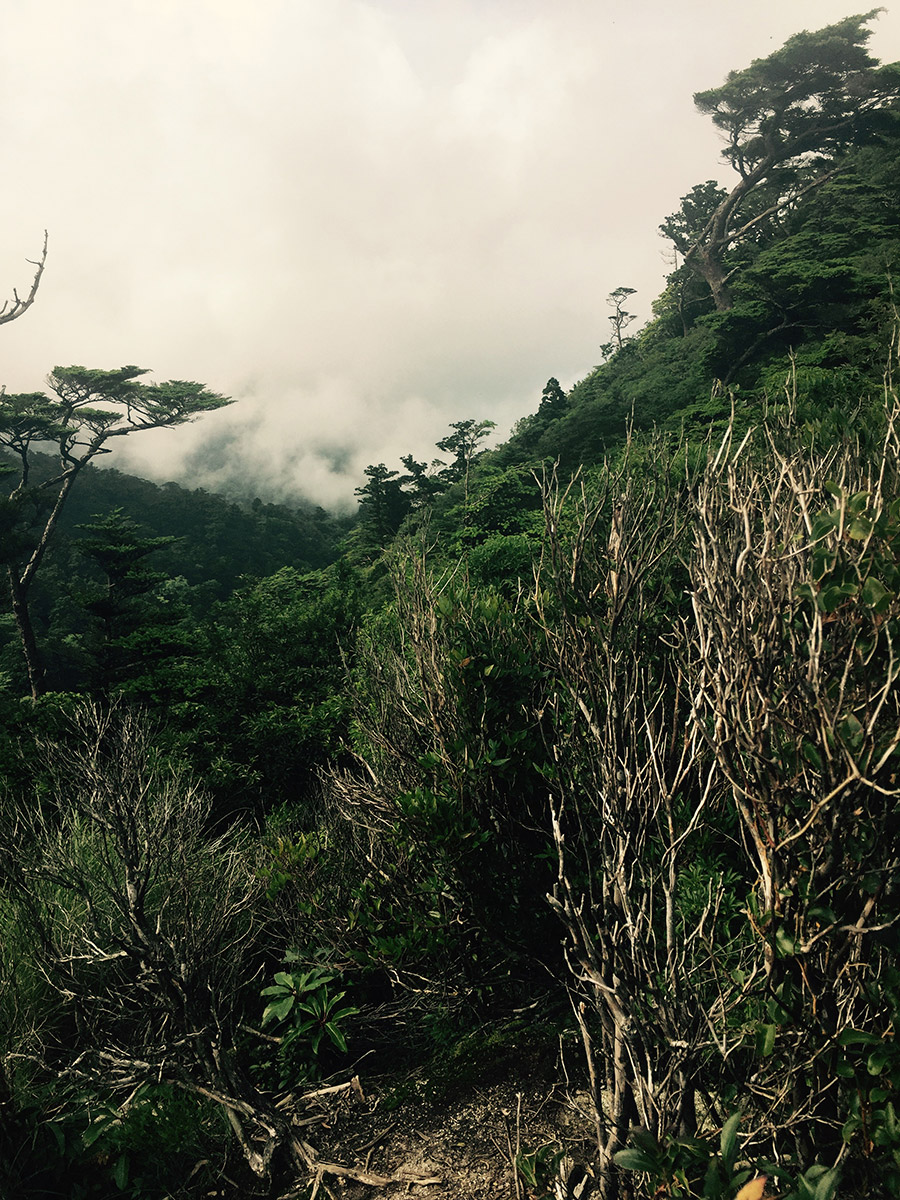
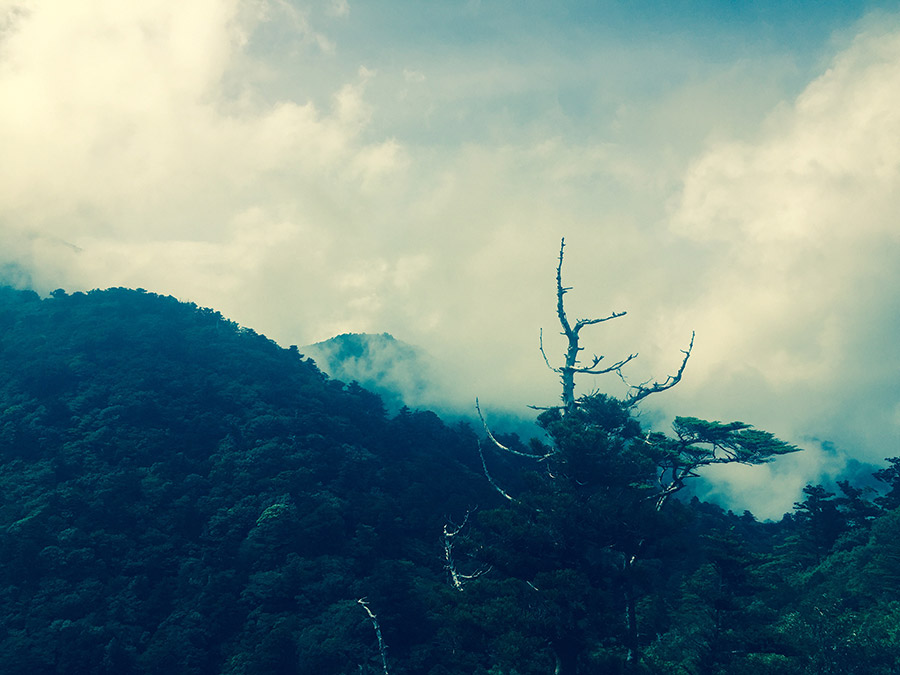
The clouds drifted by magically below us as huge gnats tried desperately to burrow into our eyeballs. Eventually a few other hikers made it up the steep rope climb to the mountain top and were nice enough to take a photo of us. “I hope you’re enjoying your trip!” one said very kindly, also highlighting my earlier point that it was obvious to everyone that we couldn’t possibly live in Japan.
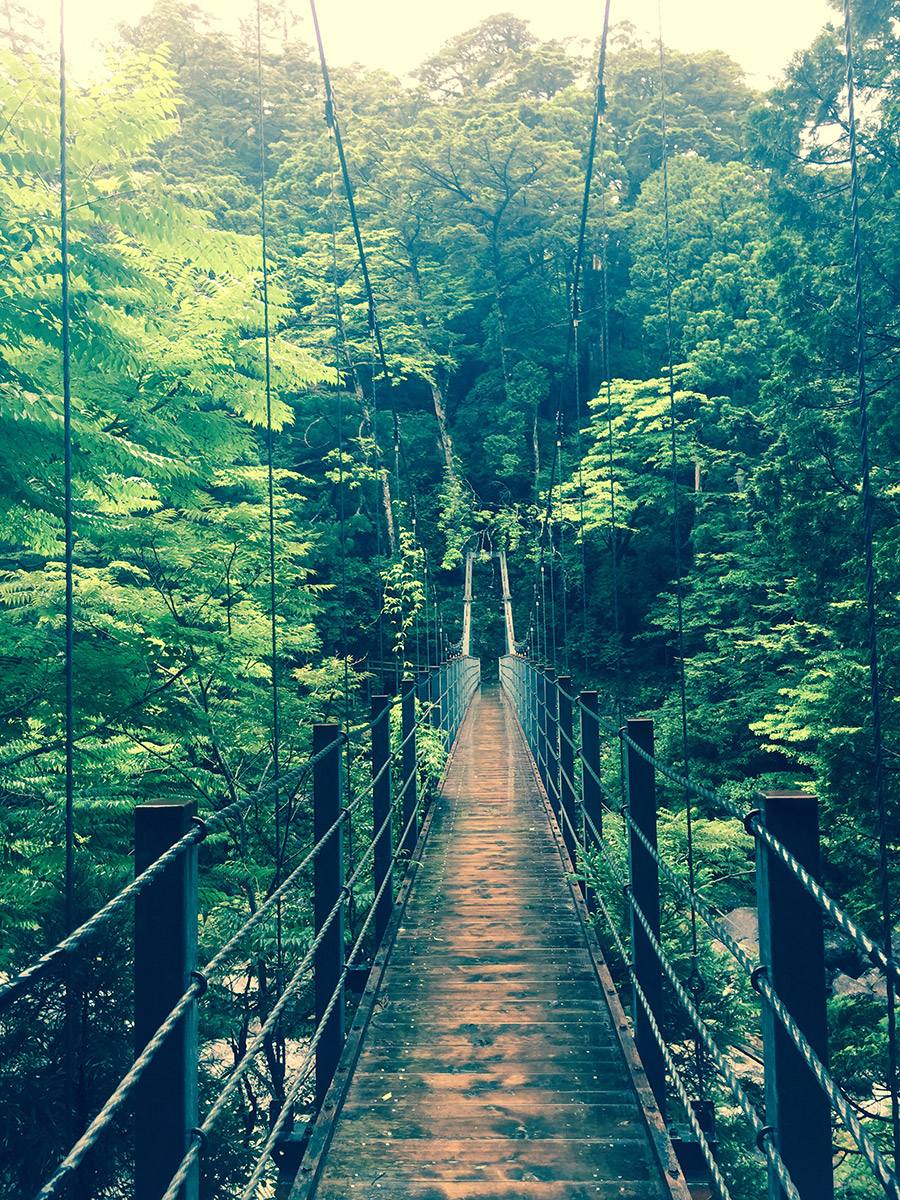
Fans of my blog are likely waiting for some near-death driving experiences, sadly for them things are pretty safe in Japan, and there were only ten little bumper cars bouncing around on the entire island. Driving on the left made things more interesting though, and I did almost kill us by looking the wrong way for oncoming traffic when pulling out of a gas station.
After our second day of hiking I was marveling at everything we’d seen, but lamenting that we hadn’t seen any Yakushima macaques, the feisty island monkeys known for riding deer like they were horses. That’s too bad but you can’t have everythSTOP THE CAR THERE’S A MONKEY!
A macaque ambled up the side of the road, paused by our car, looked around, and let out an annoyed yelp that I didn’t know was a sound monkeys could make. Having made his contractually obligated appearance, he returned to the woods.

Cameras filled up, we headed down the mountain...
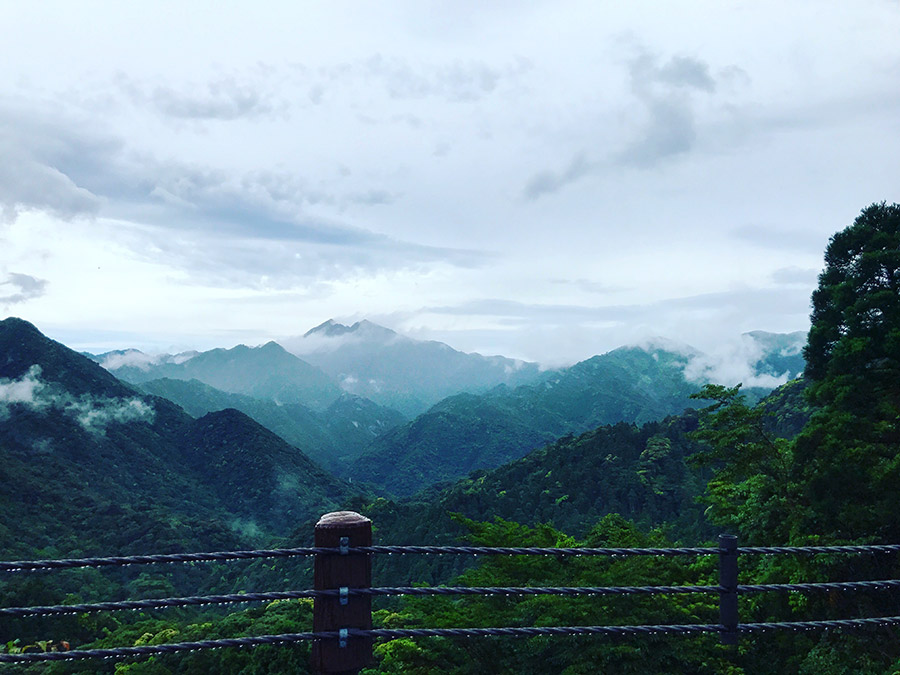
Back in town we had a little time to explore the grocery store before we left on the jetfoil. Japanese food is fascinating and always surprising. I’d been warned beforehand that buying nuts in Japan was a gamble for vegans because they sometimes came mixed with fish. This seemed like it might be hard to avoid if you can’t read Japanese. In the grocery store I picked up a bag of mixed nuts and sure enough, mixed in with the nuts were hundreds of tiny little fish with the heads still on.
Japanese foods often feature a complex array of textures that do not even exist in our diet. It’s like realizing there’s an entirely other set of criteria you could judge food on that you were unaware of until now. Some were what we’d think of as very highly processed, which seems to be more of an art form there rather than a byproduct of prioritizing convenience.
We ended up boarding the ferry toting a bizarre array of snack foods. Nothing tasted quite like what you’d expect. Let’s try these cute little cookies- Wow, very salty, not sweet at all. Okay. How about this bag of French Fries we bought? Sweet as candy, no salt. Bizarro world.
We ate a lot of mochi, little hammered rice cakes filled with bean paste. They’re sort of a dessert I guess? I had stuffed another whole mochi in my mouth and was trying to think of how to describe the striking texture. It’s very chewy, almost like gum, but fluffy like... it’s like... it’s like a gas station microwave burrito! Linda was not at all impressed by this completely accurate stroke of descriptional genius.
Chewing contentedly on mochi, we drifted back across the sea to the mainland...
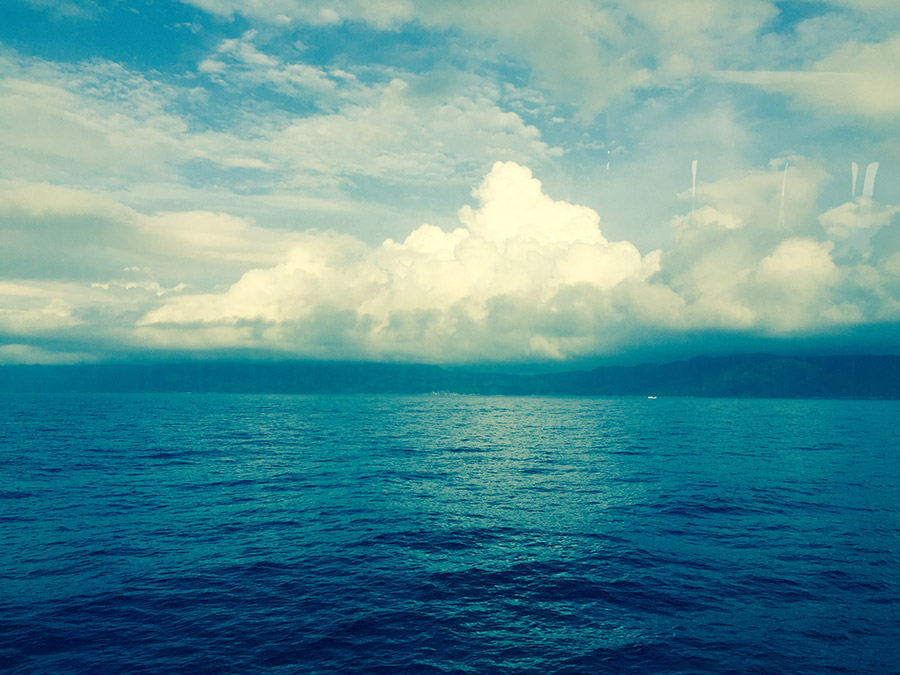
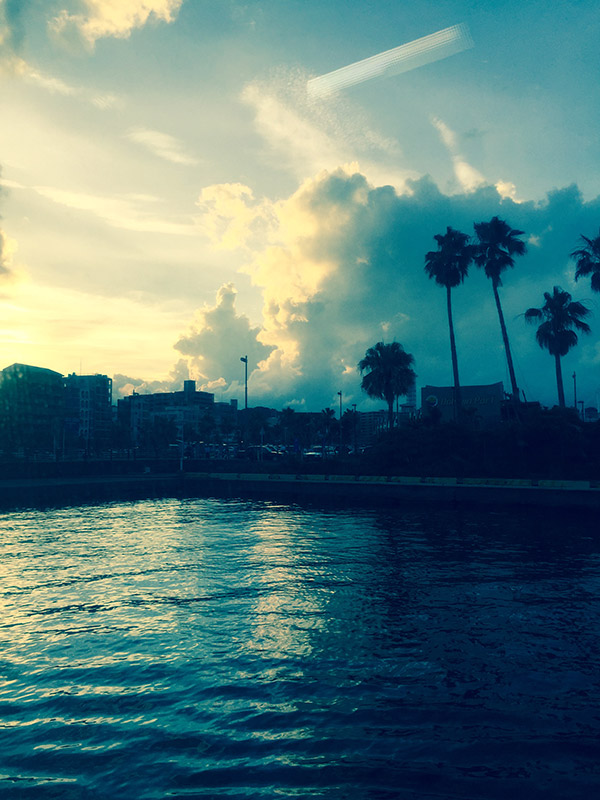
From there we went our separate ways, as Linda began her long journey back home to the US via trains that inconveniently stopped running at midnight at stations that we didn’t know closed overnight, leaving her to wander the streets all night in a gritty urban film montage I’m calling Midnight Cowboy Bebop, and I rode the 11:59 train through the floods and fields to Nagasaki.
A layer of clouds twelve miles thick smothered Nagasaki, drooping down over the mountain peaks that encircle the city. Every place I’d been in Japan so far was unrelentingly clean and upbeat. Nagasaki was like a cauldron of dank sadness. Every inch of the city felt painful.
I made my way across the city to the Atomic Bomb Museum.
Nagasaki and Hiroshima both have A-bomb museums. I visited both. Far more people visit the Hiroshima museum, as far more people visit Hiroshima. It’s much closer to Tokyo. The museum there is sad, like you’d expect.
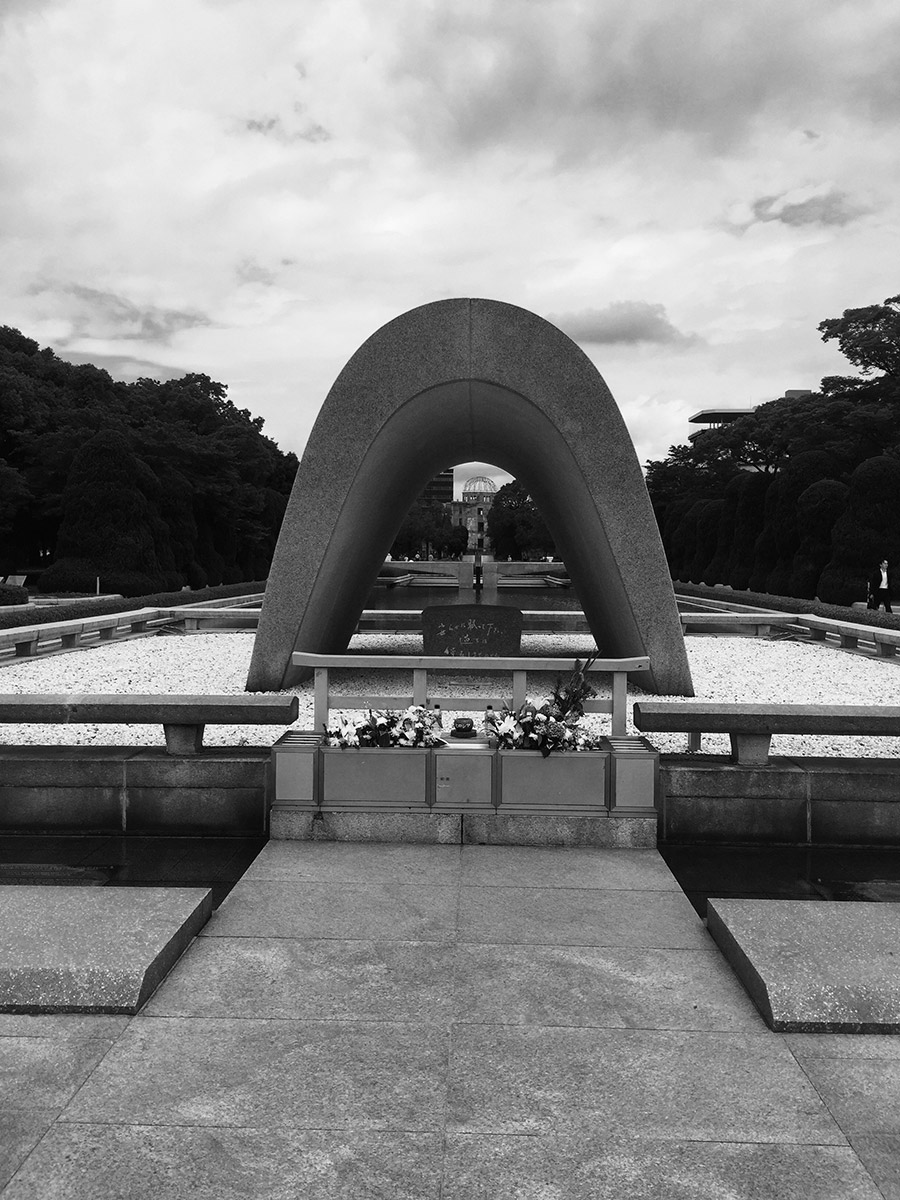
But the overarching story there is Hiroshima’s recovery, and how it came back stronger than ever after the bombing. The bomb feels like ancient history, like they just keep the museum to remember to never let something like that happen again. And you can feel this in the city. It feels bright and successful, reborn.
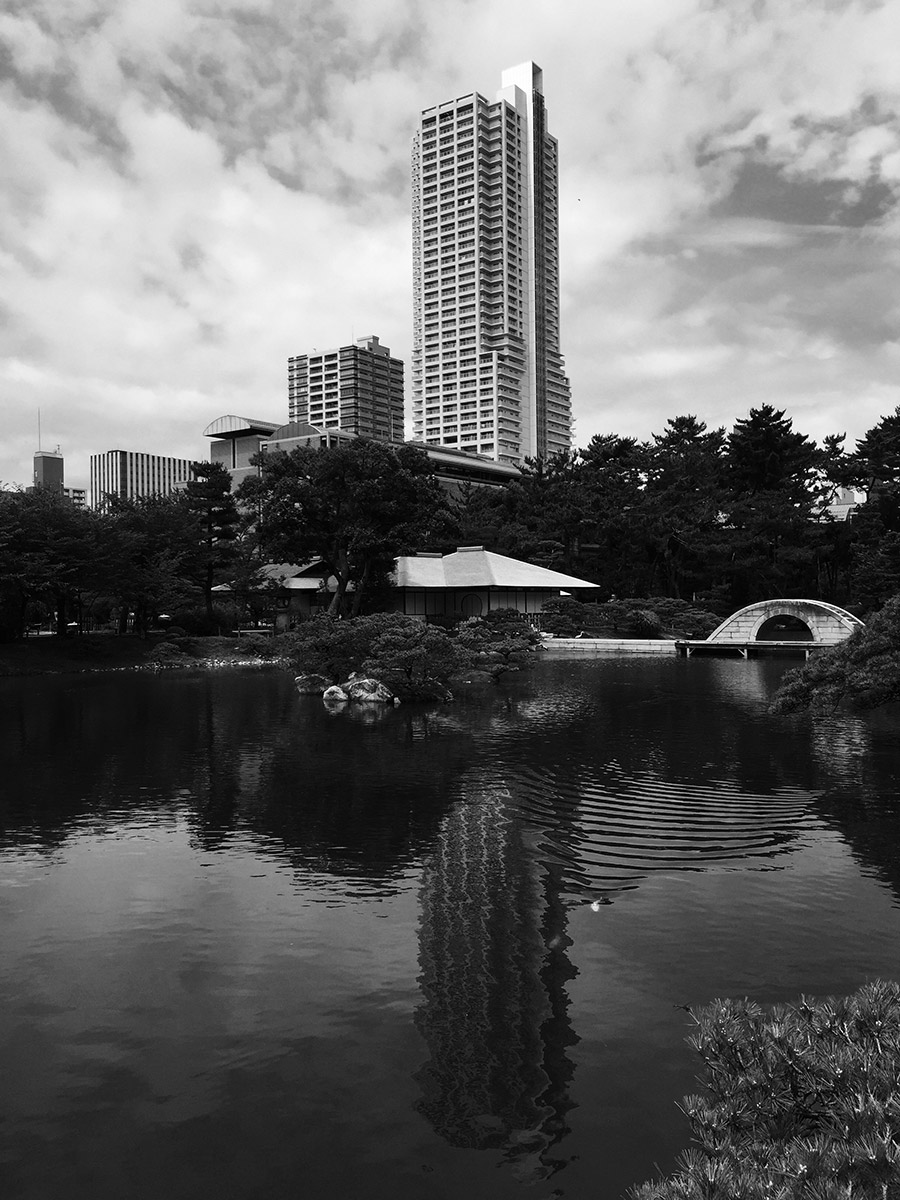
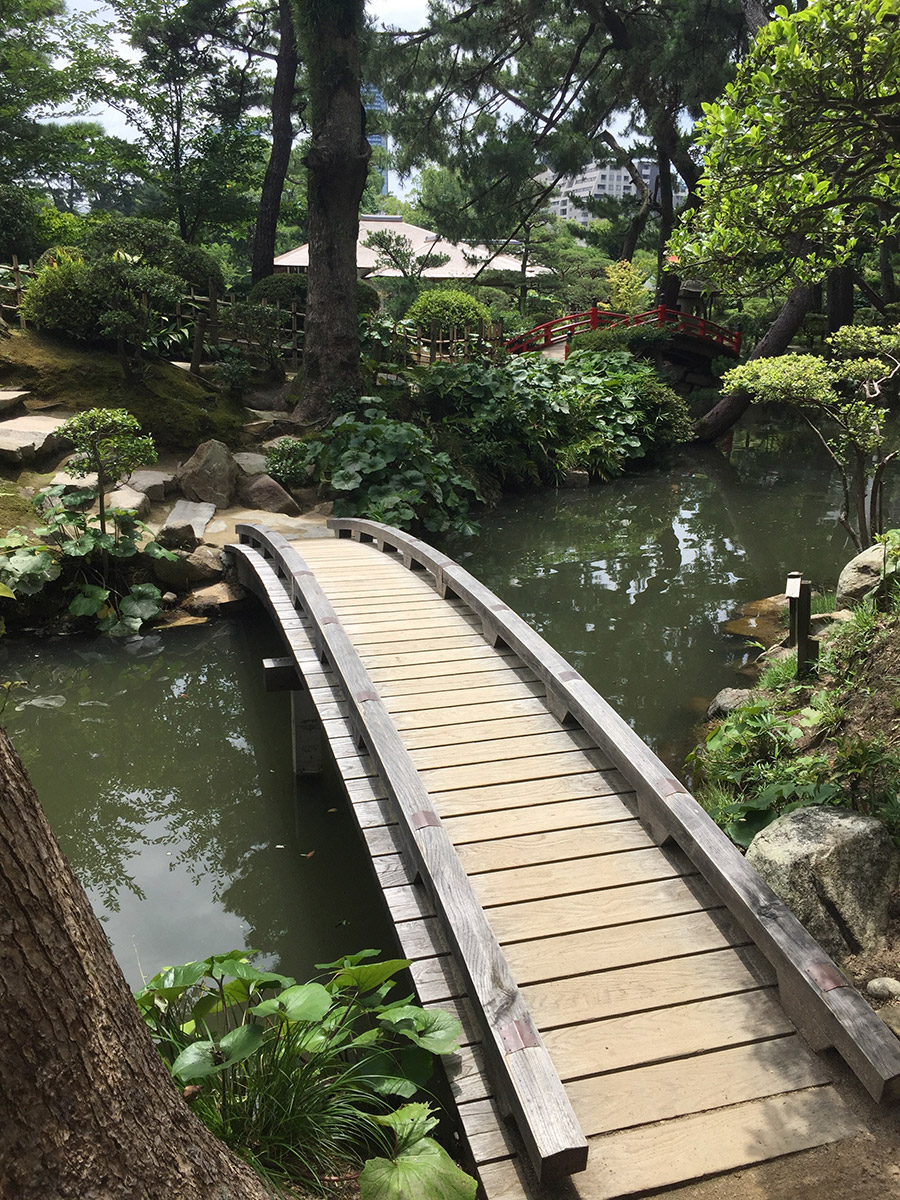
You just want to root for them. I almost bought a jersey for their baseball team, the Hiroshima Carp, out of an unexpected and overwhelming emotional desire to show my support for these amazing people. And to have a jersey that said Carp.
Nagasaki... feels like it was bombed last Tuesday.
The Hiroshima museum makes you ponder man’s cruelty to man. The Nagasaki museum rips your heart out of your chest and sets it on fire.
It’s an amazing museum, dedicated to making Nagasaki the last place to ever experience an atomic bombing. You know when the very first plaque makes you cry you’re in deep trouble:
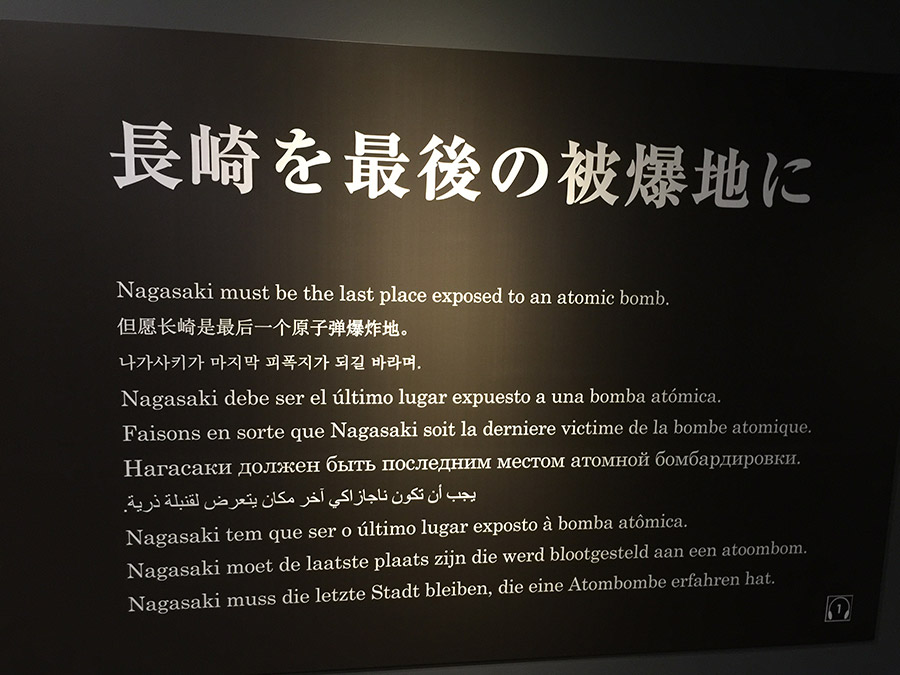
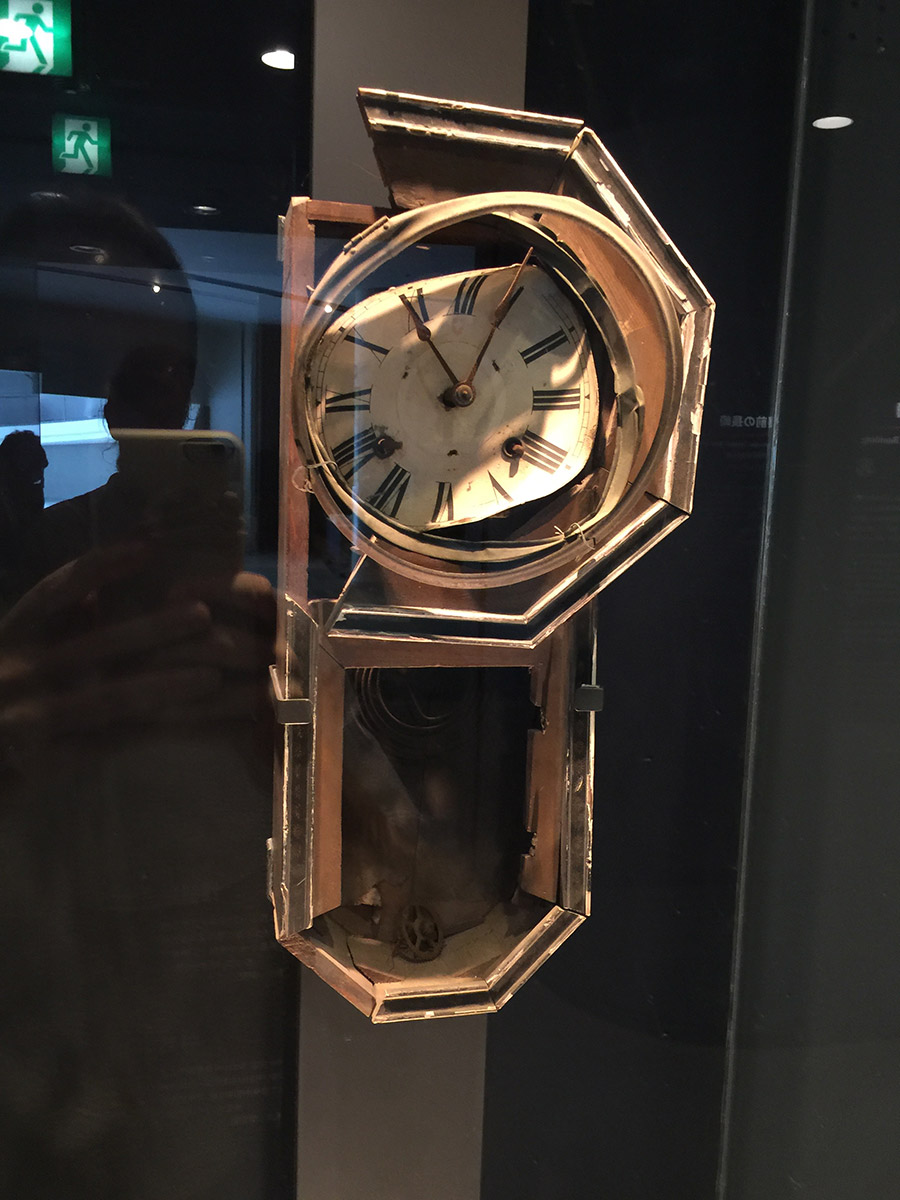
It’s hard to put a finger on what makes the place so impactful. Is it all the images of life in Nagasaki before the bombing? The smiling kids sitting in rows in classrooms that morning? Or is it the huge hall filled with twisted wreckage from what was left of the city after the bomb dropped, a mangled fire tower here, a single church column there? The pictures and wooden panels burned with the shadows of people who were vaporized when the bomb went off? Women with kimono dress patterns burnt into their skin from where the black fabric absorbed more of the bomb’s heat? Maybe it was all the heartbreaking accounts from the survivors, in their own words.
The text in the exhibits was impressively even-handed, perhaps due in part to the lack of continuity between the modern country and their wartime leadership. The Japanese blame the military leadership of the time for what happened, and the museum does a pretty amazing job of neither villianizing nor letting the US off the hook, exploring the debate within the US over the use of the bomb at the time and detailing what other options were available.
I was taught the same thing in school that I think most Americans are, that the bombs dropped in Hiroshima and Nagasaki were terrible necessities that saved far more lives than they took by ending the war early. I’d begun to doubt this as I grew older and learned more about the role Russia’s declaration of war had in Japan’s surrender, and the degree to which Tokyo and so many other Japanese cities were destroyed in firebombing during WWII, making the destruction of Hiroshima and Nagasaki less noteworthy overall for the Japanese than we tend to think. No one will ever know for sure, but there is evidence that the bombs had little impact on Japan’s decision, which raises the question of if we tragically misjudged the situation or ultimately just used the bombs to justify the $2 billion spent on their development, or to demonstrate our power to Russia.
Unlike in Hiroshima, I was the only white person at the Nagasaki museum. This is more than a little uncomfortable when you’re in the thick of the exhibits detailing the unthinkable pain and suffering in the aftermath of an American bombing. If I was mad at America reading all of this, I can’t imagine what all the Japanese people around me were feeling. Was I even safe here? They don’t know I’m American! I looked around. They knew I was American.
Leaving the museum, I was wrecked, emotionally and physically. I made my way to the bomb’s hypocenter and stood in the spot where the bomb went off over the city. I looked up into the clouds. Nearby there was a statue of a woman holding her dying baby, engraved with the date of the bombing. Goddamn. This is the saddest thing the world.
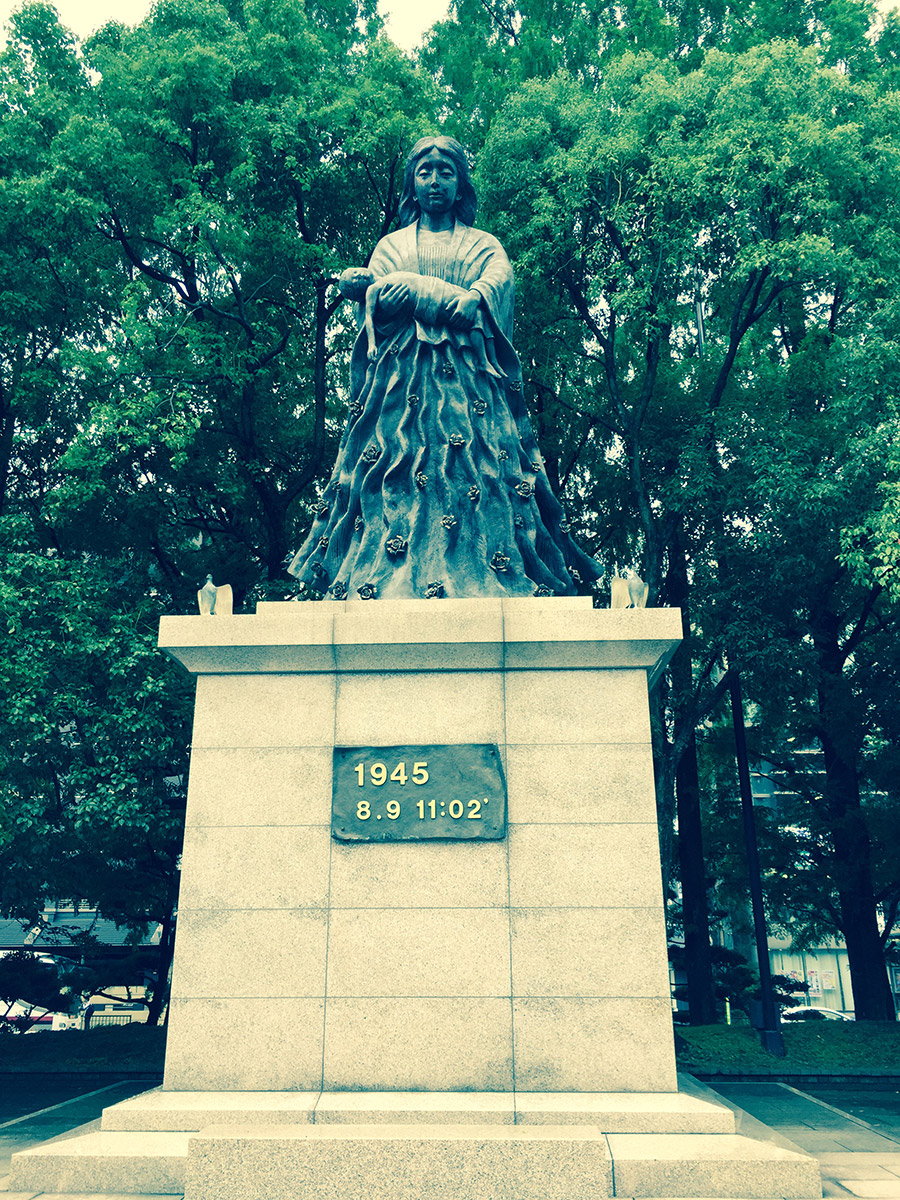
I walked to the Peace Park. Down the hill in the valley below, an outdoor stadium was hosting an opera. A woman’s unbelievably sad singing rose up out of the stadium, echoing off the mountains and across the valley as heavy clouds cascaded down the mountain sides. Oh God.
Doves flew by. Goddamned doves!
I walked slowly over to a fountain at the end of the park. Finally, something hopeful, jets of water arching up into the sky. I read the plaque. This fountain is for all the people who died begging for water after the bomb dropped.
Oh God. Oh God. Oh God.
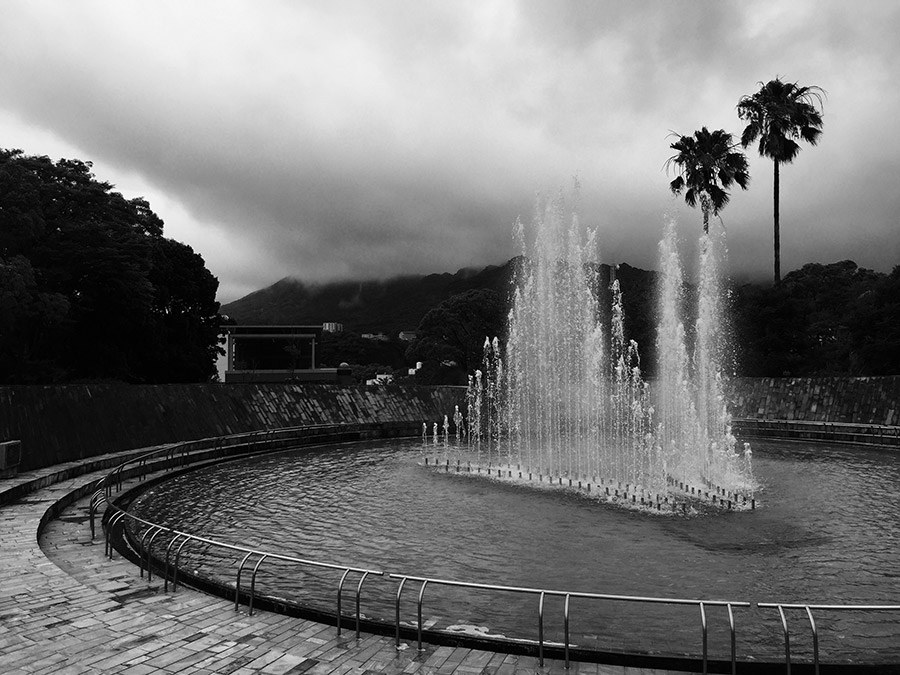
I hadn’t felt so sick since my bear medicine delirium last year after Standing Rock. Maybe I- Oh... I’m doing bear medicine for Nagasaki. Now it makes sense. I need to find a place to ride this out.
I was so drained I seriously considered lying down on the sidewalk in the middle of the city and taking a nap. Instead I dragged myself back to the hostel, climbed into my creaky bunk bed, and slept for 12 hours straight.
Sign: Welcome to Miyajima Island, the legendary island of shrines. Do not feed the deer, they cannot eat people food-
Deer: GIMMIE DEM CANDIES!!!!
Sign: Miyajima deer, though tame, are wild animals who-
*sign interrupted by deer and a crow fighting over a Yoplait on the beach*
Deer are sacred in Japan, and they know it. Our first exposure to this was in Nara, a city famous for being bonkers with deer everywhere. I don’t mean in the woods or the park, I mean in the parking lot and on the bench next to you waiting for the bus. They’re waiting for you when you come out of the grocery store because they know you got something good. You can buy little biscuits on the street to feed the deer because they are absolutely not afraid of you and they want a biscuit.
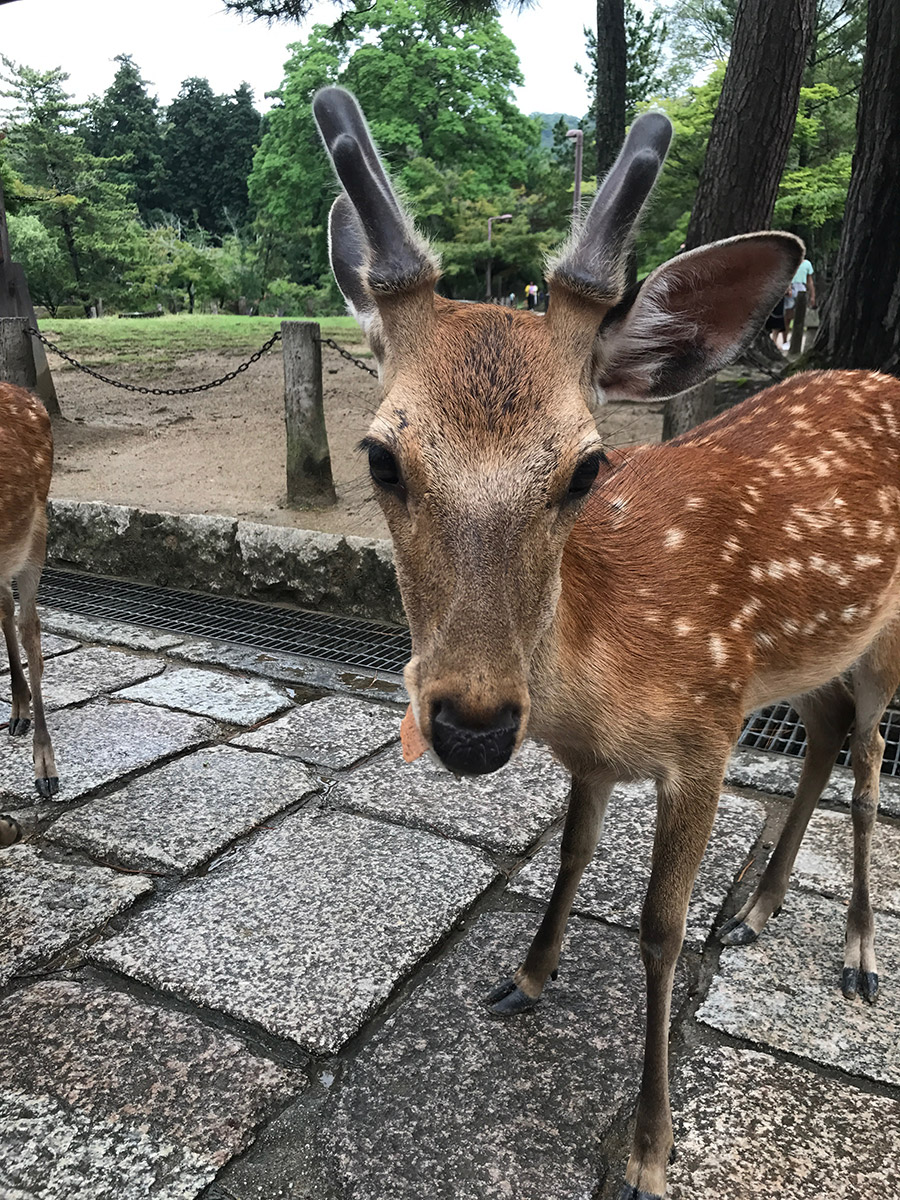
They will also nod their heads at you dramatically in greeting, either imitating traditional Japanese bowing or just to make it funny when you say “Are you a deer?” YES YES YES. “Would you like a biscuit?” YES YES YES.
This is very novel in Nara, that there are all of these cute little Sika deer wandering around everywhere that you can pet. They also have crow buddies that hang around with them because Japan has adorableness on lockdown.
On Miyajima, a small island off the coast of Hiroshima that’s 50% breathtaking spiritual retreat and 50% face-melting tourist blitz, they have what appear to be the same deer. But it quickly becomes clear that these deer are more highly evolved than their Nara cousins, and they don’t need to wait for you to buy them biscuits.
As soon as I got off the ferry on Miyajima, I passed a woman who was having a magical moment as a deer walked right up to her on the street. “Oh my gosh!” she said, reaching out and touching the deer on the forehead. The deer was less impressed by this moment than the lady and cruised right past her, burying its face deep in her backpack which she had set on the ground for literally seven seconds.
“Hey! Ha ha! Wait no-” she argued ineffectually as the deer ate her lunch.
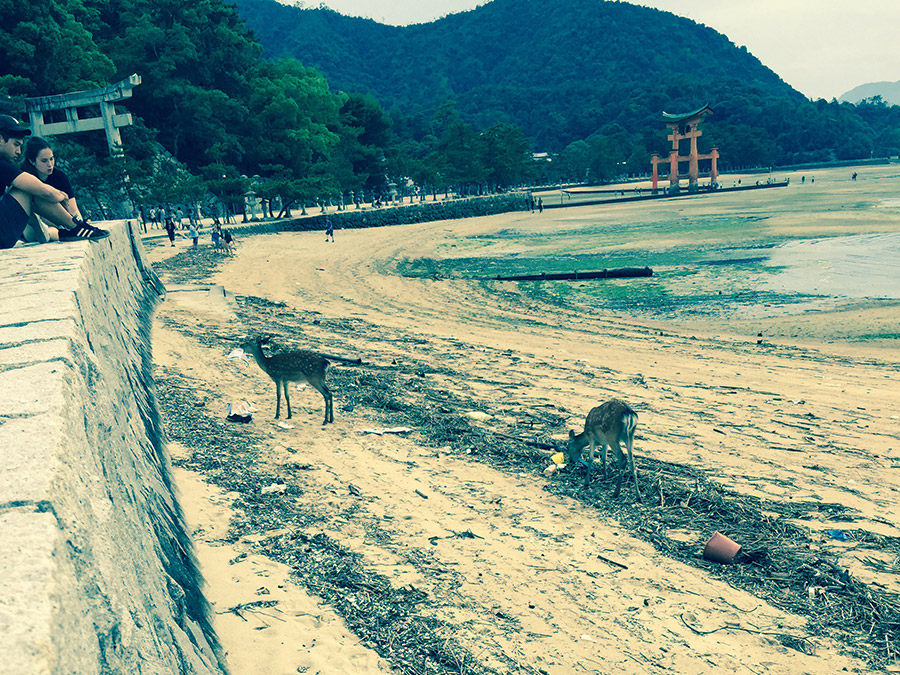
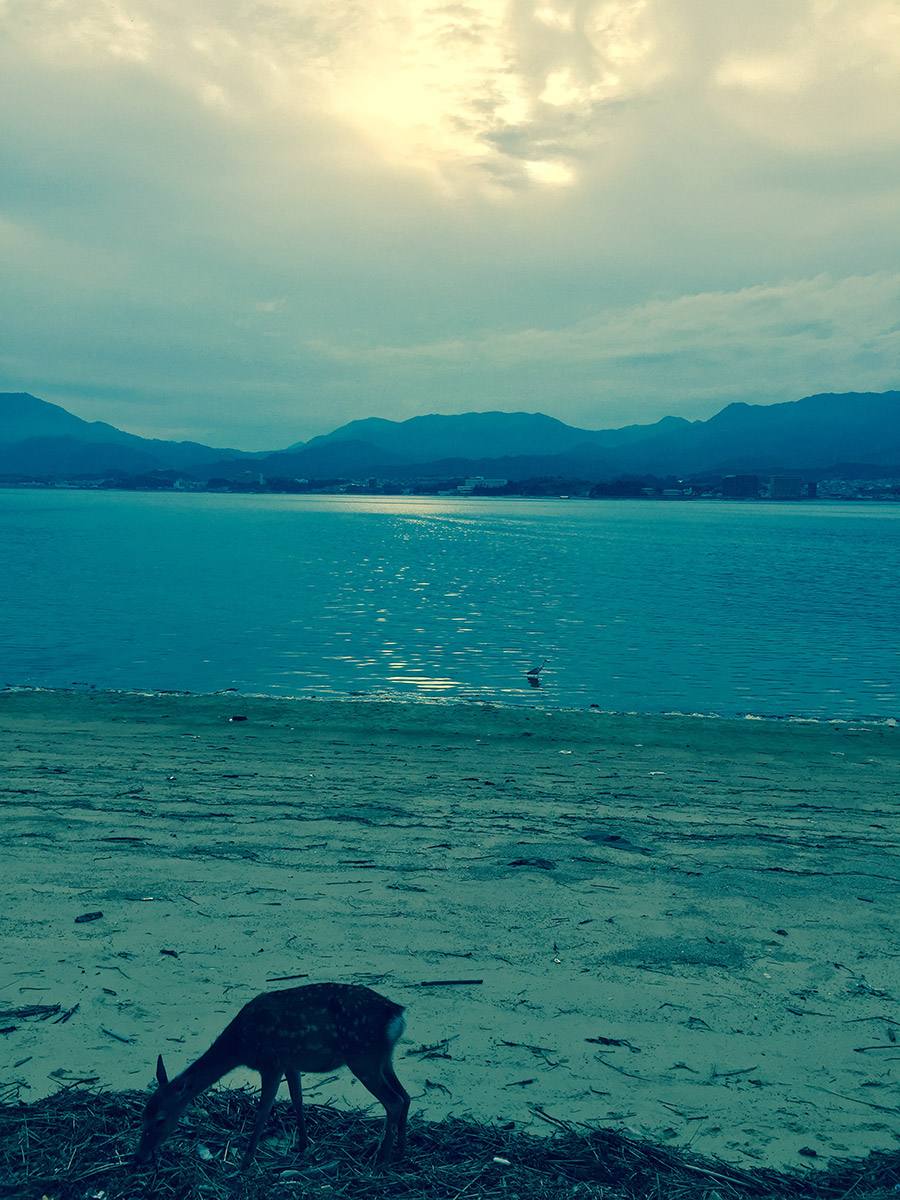
Further up the path, past countless cute little shops selling identical tourist tchotchkes and shot glasses with sexual positions on them, I saw a cyclist wheel up to a restroom and park his bike out front while he ran in to take a whiz. Within less than a minute, a deer had traipsed over nonchalantly, humming, unzipped his bike bag, pulled out a plastic grocery bag full of food, and expertly flipped it upside down, dumping out all the contents onto the ground. It was not the first time the deer had pulled this move. Before I could say “How’s that deer going to open the packaging-” the deer had opened the packaging and was eating a whole banana, with the peel still on.
A nearby woman chastised the deer, shouting “Hey you! Don’t- that’s not-” and other things that wouldn’t have got me to stop eating a banana. It definitely didn’t work on the deer.
After dropping off my luggage at my adorably rabbit-themed ryokan (a traditional Japanese Inn where you sleep on a futon mattress rolled out on the tatami mat floor) I walked over to the Itsukushima Shrine, a pretty Shinto shrine built on boardwalks above the rising and falling tides. A huge orange torii gate in front of the shrine appears to be floating in the sea at high tide, but you can walk out and touch it at low tide.
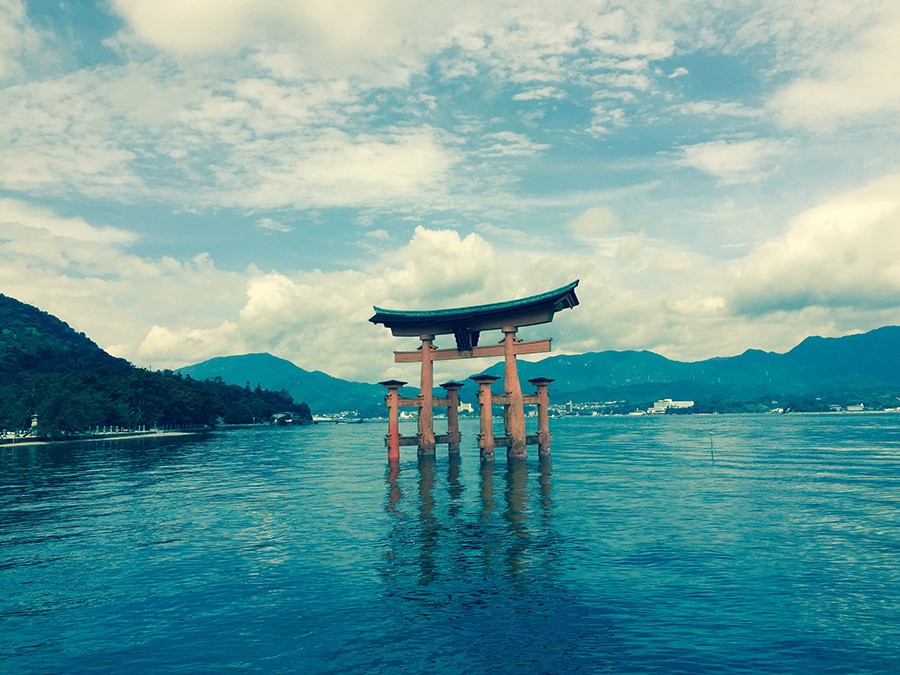
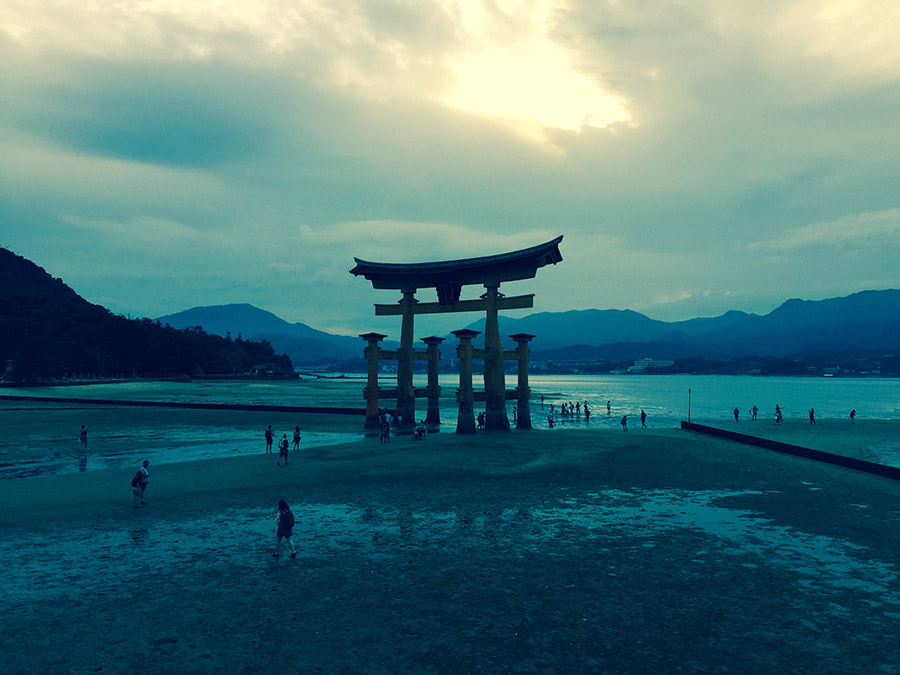
The lower pillars of the gate that are normally below the sea are actually unfinished tree trunks, with coins wedged into them for good luck. They feel eerie to touch, though you won’t touch them for very long because they’re also covered in silverfish.
My other main activity for Miyajima was to climb the island’s holy mountain, Mount Misen. It was around 6pm by the time I got to the trail at the base of the mountain, which meant I could maybe see the sunset from the top if I ran up the mountain. Thoughts of how I was going to get back down in the dark tickled the back of my brain as I hustled up the trail, but these were squeezed out by variations on one thought: Oh Jesus, oh lord in heaven, it is hot, oh god it is oh so hot.
The median temperature in Japan in July is “goddamned sweltering” celsius. This is broken up by periods of “Oh God” and the occasional sprinkle of “I just pissed myself.” I had believed humidity only went up to 100% until I visited Japan. I had only packed one pair of shorts for the trip because I was going to be visiting a lot of temples and I felt like it would be more respectful to wear pants and shoes intended for adults. If I ever go back to Japan in the summertime I will be wearing nothing but speedos and those hats that hold two beers.
The first people I passed who were coming down the mountain said hi to me and then “look out for the snakes.” Snakes?? Okay I’ll look out for snakes. Soon I was passing signs at regular intervals that told you about looking out for the deadly Mamushi viper and if you see one, don’t touch it, don’t go near it, don’t bow to it, don’t even talk to it, just run for your worthless life.
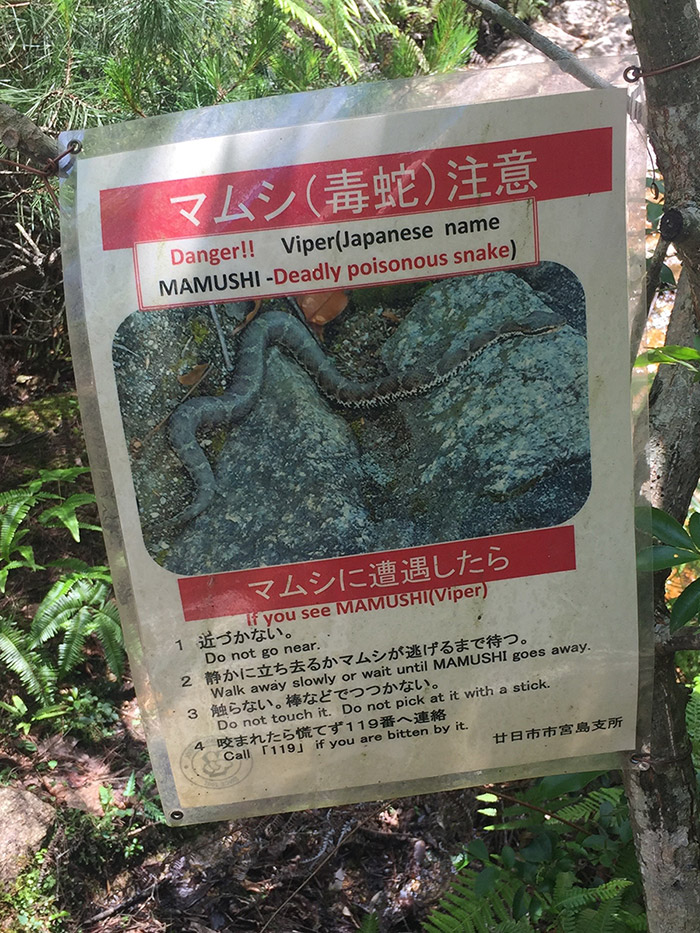
Note that the emergency number in Japan is 119. I bet no western tourists have ever messed that up while they’re foaming at the mouth and covered in writhing vipers.
The hike up the mountain was beautiful, dotted with occasional shrines and OH GOD THAT’S THE BIGGEST HORNET I’VE EVER SEEN. Japan has hornets the size of small birds that are attracted to the color black. Probably better to know that before you go hiking into hornet country.
Some hazy, indeterminate amount of time later I crossed paths with another group of hikers coming down the mountain, who looked at me like I was John Belushi in the middle of a seven day cocaine bender and they had drawn the short straw on scheduling an intervention. I looked down and realized I had sweat all the way through my pants.
“This is about half-way, right?” I asked them.
“Oh shit,” said the first hiker. “Oh holy shit. No. So not no.”
“You’re maybe 30% of the way up,” said another apologetically, looking at me like I was already dead.
“Oh damn. Okay, thanks,” I thanked them.
“No problem. Look out for snakes.”
Over the course of the next 15 minutes it began getting dark at an alarming rate and-SNAKE!-I realized most of the snakes I was seeing everywhere probably weren’t actually there. I sat down at a scenic overlook and took stock of my options.
I said hello to a couple who had stopped as well to ponder what horrible mistake had brought them to this sweaty crossroads in their lives. They were German though so they had no idea what I was talking about. I quickly ran through all the things I knew how to say in German and then realized they were all from Die Hard.
Crawling over venomous snakes in the dark on my way down the mountain didn’t sound as fun as I had thought at first so I decided to hike down while I could still tell a snake from everything else and try again in the morning.
On the way down the mountain I could feel Kobo Daishi near me once again. I asked him what was next for me. He said “Slow down and go within.” I could feel there was something more waiting.
Once I got down to Miyajima, the streets were completely empty, all the shops had closed for the night. It was unbelievably quaint to walk through town in the dusk, the corner lanterns starting to light up. I turned one corner and there was a deer in the middle of the street, frozen in his tracks six feet from me, looking at me with big eyes and a face that said “What?? I wasn’t doin’ nothing!?” I knew he was definitely doing something but it wasn’t my jurisdiction.
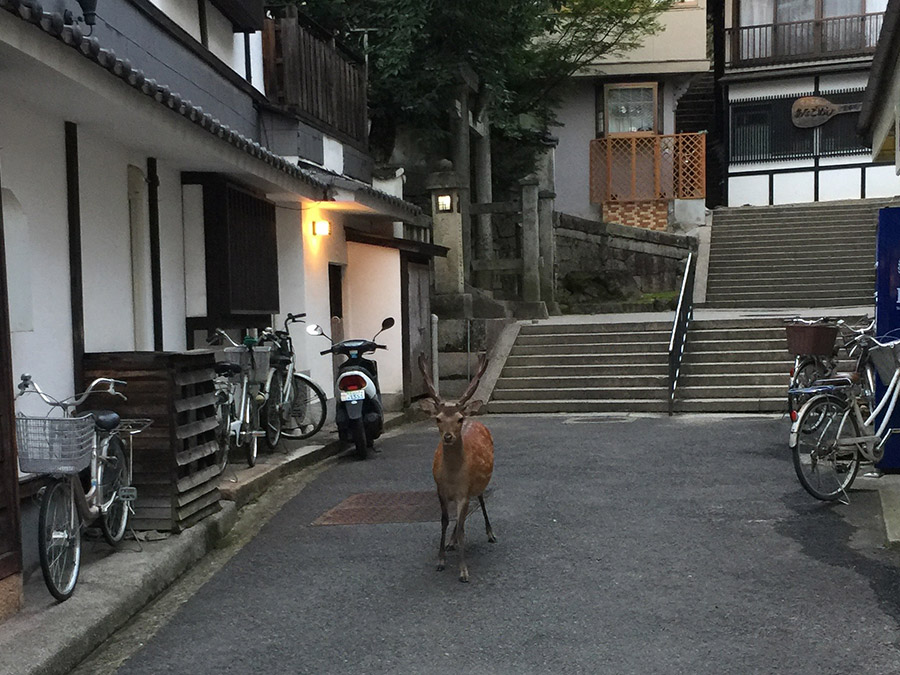
Halfway through the town, the stillness was broken by a Japanese woman and her 3-year-old daughter walking up the street toward me. As they came closer, I smiled and said konnichiwa. The little girl’s face lit up and she said “Konnichiwa!” three times, bowing her head exaggeratedly each time. She was so excited to greet someone the way her mother had taught her; her smile was amazing. I’d never seen anyone so happy, I still get a little choked up thinking about it. This was my favorite moment in Japan.
As I walked away, the emotion grew stronger until it was overwhelming. Wow, I was really touched by- Suddenly it clicked in my mind. I’d spent the last few months in meditation doing what they call inner child work, where you go back to your childhood and address the fears and insecurities that formed at that time, that you still carry today. Your inner child almost becomes someone you can see and know, and you aim to love and heal them. I suddenly knew that Kobo Daishi was showing me, through this little girl, the joy I would have inside me once this work was done.
The next morning I got up early, played a quick round of charades with the inn-keepers to explain that I was going up Mt Misen to die, and headed out for a second try. This time I decided to take the cable car that goes halfway up the mountain, because I figured snakes don’t have jobs and can’t afford the cable car.
The cable car was an amazing feat of engineering, as it doubled as both a conveyance up the mountain and a convection oven. It was approximately 12,000 degrees inside the capsule, perfect for making beef jerky.
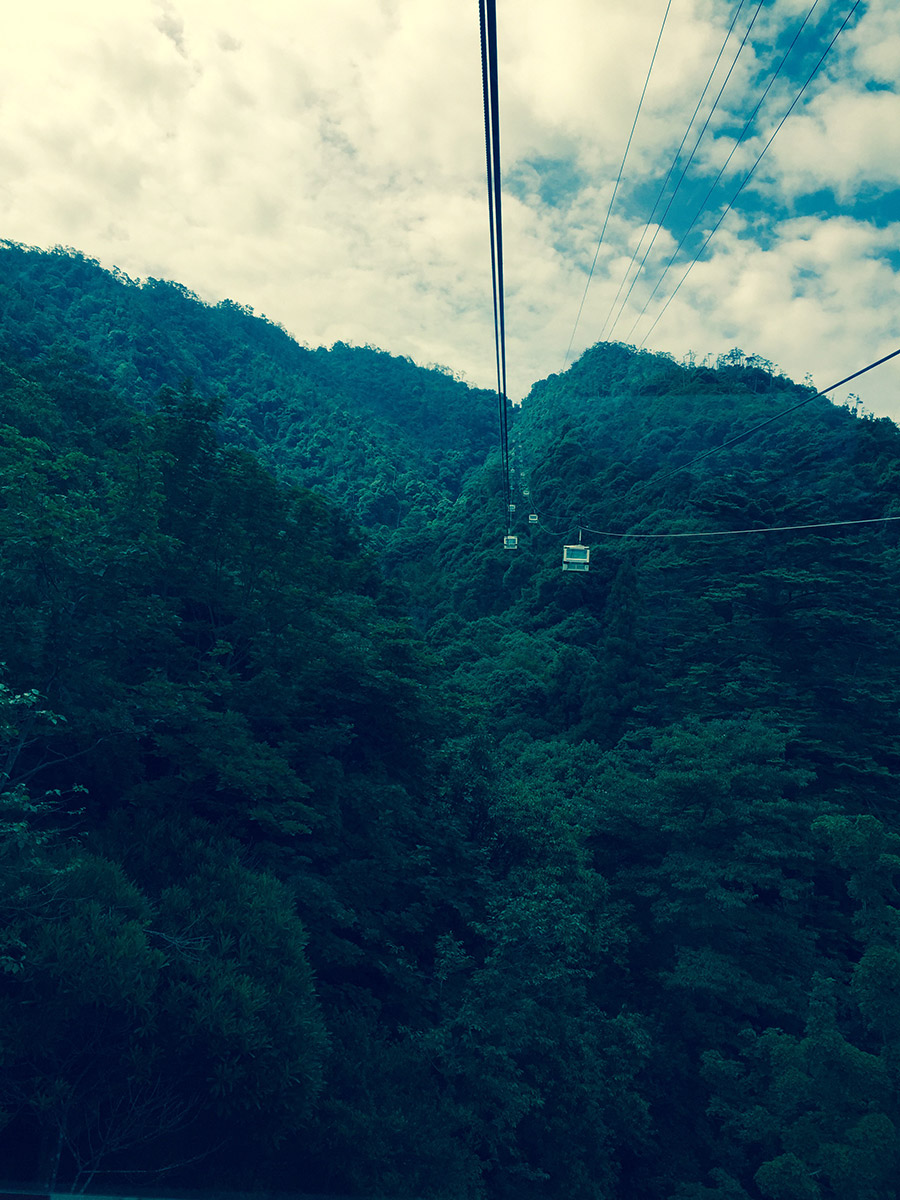
The view was fantastic, at least what I could see from inside that steamy death box. Five minutes into the ride, sweat was beading on every inch of my skin and had pooled deeply on the floor of the car. By the time I got to the top they had to hose out the car so the next passenger wouldn’t shoot out the other side like a bar of soap through wet fingers.
The view at the top was wonderful...
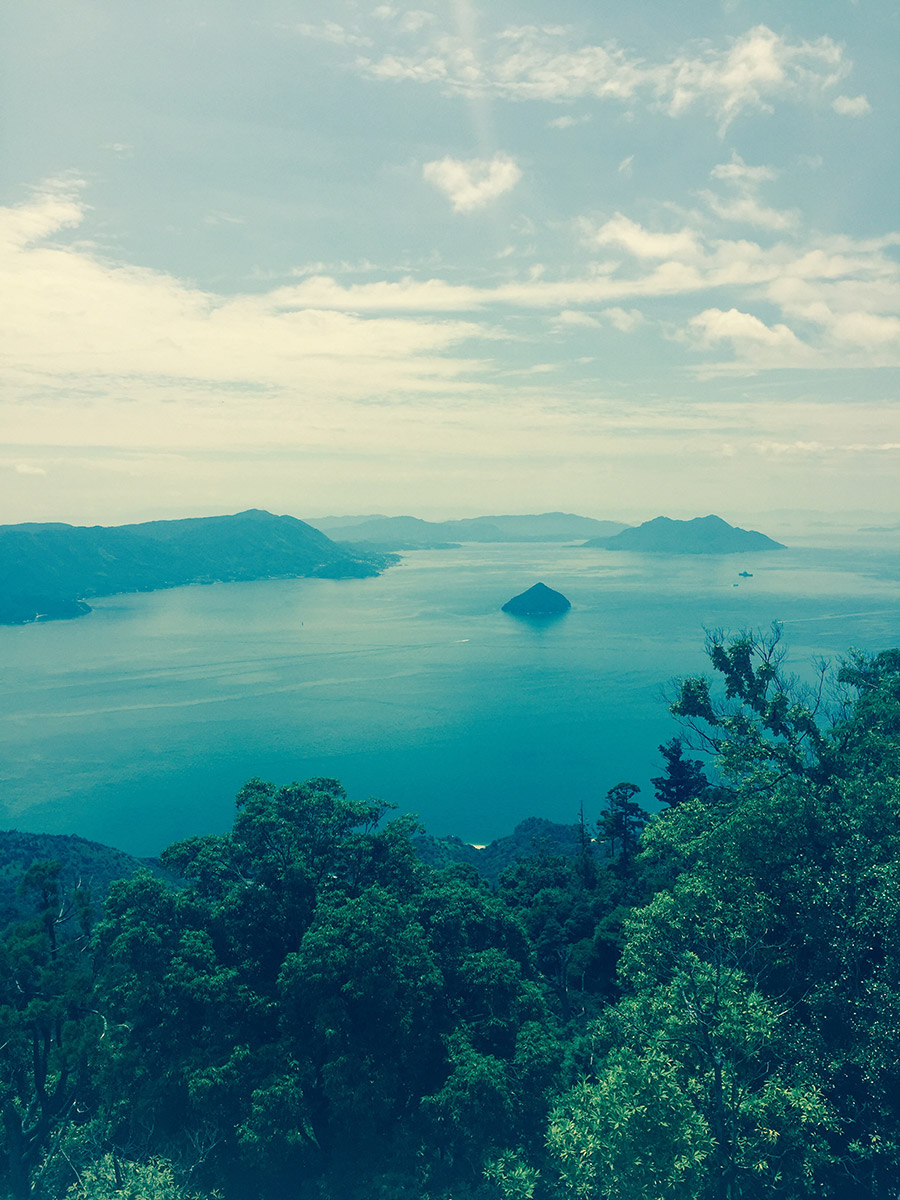
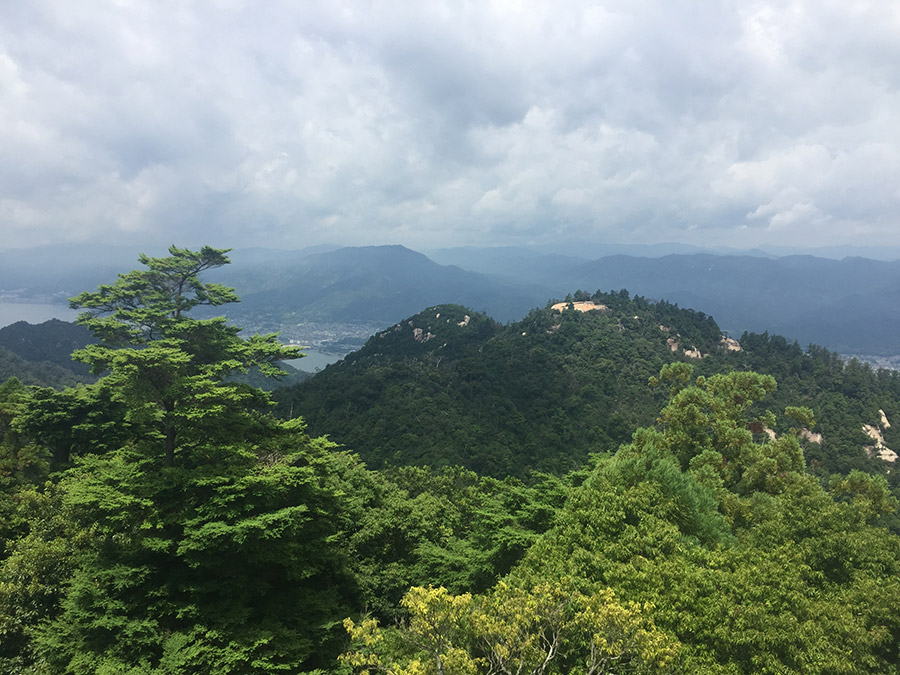
...and from the cable car stop I hiked deliriously the rest of the way to the summit to see Sanki-gongen-do temple, Kobo Daishi’s eternal flame and my own dead body lying on a rock halfway up the trail.
At each shrine I heard Kobo Daishi's voice in my ear, telling me which ones to visit and what to do, that there was a blessing waiting for me here, and here. At the eternal flame, lit by Kobo Daishi when he was alive and kept burning ever since by the monks on the mountain, I lit a stick of incense and bowed my head in meditation. I felt a ball of flame open up over my head.
“This is your desire for enlightenment, burning away all distractions.”
Well, bitchin’. So I’ve got that going for me, which is nice. I could feel the flame hovering over my head wherever I went for the rest of the trip, as I strove to be worthy of the assistance.
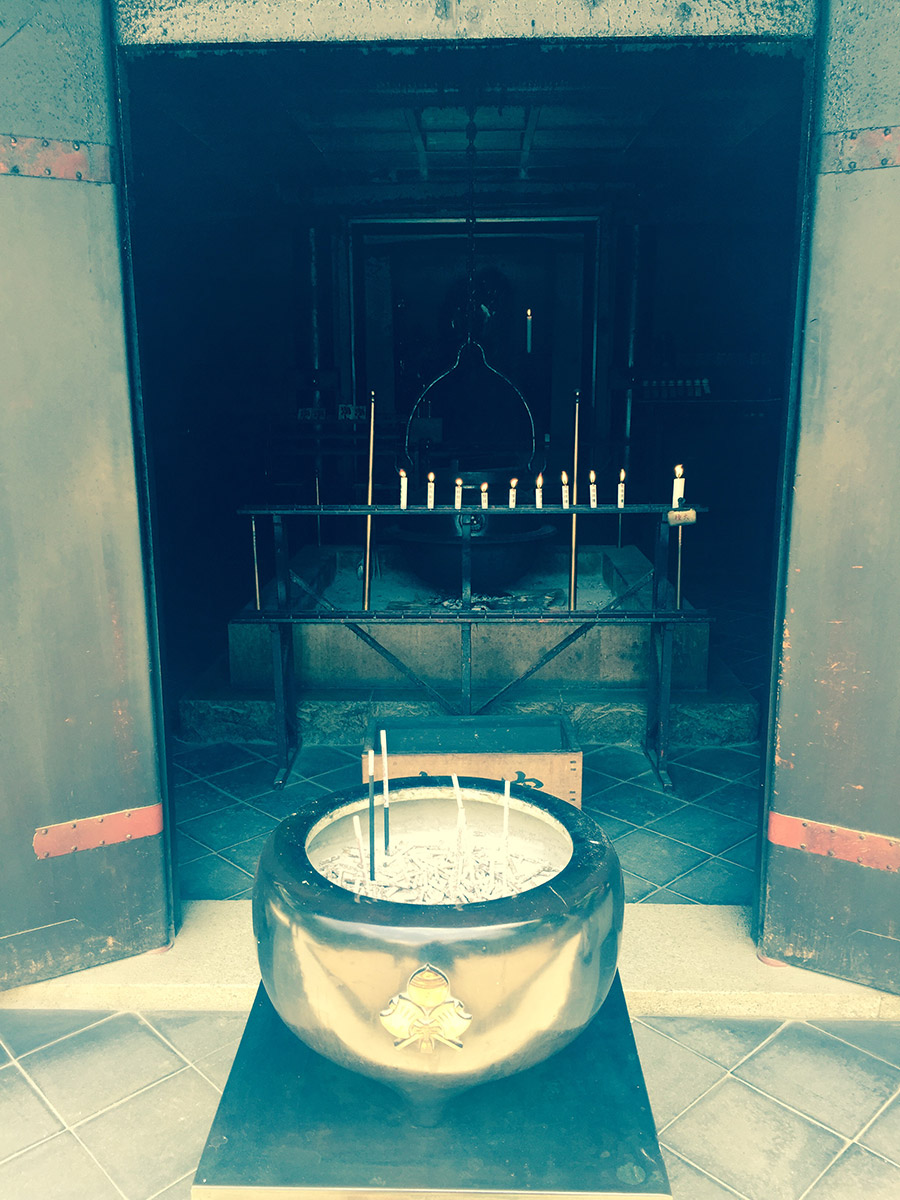
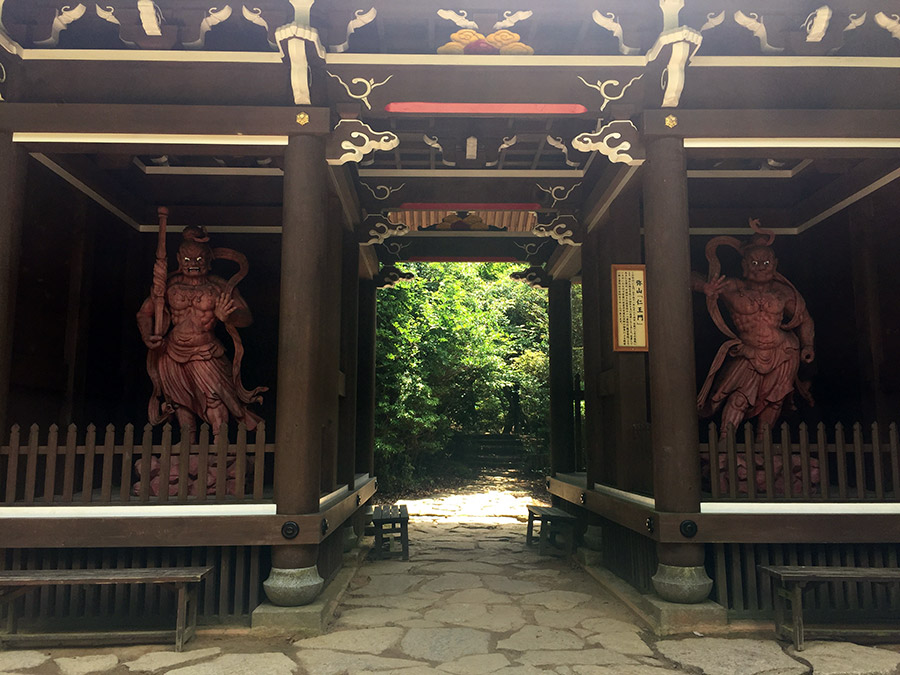
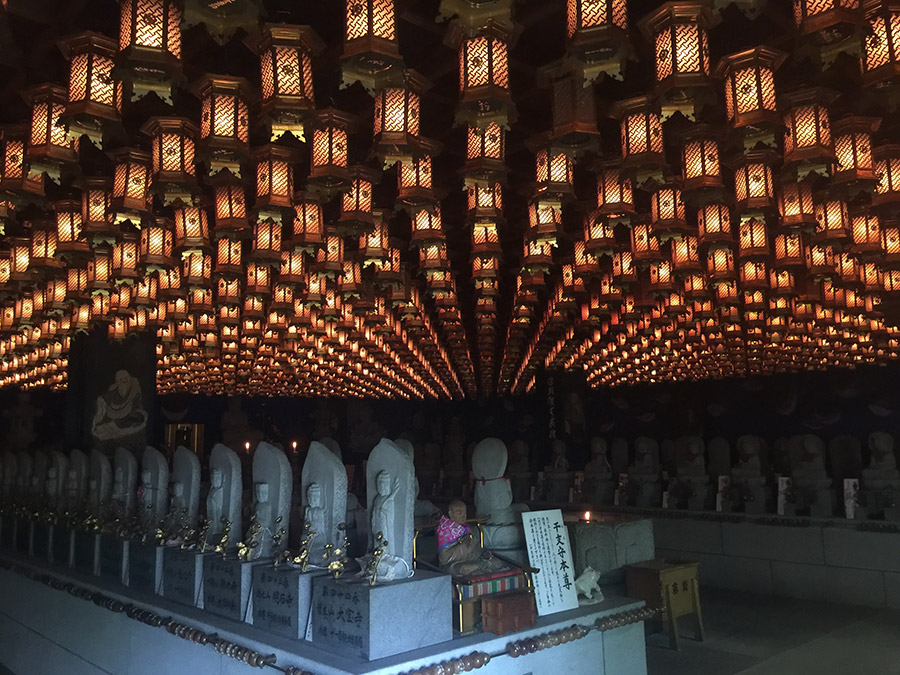
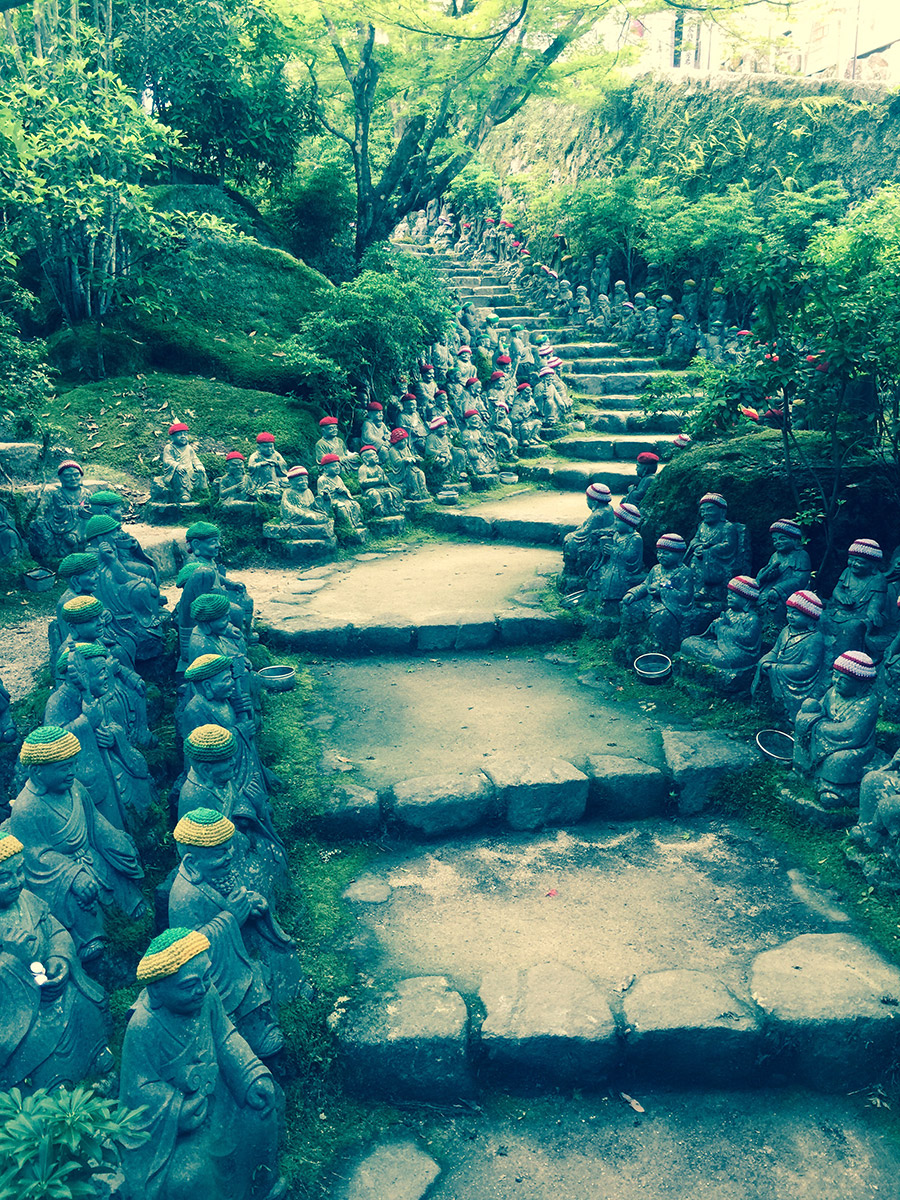
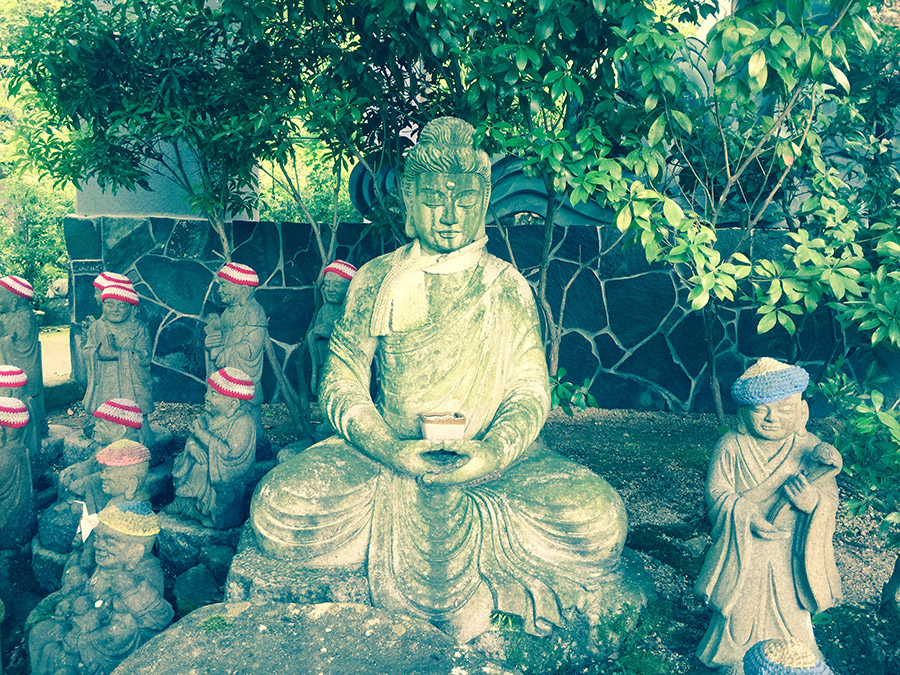
I spent the whole day hiking around the mountain, visiting temples and going through about six bottles of water and Pocari Sweat. The shelter at the very top of the mountain had one guy and a counter selling “Oral Hydration Solution” which I thought was hilarious and a better name than Vitamin Water.
On the way down the mountain I passed several hikers questioning their life choices on their hike up and I got to give them the “Oh shit. Oh God in heaven no you’re only 12% of the way up” speech, which was awesome.
An American once wrote that he’d believed he lived in a civilized country until he went to Japan. This is pretty accurate. You think you’re at the top of the ladder, but Japan is another rung up. Aside from the safety and the courtesy, the hygiene, the manners, the lack of trash anywhere and the fact that the men’s room at the bus station is cleaner than your bathroom at home, this is also rubbed in your Neanderthal face by their crazy fast trains.
Trains are the way to get around in Japan. I’m a big fan of road trips, but driving in Japan is choosing to forego a two-hour bullet train in favor of an eight-hour drive. Very, very few people drive in Japan, to where traffic in downtown Tokyo is lighter than it is in my sleepy suburb of Minneapolis. And this makes sense, since their trains are awesome.
And awesomely confusing. We spent our first afternoon of the trip getting on a series of the wrong trains or the right train going the wrong way, etc. After about two hours of this I began to fear that my clockwork-intricate two-week itinerary was hosed. Thankfully we started to figure things out pretty quickly.
The biggest clusterfudge came when I tried to board a train somewhere in Nagano, and I was stopped and told I needed a special express ticket to board. Oh! But I already swiped in with my Suica card, wouldn’t I be double-charged if I bought a ticket as well? And wouldn’t it break my Suica if I switched to a paper ticket without badging out? I posed this question to the station agents, who spoke absolutely no English whatsoever. After many attempts to explain this rather complicated question with hand gestures and the twelve Japanese words I knew, they decided I wanted to see what the balance on my Suica card was. I attempted to explain again. After a long exchange, they decided I had never ridden on a train before and assigned me a minder to make sure I got home safely.
This very nice young woman walked me to the ticket counter, took my money, bought me an express ticket, walked me to the platform, showed me where to stand to wait for the train, and when the train came, showed me how to board the train and where to sit down. This was hilarious and completely embarrassing. Thankfully she didn’t show me how to use the bathroom or pin mittens on my jacket so I wouldn’t lose them.
My favorite moment of interaction with this woman came while we were standing on the platform, waiting for the train to come. I was trying to charades my way through explaining that she didn’t need to wait with me, I understood how to get on the train, I just hadn’t understood how the tickets worked. I held up my Suica card, mimed waving it at the turnstiles nearby, said “BOOP!” and shook my head no. She burst out laughing and nodded excitedly as she finally understood what I was talking about. She held up her fingers in a big “OK” sign and smiled, reassuring me that it would all be OK now.
After talking to other passengers on the train I figured out that the express ticket is a supplement in addition to your swiped Suica fare, so I’d be fine as long as I badged out at the next station. Just one of those things everybody knows except you.
This knowledge came in handy as I encountered all manner of train weirdness over the rest of the trip, including express trains where you had to pay a dude on the platform to get on, who may or may not have actually worked for the train company.
All that being said, none of this matters when you’re on a bullet train screaming across the countryside at 185 miles an hour. This is really, really fast. The best part is when you fly through a station your train’s not stopping at. If you lean your head against the window, the people on the platform two feet away distort and stretch out as they whiz past, like the warp effect on Star Trek.
Do not, however, under any circumstances, get on the local bullet train. I had a day where my itinerary got so jacked up I had to abandon what I’d planned and just got on trains that looked like they were going in the right direction, and I happily hopped on one bullet train that turned out to be the local. I figured this would still get me there quickly, since it’s still a bullet train, right? Nope! This train would tear ass at unbelievable speeds between stops, and then stop at every single station and wait for 15 minutes at each one. After an hour of this, a guy I’d seen at the first station passed by on a bike and I abandoned this terrible idea.
Several trains and a ropeway led me from Kyoto up to mythical Mount Kurama, where reiki was invented by a monk meditating on the mountainside and where legend has it the spiritual being Sanat Kumara first appeared to humanity. The train winds though small villages and the gorgeous mountains, packed densely with trees that look like green flames rising up the mountain side.
The station at Kurama features a large statue of the supernatural tengu thought to live within the mountain, the Shinto fire god celebrated in a yearly festival:
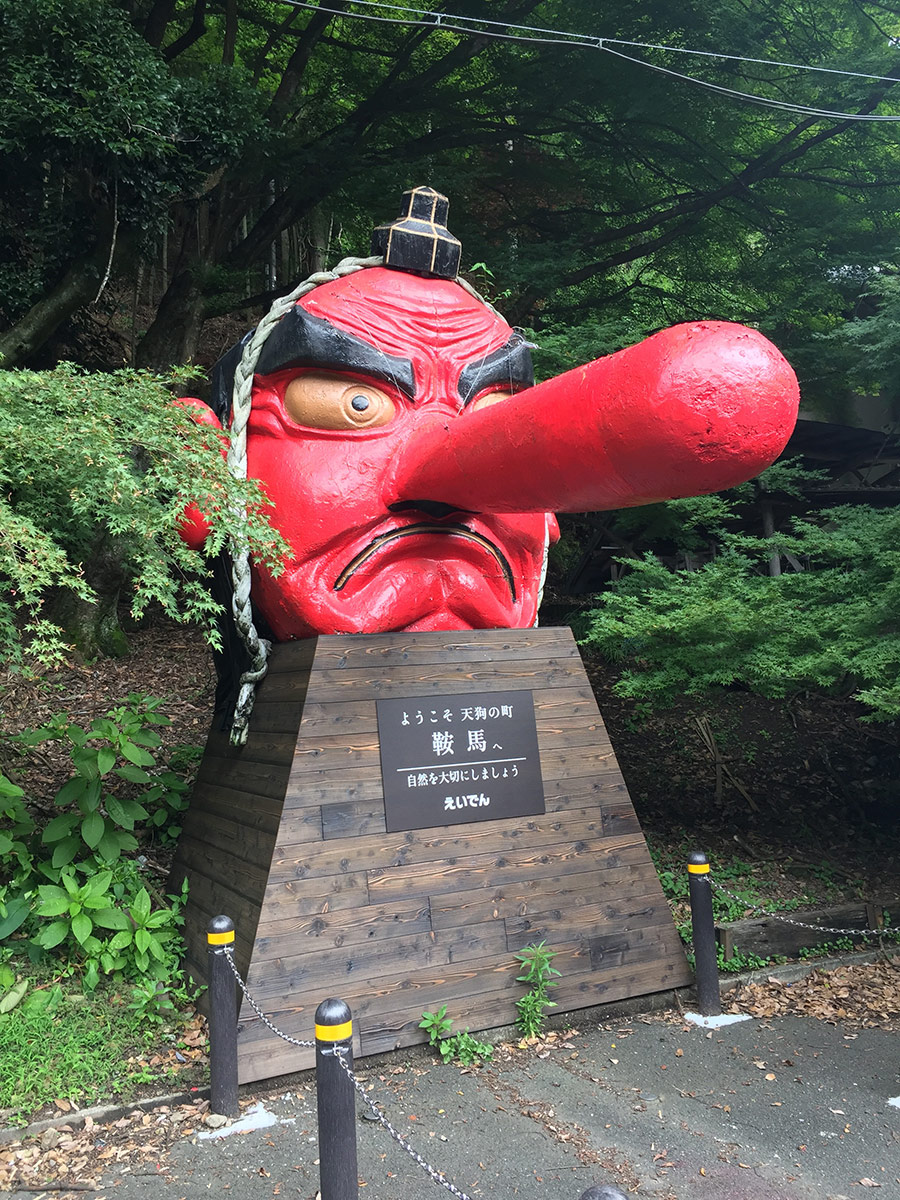
This character recurs in the form of little toys at the various shrines on the way up the mountain and in carvings at Kurama-dera temple at the mountain top.
The hike up takes you through dense, enchanting woods...
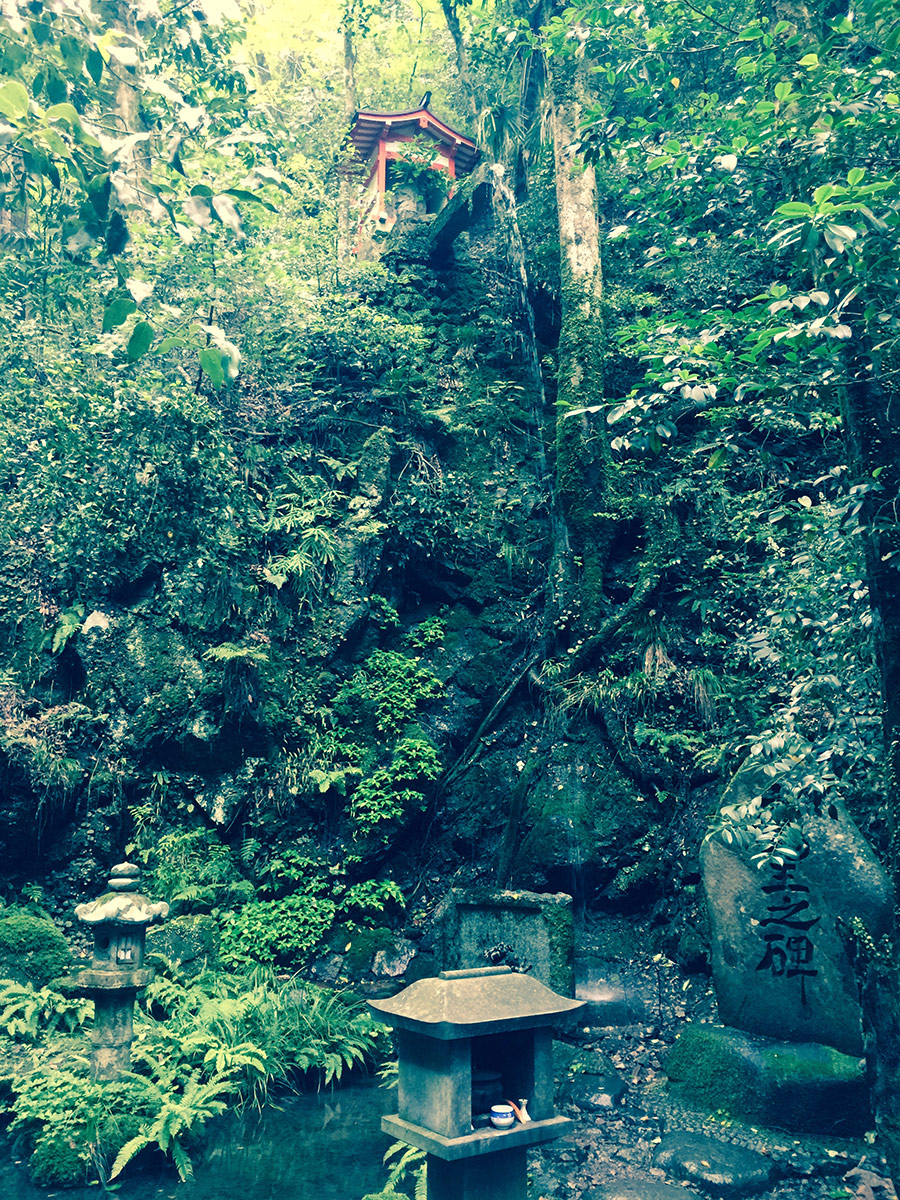
...and past many fire shrines, until you reach the steps and lanterns that lead you up to the temple...
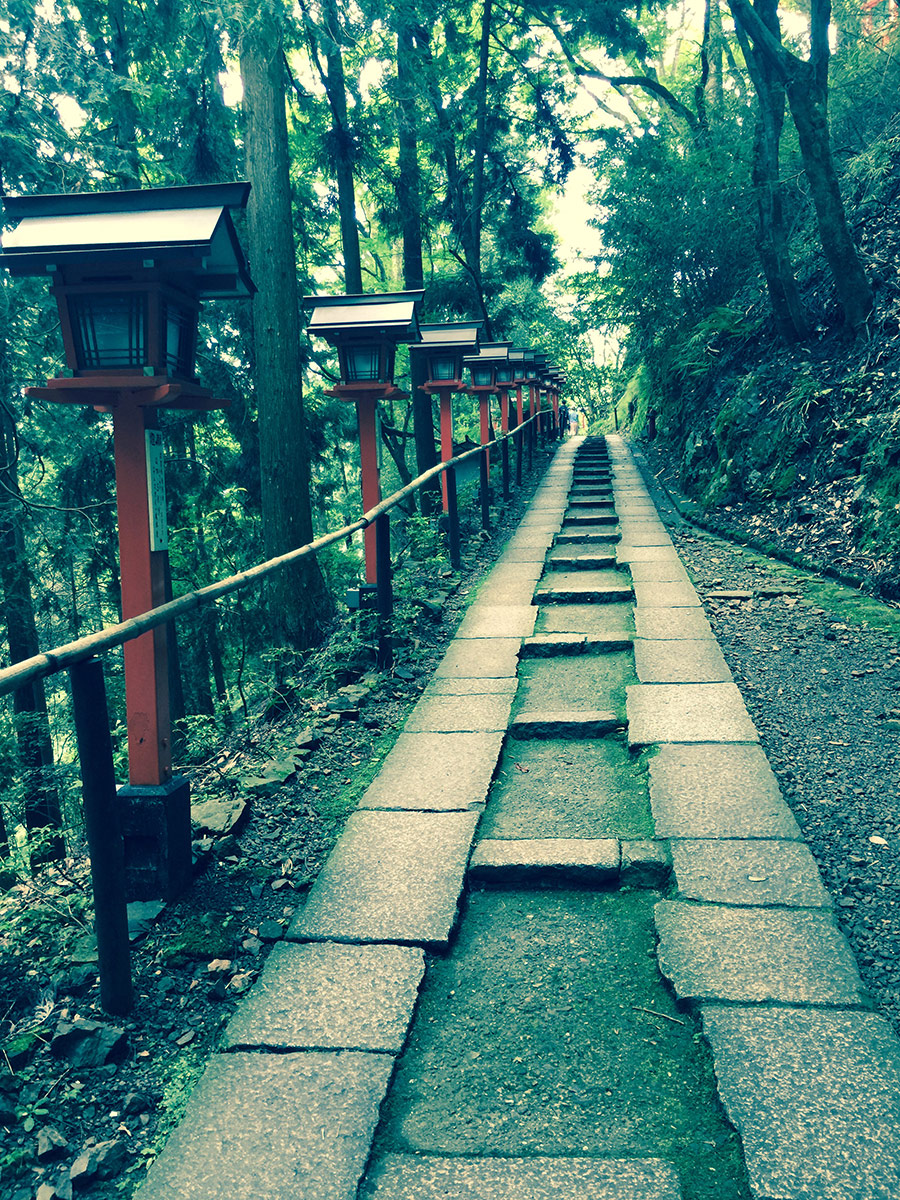
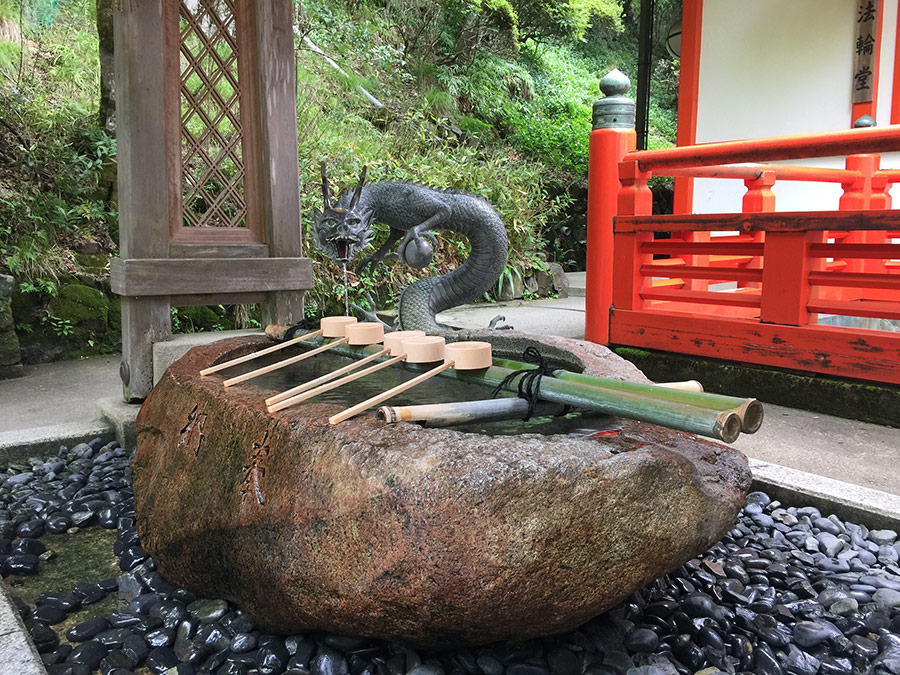
When you reach the mountain top there are some thoughtfully-placed benches for you to sweat all over as you pray for your breath to return.
Later that day I found myself strolling through Ise Jingu, the holiest and most-visited Shinto shrine in the country. Ise is considered by many to be the soul of Japan. Japan features a fascinating mix of their native nature-worshiping Shinto religion and imported Buddhism, often co-existing side by side. Ise was a great opportunity to see pure Shinto, with its wide-open crushed-rock pathways peacefully wandering through the beautiful groves of tall cypress trees.
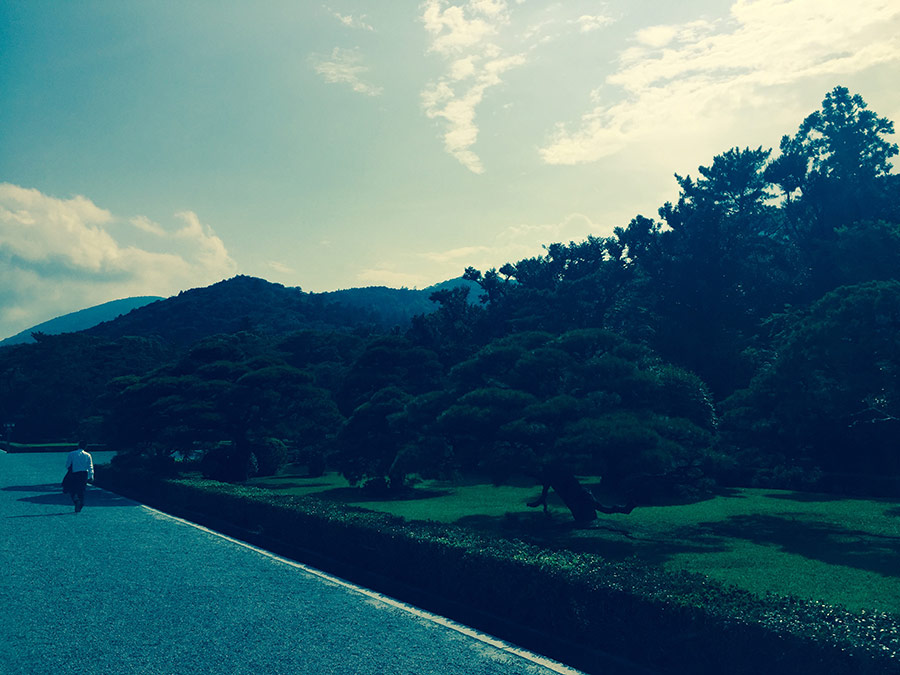
To enter Ise’s inner shrine you bow at a huge torii gate before passing through the gate and crossing the river on a wide wooden footbridge. Upon entering the shrine you have the opportunity to wash your hands in the Isuzu river, a symbolic act of cleansing your mind and body. Praying at the various shrines to the God of Wind and the God of Wells involves tossing a coin in the offering box, ringing the bell to call God into that space, bowing twice, praying, clapping twice, and then bowing deeply.
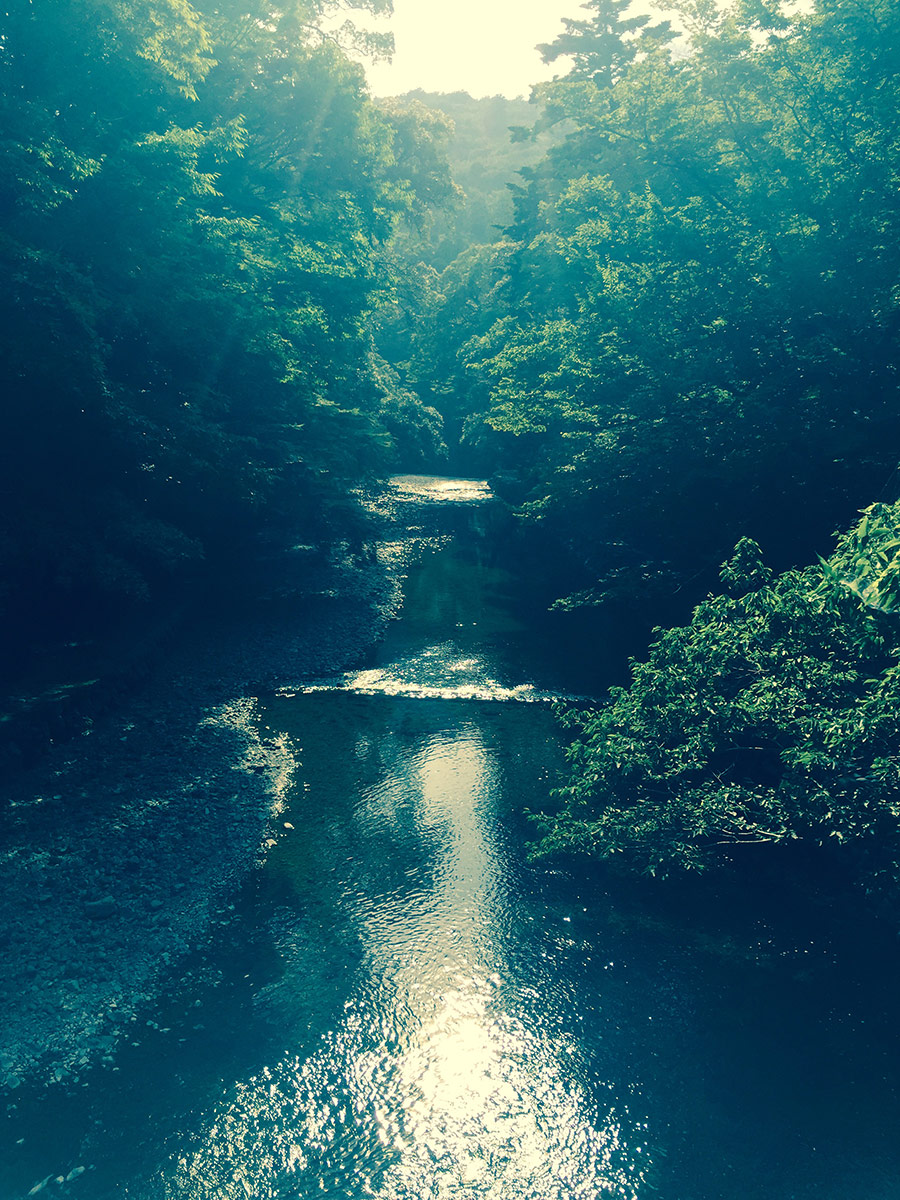
Shinto shrines are very unusual in that they honor impermanence by tearing the buildings down and rebuilding them every 20 years. So the land is ancient, the woods are ancient, but the temples are perpetually reborn.
The holiest innermost shrine at Ise can only be visited by the imperial family, the rest of the population only gets to see it through a screen. This is the plan anyway, somewhat defeated by the fact that the fence around the shrine is only about five and a half feet tall and I could easily see over the top of it. So sorry Japan!
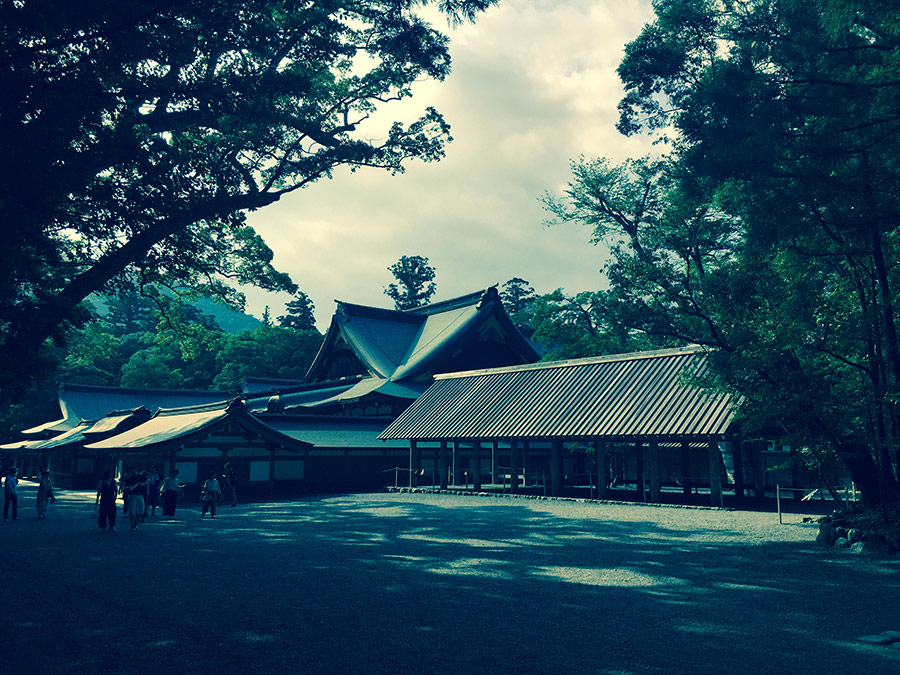
I walked around Ise meditating with a piece of Chrysanthemum stone, a mineral linked energetically with the Ise shrine. The temples and shrines were quite lovely, but it was really the woods and river that felt special there, which made sense given the beautiful Shinto reverence for nature. If I could have spent more time at any one place in Japan, I would have spent it here.
That night I ended a very full day by taking a series of progressively less and less populated trains up through the mountains of Nagano, to the ski resort town of Hakuba. Yoko, the owner of the ryokan where I was staying that night, picked me up at the train station late that night because customer service in Japan is mind-blowing.
At that point I hadn’t encountered anyone who really spoke English in about three days. Without realizing it, I had adapted my speech into a bastardized form of sign language crossed with charades. I didn’t even realize I was doing this until I spoke to Yoko, who had lived in Colorado and spoke excellent English.
“Is it going to be cold (shivers) up (points up) on the mountain (makes triangle with fingers)?”
Yoko looked at me like I was completely insane.
Dropping the charades, I explained to Yoko that I wanted to climb Mount Karamatsu the next morning, to see the absurdly photogenic Happo Pond.
In the morning when I woke up, Yoko had laid out maps of the mountain, local tourist guides, a weather report for the day, a coupon for the chairlift to the hiking trail, and juice. Customer service in Japan is insane. Yoko mentioned that there was still a little snow on the mountain, had I brought hiking poles? Of course I had not. So she ran and grabbed me hers. Wow.
Riding the chairlift up the mountain, I laughed every time my feet scraped the ground. See the first chapter on being tall in Japan.
The lift rose up into the clouds, as the eerie fog wrapped all around me.
I hadn’t quite got my act together enough to be the first person to the lift as planned, and I started the hike with approximately 4,000 elderly Japanese people on the trail in front of me. Thankfully they stopped to rave about their new elastic diapers long enough for me to pass the entire group and after a tough climb and some slipping and sliding around in the snow, I was the first person to reach Happo Pond.
The fog was dense but this added a mystical quality to the pond. It reminded me of going to the beach on a foggy day in Northern California, where the grey of the clouds blends into the grey of the ocean to create a misty void. I meditated in the silence as fog blew across the surface of the pond.
In time, other hikers arrived and the fog cleared enough to take some really baller photos:
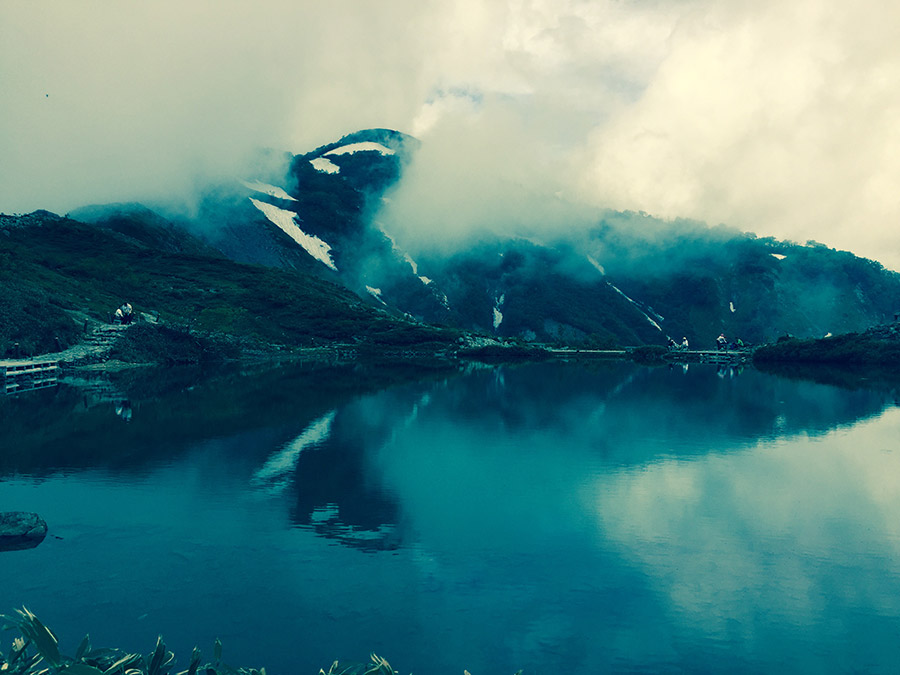
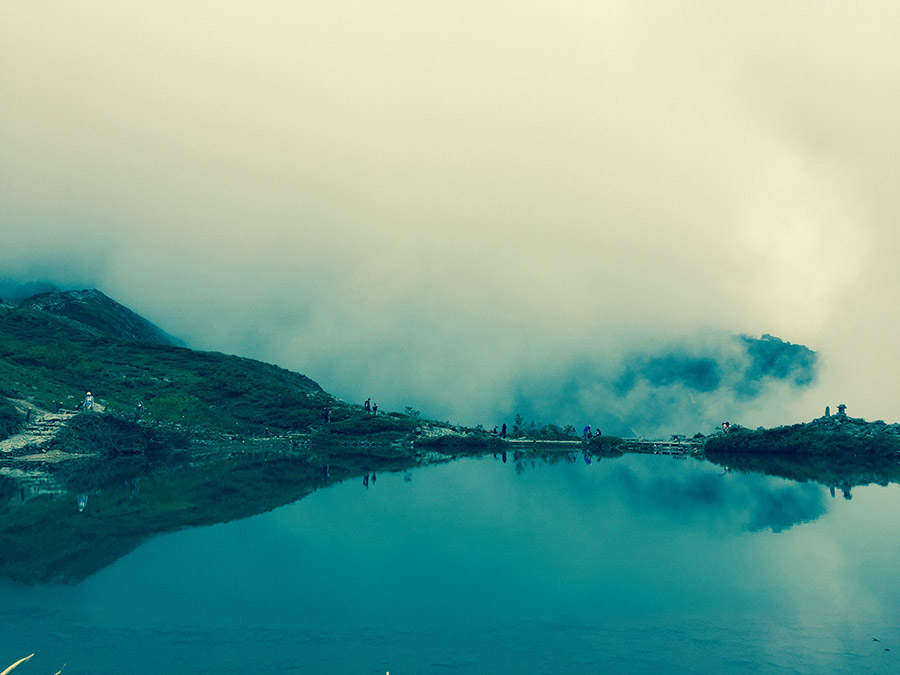
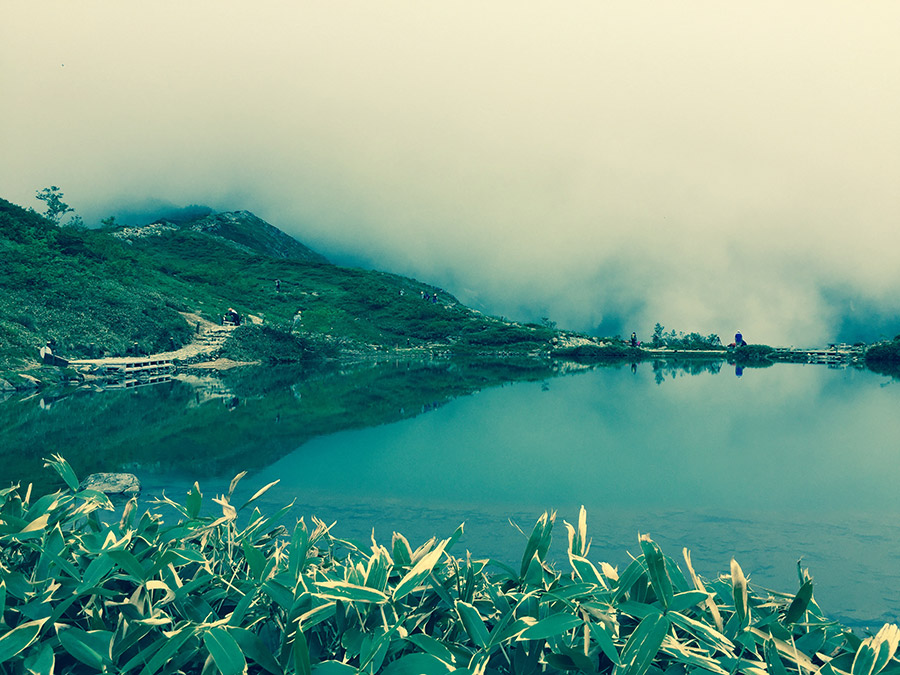
Frogs croaked from all sides of the lake in an animated, belchy conversation. The mountain peaks peeked through the clouds just enough to tantalize us.
After a few hours though it became clear that it wasn’t going to clear up enough to make climbing the rest of the way to the mountain peak worthwhile, since I already knew what the inside of a cloud looked like. I made my way back down to the town.
Hiking down the mountain, I passed a group of at least 20 school-aged children, getting to exchange greetings with each of them, one after the other. The looks on their faces were priceless, clearly they were not expecting to see a yeti come down the mountain. I’m pretty sure a few blurted out Japanese profanities before their socially conditioned politeness kicked back in.
Yoko met me and took me to the train station, but we missed the train by about two minutes. The next one wasn’t for two hours. I was fine just reading a book at the station, but Yoko would have none of that and proceeded to give me an amazing tour of Hakuba, that only someone who grew up there could provide. We drove all over town, talking about what it had been like when the Olympics were there in 1998. We stopped by her daughter’s school and in addition to a great glimpse of everyday life in Japan, I got to see the practice facility where kids start down the path of learning the absolutely terrifying sport of ski jumping. Then we visited the actual facility where the Olympic ski-jumping was held in 1998, and I got to go to the top of the tallest jump and look down.
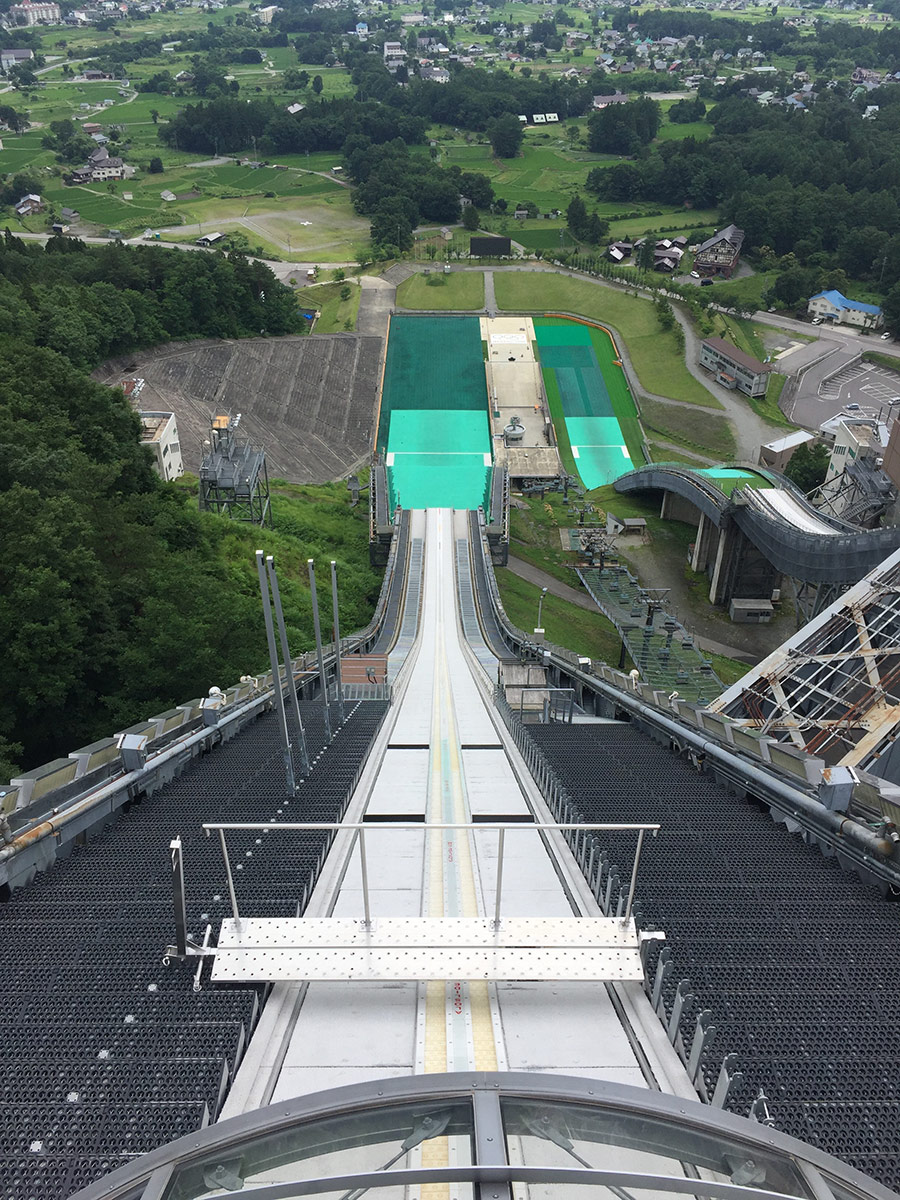
I can’t even cross-country ski so this would be a one-way trip for me if I ever attempted it, but it was pretty cool to see.

Afterwards Yoko dropped me at the train station, leaving me feeling like I’d spent the day visiting a friend. You are not ready for the customer service in Japan.
When I laid out my itinerary for visiting Japan, I originally didn’t have Tokyo Disneyland on my list at all. I guess I felt like it would be a waste of Japan time to visit something so American. Then a friend asked why I wasn’t going and I instantly realized I wanted to go to Tokyo Disneyland really badly.
Turns out they have two parks, Disneyland and Disneysea. Theme park aficionados will tell you to skip Disneyland and just go to Disneysea, which many consider to be the best Disney park in the world, due to its uniqueness and crazy level of theming. So I decided I’d spend most of the day at Disneysea and then check out Disneyland in the evening.
I was fully prepared for a strange day since the only way to stand out more than being a tall white guy in Japan is to be a 40-year-old man with no kids at Disneyland. I got my first dirty look about 30 seconds after entering Disneysea, stopping to take a picture of the giant wet globe fountain they have in their main square. A Japanese father looked at me like “What the hell is wrong with you?” I don’t know dude, we’re still trying to figure that out.
The funniest thing all day was watching people in line with me for rides try to figure out who I was there with. If I happened to be standing next to a single mom with a kid, this offered them an easy explanation and there were fewer stares. The most stares I got was when I happened to be standing next to two early-teenage Japanese girls who were wearing matching outfits. Thankfully most Japanese people were too shy to share their dark imaginings with the security staff.
Another thing the Japanese folks didn’t seem to grasp was the single-rider line. This is where you can bypass most of the line by agreeing to be seated wherever they can fit you instead of riding next to your friends and family. Americans often use this line even if they’re there with other people, since sitting next to a stranger is a small price to pay for cutting an hour out of your wait in line.
Absolutely no one did this in Japan. I was the only person who used any of the single rider lines and as a result I just walked onto whatever rides I wanted, bypassing thousands of people waiting in line. This is also not a great way to blend in.
The Japanese Disney parks are quite close to Tokyo, which makes them both very easy to visit and very crowded. I picked a good day, which was fairly crowded by American standards but practically barren by Japanese “there are so many people here I can’t breathe” standards.
Disneysea was indeed beautiful, featuring a giant volcano...
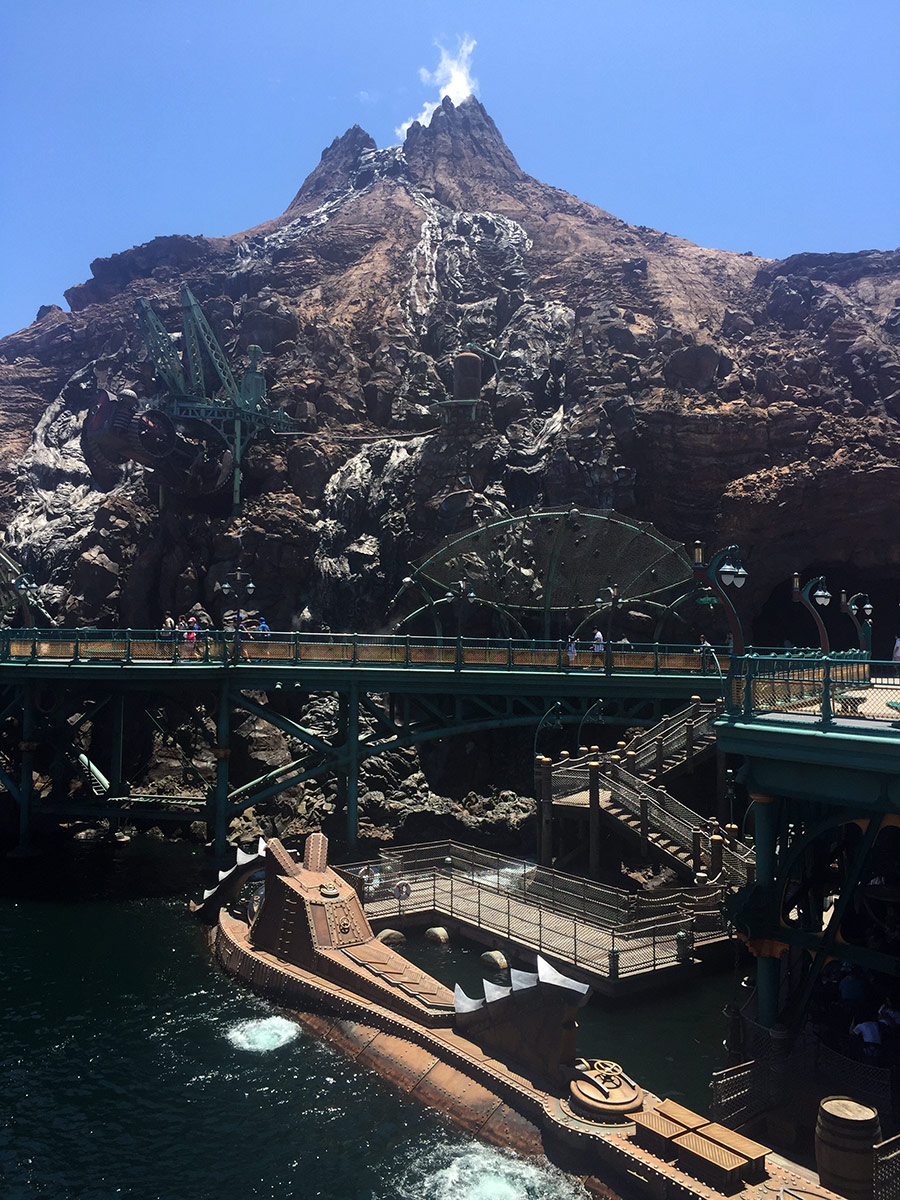
...and a huge central lagoon where every hour or so there was a huge and absurdly loud Pirates of the Caribbean naval battle show. Japanese folks seemed much more interested in these kinds of shows than American crowds tend to be. My favorite aspect of this was hearing Japanese pirate actors yell “Yo ho ho!” in an extremely Japanese fashion, like it was one word. “Yohoho!”
Disneysea also features a huge American waterfront area, featuring a Titanic-sized ship and a complete recreation of New England. It is very bizarre to see 100% Japanese people eating at a fake Massachusetts chowder restaurant that’s serving sushi.
At one point I was marveling at the impressive fake sea that bordered one whole side of the park, until I realized it was the Pacific Ocean.
One of the most fun things was seeing how rides I was familiar with from the US were altered to work in Japan. The skull on the Indiana Jones ride yelling at you in Japanese is way scarier than seeing the same thing in English. They don’t know what the hell the Twilight Zone is in Japan, so there the Tower of Terror is possessed by an African doll that’s tormenting an arrogant American industrialist, all of whom speak Japanese for some reason.
The best thing about being in a theme park in Japan is being on a ride with a ton of Japanese schoolgirls, who absolutely lose their minds on roller coasters. Whatever rules there are about being demure in daily life go completely out the window when you’re in a possessed elevator in the dark, and it’s hilarious.
After three hours I had ridden every ride in the park three times, including the bizarre Voyage of Sinbad dark ride that has a song that’s Small-World-level catchy in spite of being entirely in Japanese.
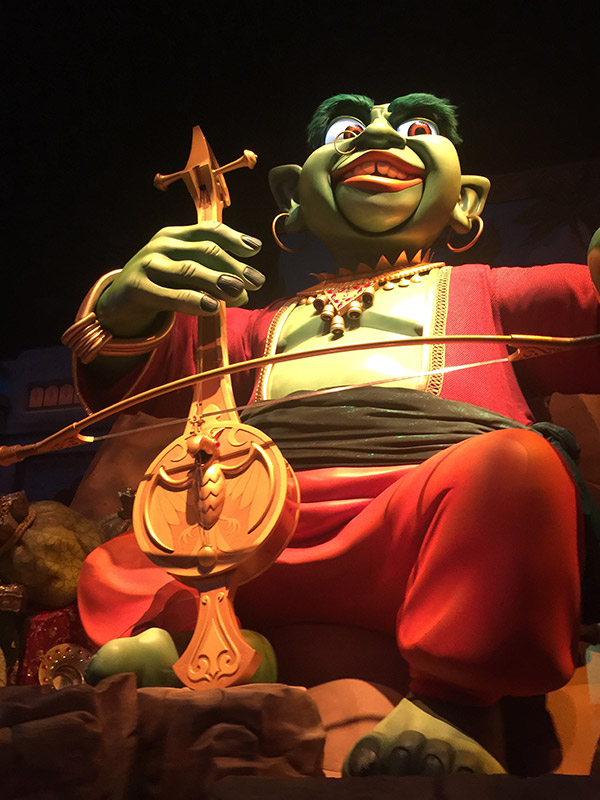
It was only 11am. Damn, what am I going to do the rest of the day here? I decided to bail and spend the rest of the day at Disneyland.
This was a good choice. Tokyo Disneyland is indeed very similar to the Anaheim version, but just being in Japan makes it different enough to be a lot of fun.
Plus, they have approximately 400 different kinds of popcorn. Curry popcorn, honey popcorn, soy sauce popcorn. Japanese people are crazy for novelty popcorn at Disneyland. They prize collector buckets you can bring back to the park on subsequent visits for cheap refills. Kids were walking around with extremely elaborate R2D2 and BB8 figures nearly as big as them hanging around their necks, which was really confusing until I realized they were full of popcorn.
This love of funky popcorn clashes with the general Japanese antipathy toward walking around and eating things. Traditionally, you sat down to eat your meal, you goddamned animal, but this stitch in the social fabric has recently been undone by the lure of adorable popcorn buckets.
Due to the single-rider loophole, I was able to go on about 25 rides at Disneyland, which is an absurd number for one day. Some highlights:
The main thing I wanted to see was Pooh’s Hunny Hunt, a new high-tech trackless ride that’s unique to Tokyo Disneyland. You ride around in a big honey pot with a mind of its own, through Pooh’s day and his trippy indigestion nightmares. When you go into Tigger’s room, the whole room bounces. I have no idea what any of the characters were saying at any point and this is the best ride in the world. I rode it three times.
The Monsters Inc ride is up to a similar level of crazy polish, diminished somewhat by the stupendously long line. But it’s an interactive ride in the dark with flashlights and the Japanese folks got way into this.
Pirates of the Caribbean is surprisingly unpopular in Tokyo, something explained somewhat by the whole ride inexplicably being in English. Yohoho!
Most of the rides, Space Mountain, Splash Mountain, Big Thunder Mountain, The Haunted Mansion, Roger Rabbit, Star Tours, etc. are very similar to their American counterparts, but it’s surprising how much having everything in Japanese puts a fascinating spin on things. Having Darth Vader yell at you in Japanese is awesome. I couldn’t help but laugh every time some characteristic English phrase was pronounced in a very Japanese fashion, like a scared Roger Rabbit yelling “Dip!” (“DEEEEEP!”) Even the nonsense words in “Zip-a-Dee-Doo-Dah” on Splash Mountain are sung with very Japanese pronunciations.
I spent most of the day trying to figure out why they didn’t get Japanese voice actors who sounded anything like C-3PO or Winnie the Pooh, until I realized the Japanese audiences have probably only ever seen dubbed versions of these movies, and maybe this is exactly what the dubbing actors did sound like.
Peter Pan was insanely popular for some reason, far more than Snow White or Pinocchio. I don’t know what this means.
One important note: Japanese children are the cutest beings in existence. Sorry, everyone else, you lost. This whole post would be full of pictures of adorable Japanese children if that wasn’t creepy as all hell. They’re also amazingly well-behaved. I only saw one kid crying in my entire time in Japan, and I think he was just afraid of me. Understandable. So it was pretty fun to see families enjoying themselves together all day at the park.
Also, Japanese folks dress up for Disneyland. I’ve never seen that much Disney gear anywhere. One woman in line in front of me was wearing a shirt with a thousand Minnie Mouses on it. They all had speech bubbles. One said “I can do it!” and I was thinking “Oh cool, this is like a girl-power thing.” Then I started reading the other bubbles. “I hope my boyfriend calls!” Okay, maybe not.
My last full day in Tokyo, when I wasn’t watching robots disco fight I was lounging in beautiful Shinjuku Gyoen National Garden...
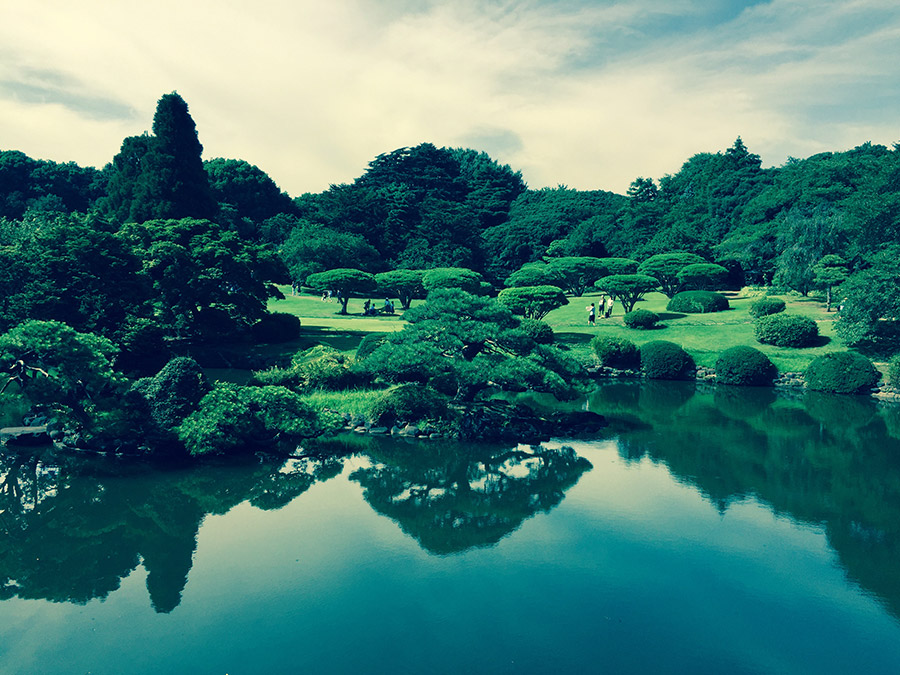
...and visiting Zojoji Temple.
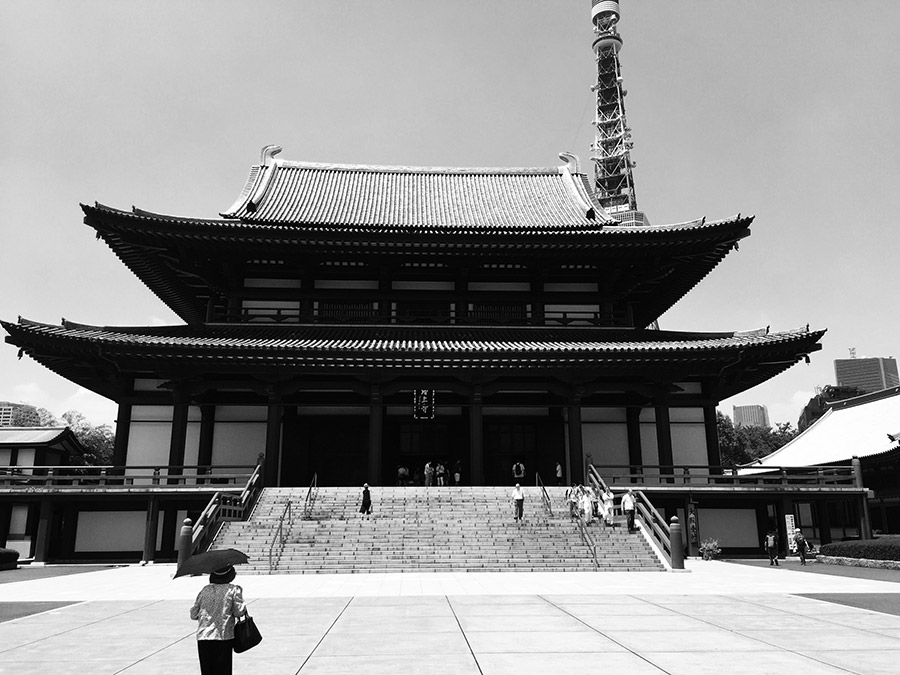
There happened to be a Buddhist funeral service being held at Zojoji when I arrived, and this was mesmerizing to observe. The monks chanted in unison and I could feel the energy in the room powerfully swell and move, like a portal was opening to ferry the dead to the afterlife. I spent a long time after the service reflecting on the spiritual power of sound.
As if that wasn’t enough, Zojoji also had an impressive collection of Jizo Bosatsus in their courtyard. Jizo is a Japanese bodhisattva who rescues souls from hell and protects the spirits of children who have died. His statues are often seen dressed in clothing made by grieving parents as thanks for watching over their lost children.
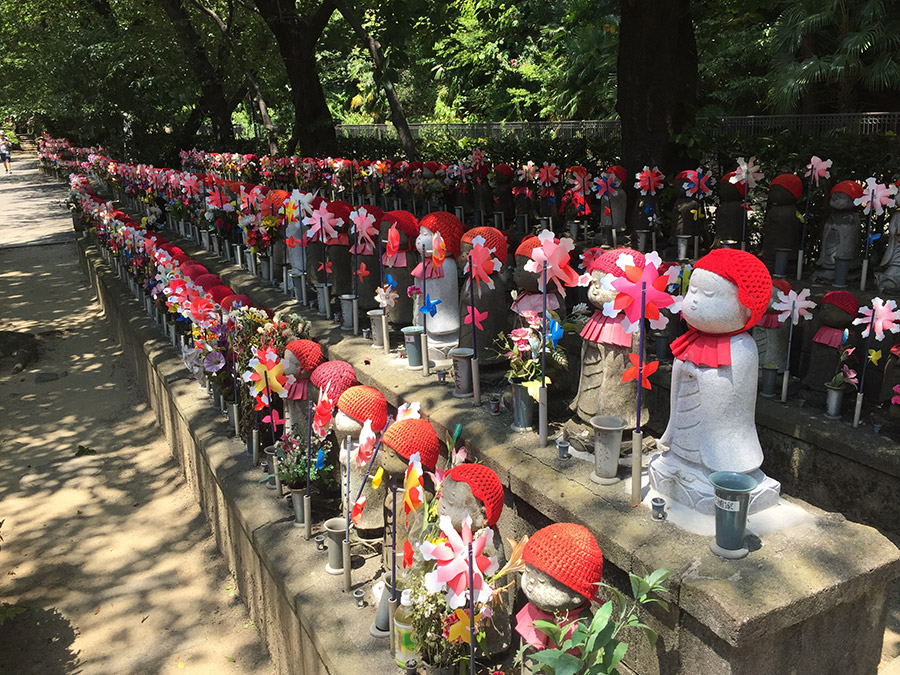
My last morning in Japan before my flight home, I played it smart and stuck close to the airport-pssssh, no I took a train a few hours south all the way down to Hakone to see their amazing sculpture garden:
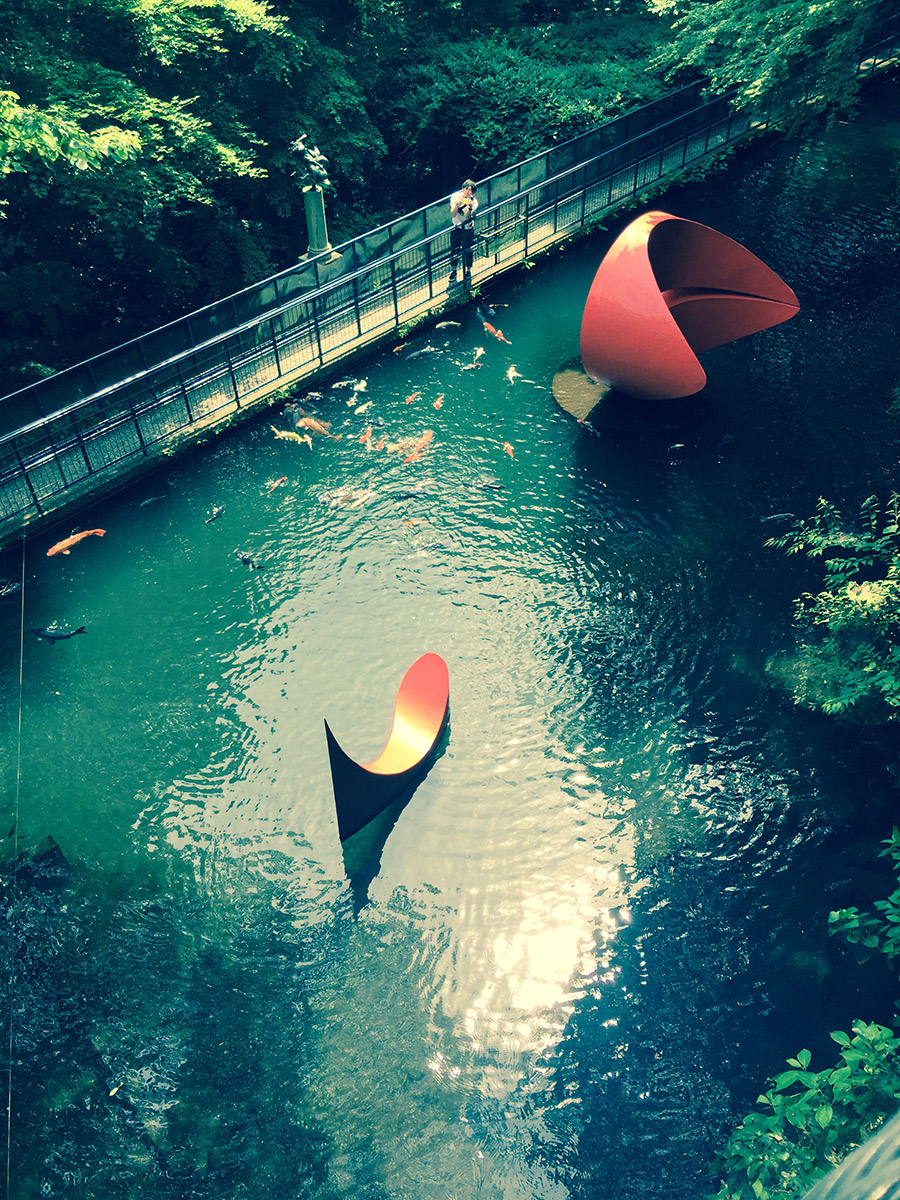
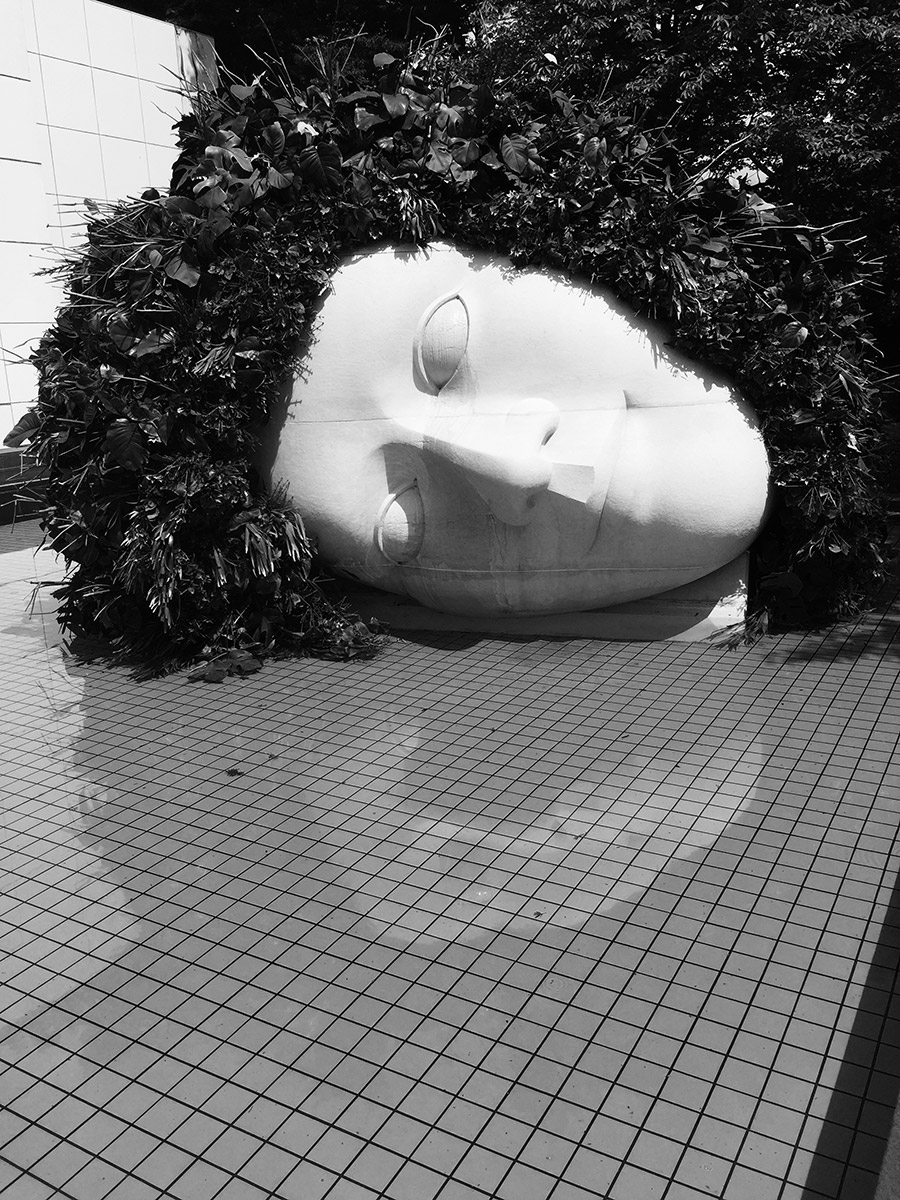
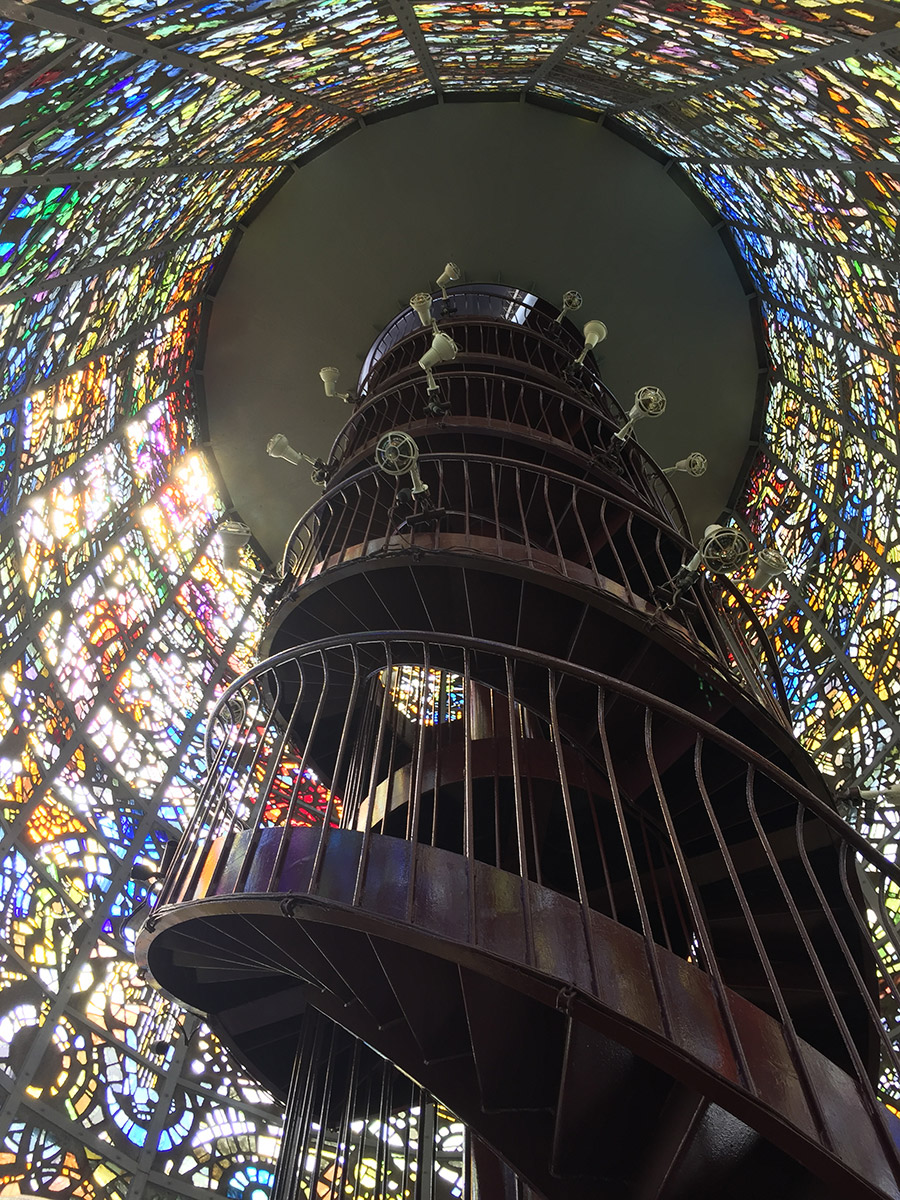
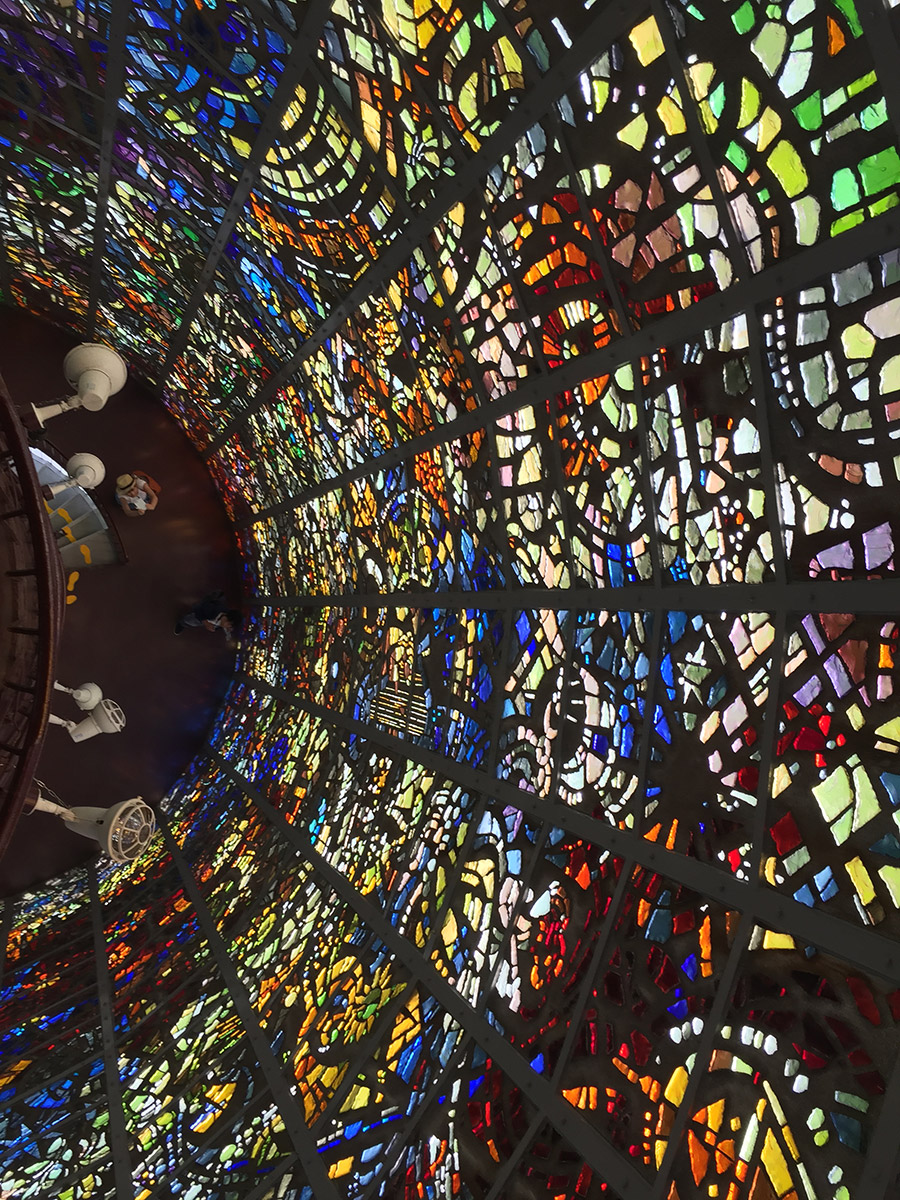
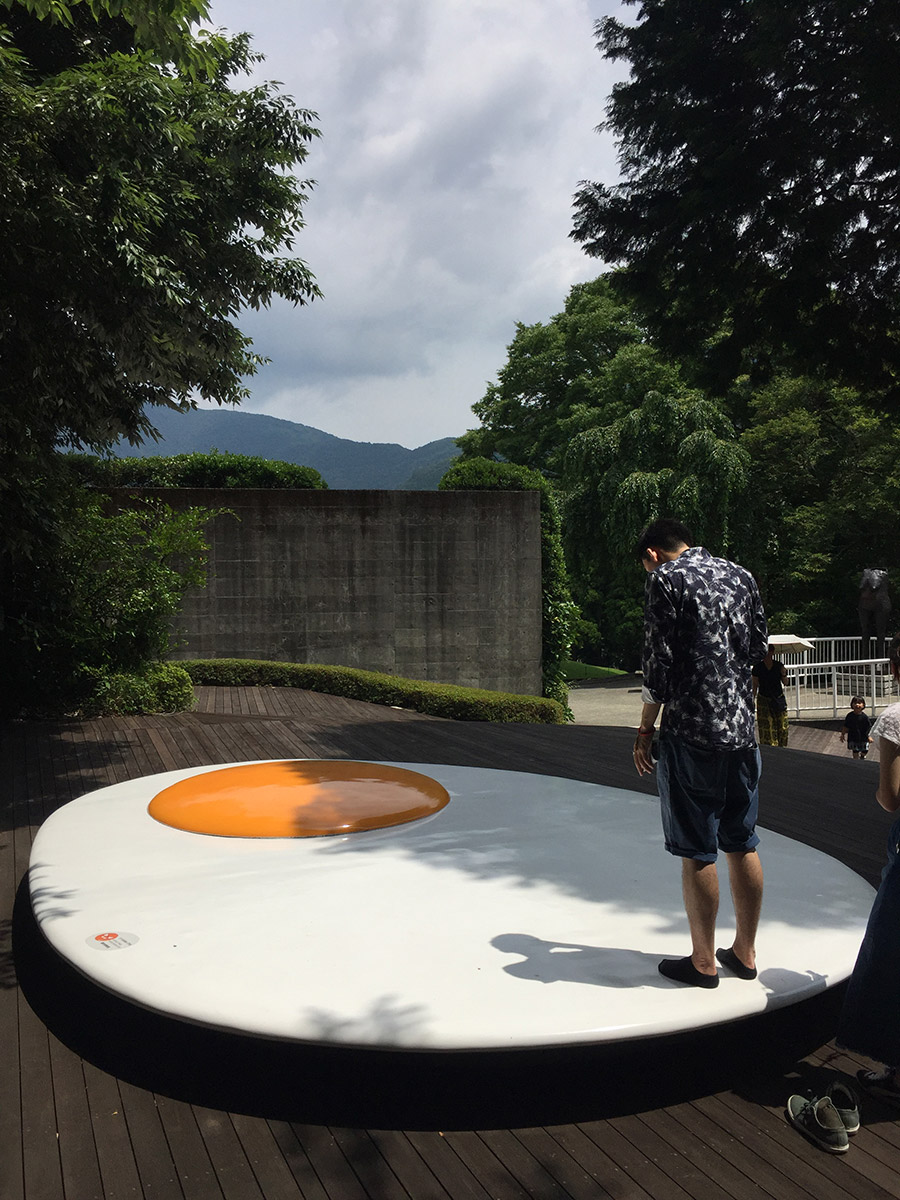
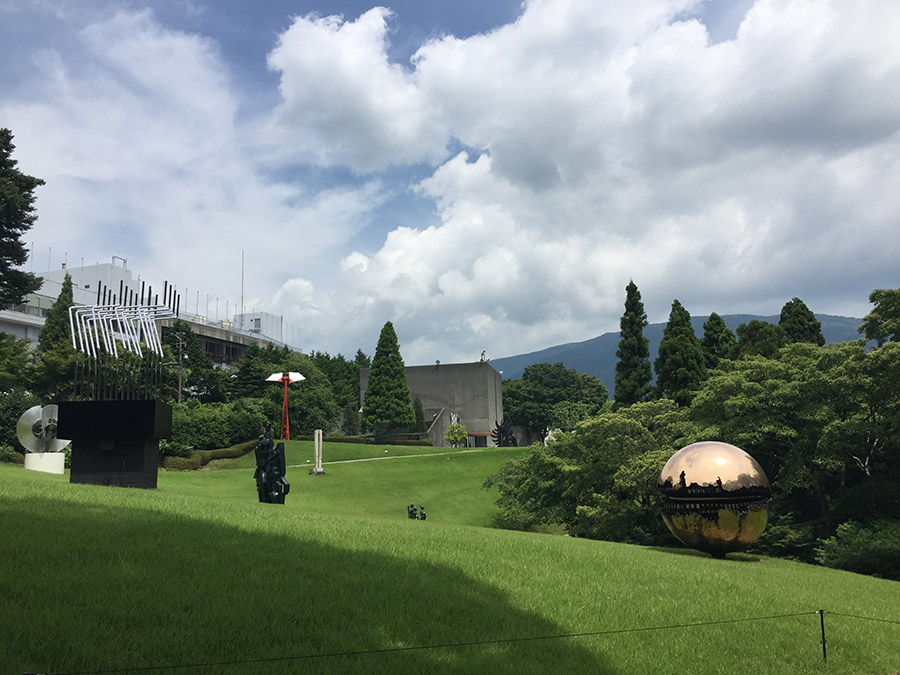
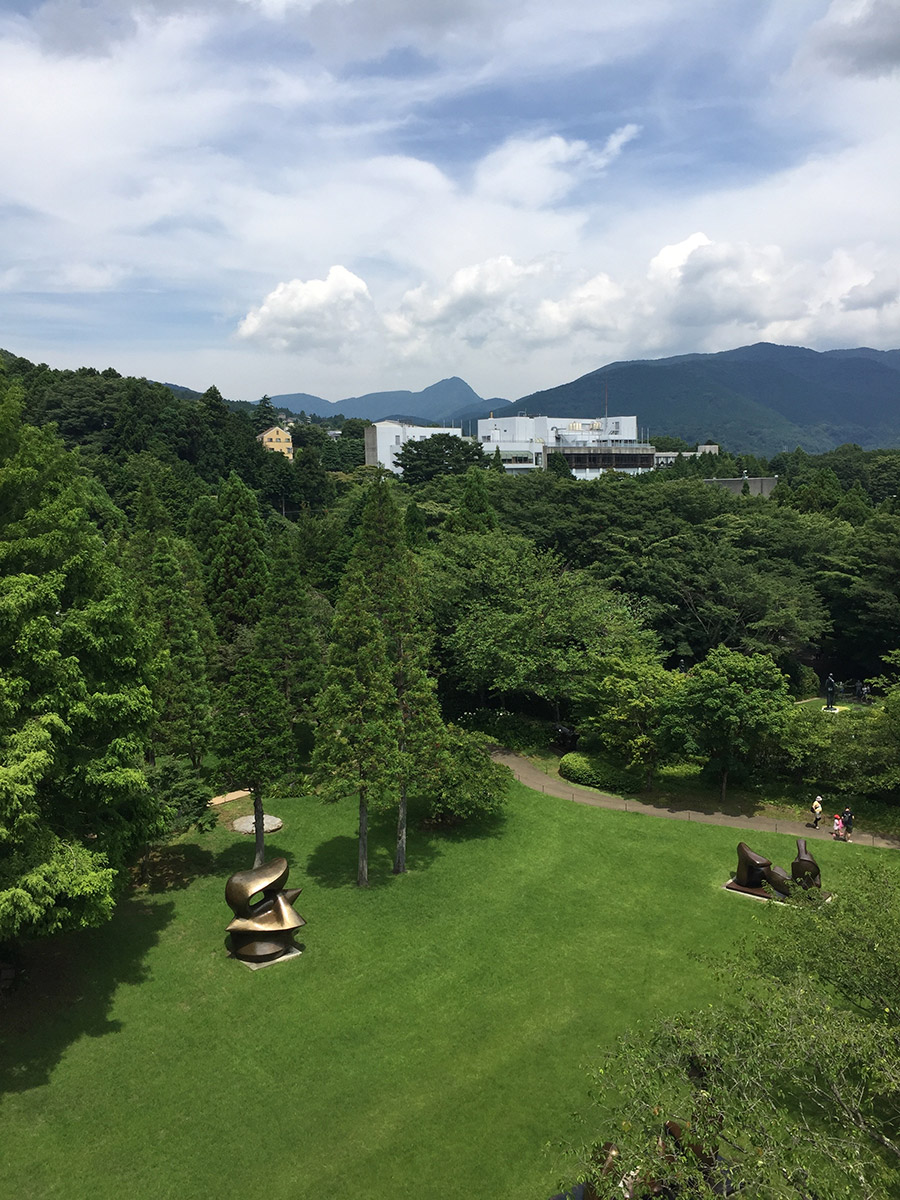
After that I trekked back up to Kawasaki to see the Anata No Warehouse, a huge arcade modeled after a future dystopian version of the Kowloon Walled City in Hong Kong.
Kawasaki was the first place I’d been to in Japan that was actually dirty, though to be fair Google took me on an unglamorous but very direct walking route to the arcade from the train station. I saw my first trash in the street and first homeless Japanese person. It seemed kind of funny that the faux-trashy arcade was in the sort of authentically trashy part of town.
The arcade itself was insane:
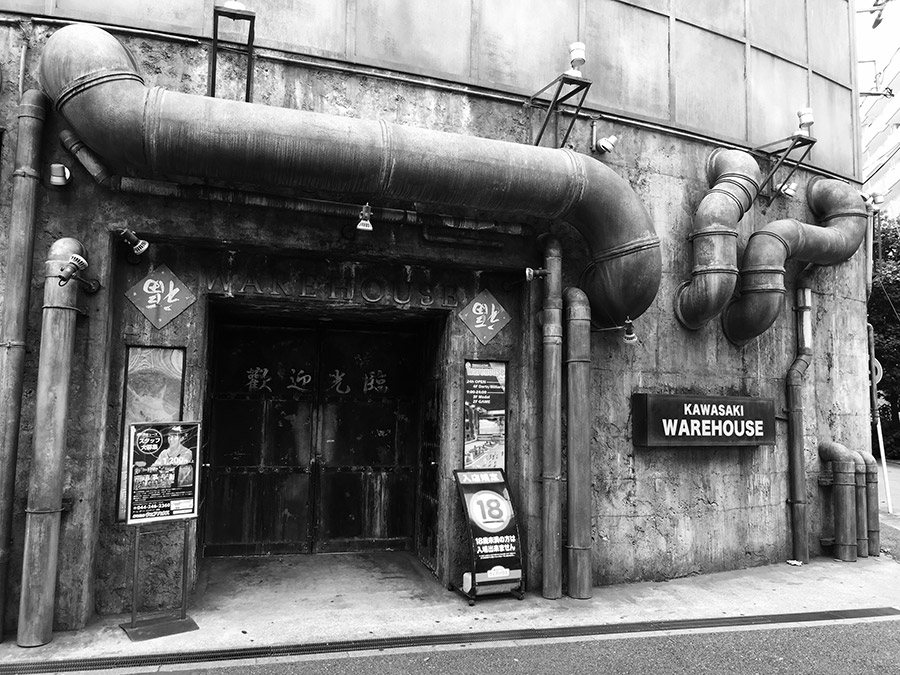
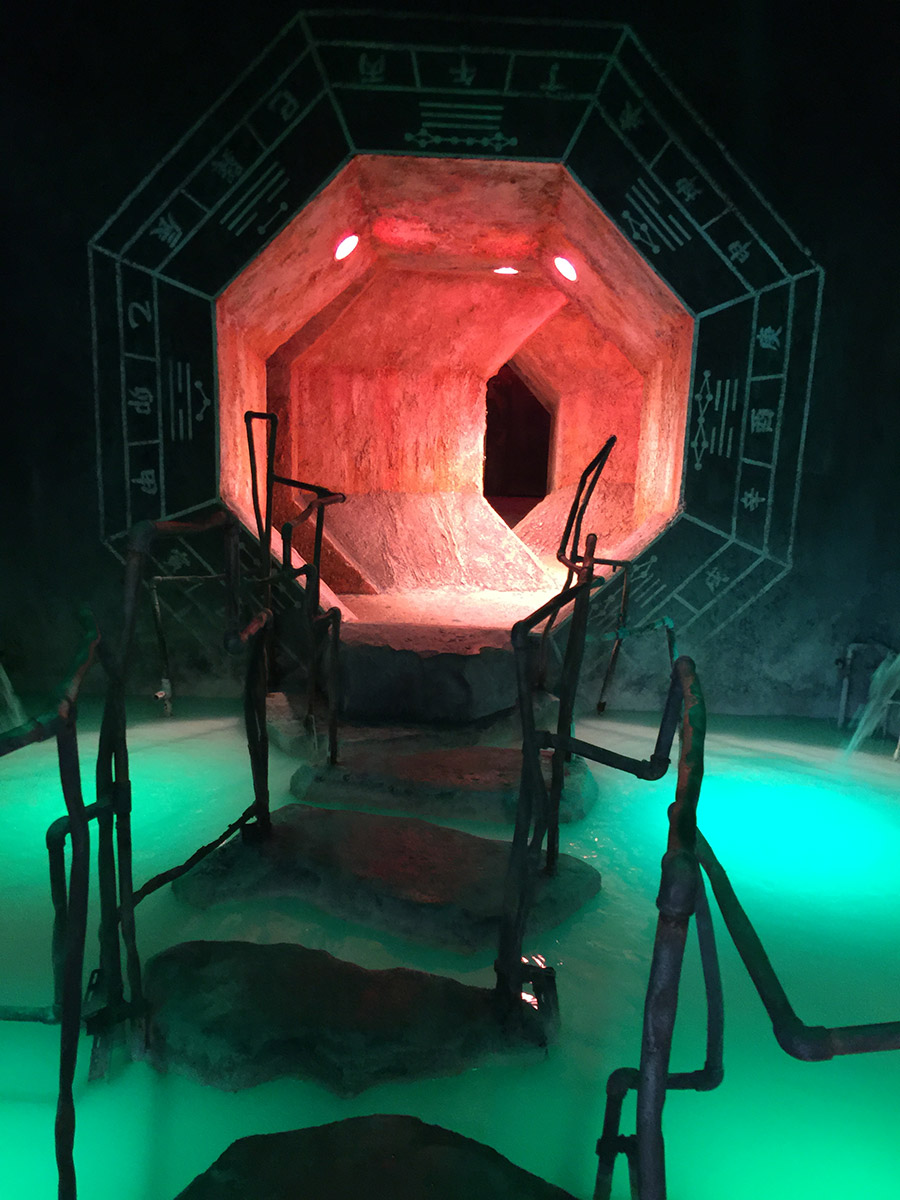
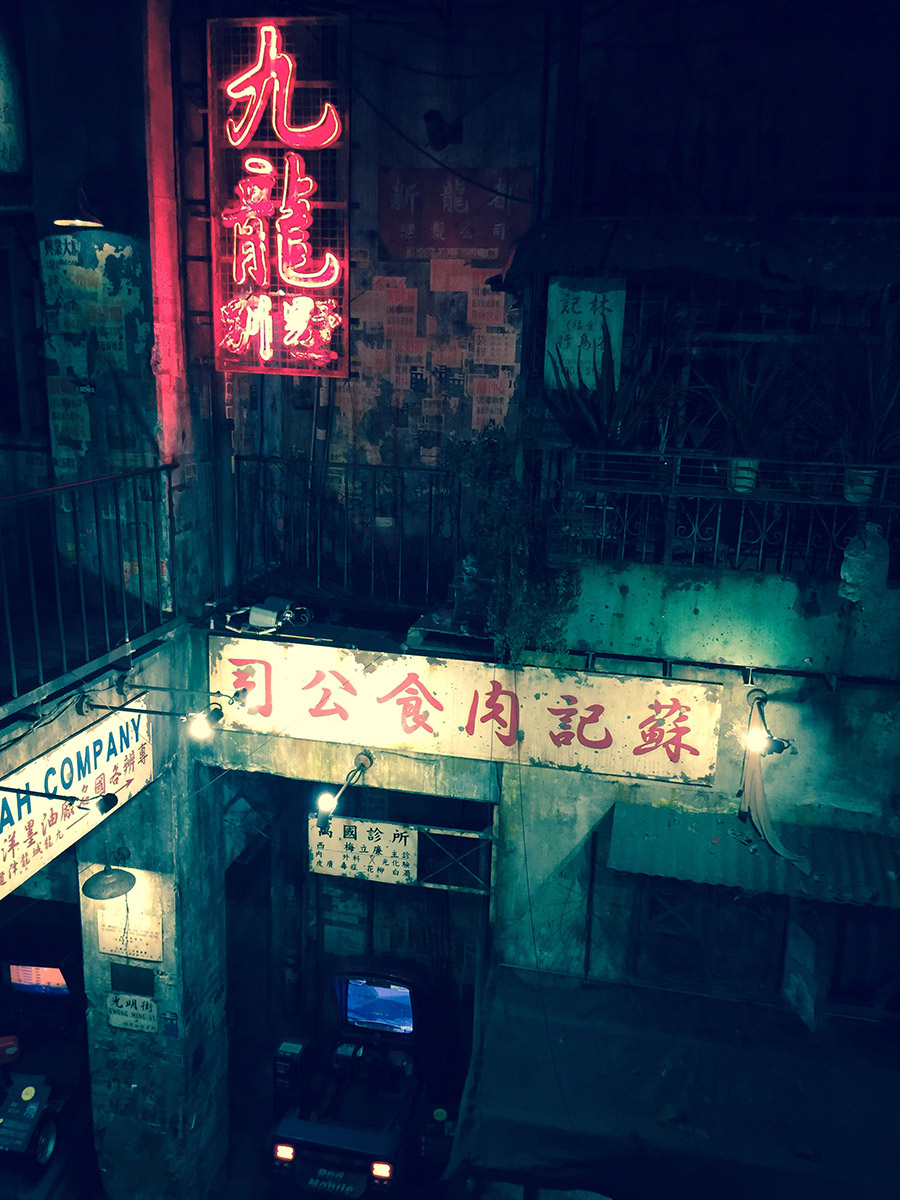
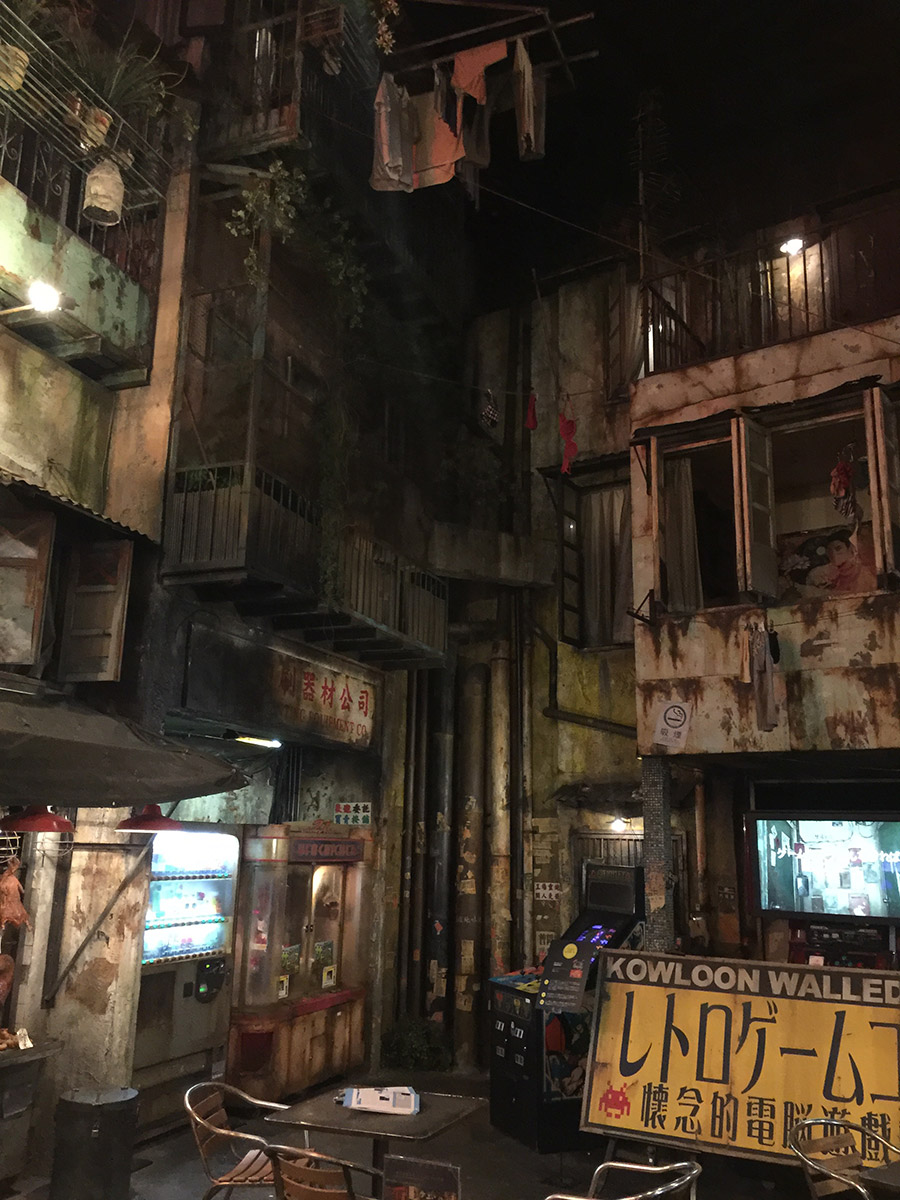
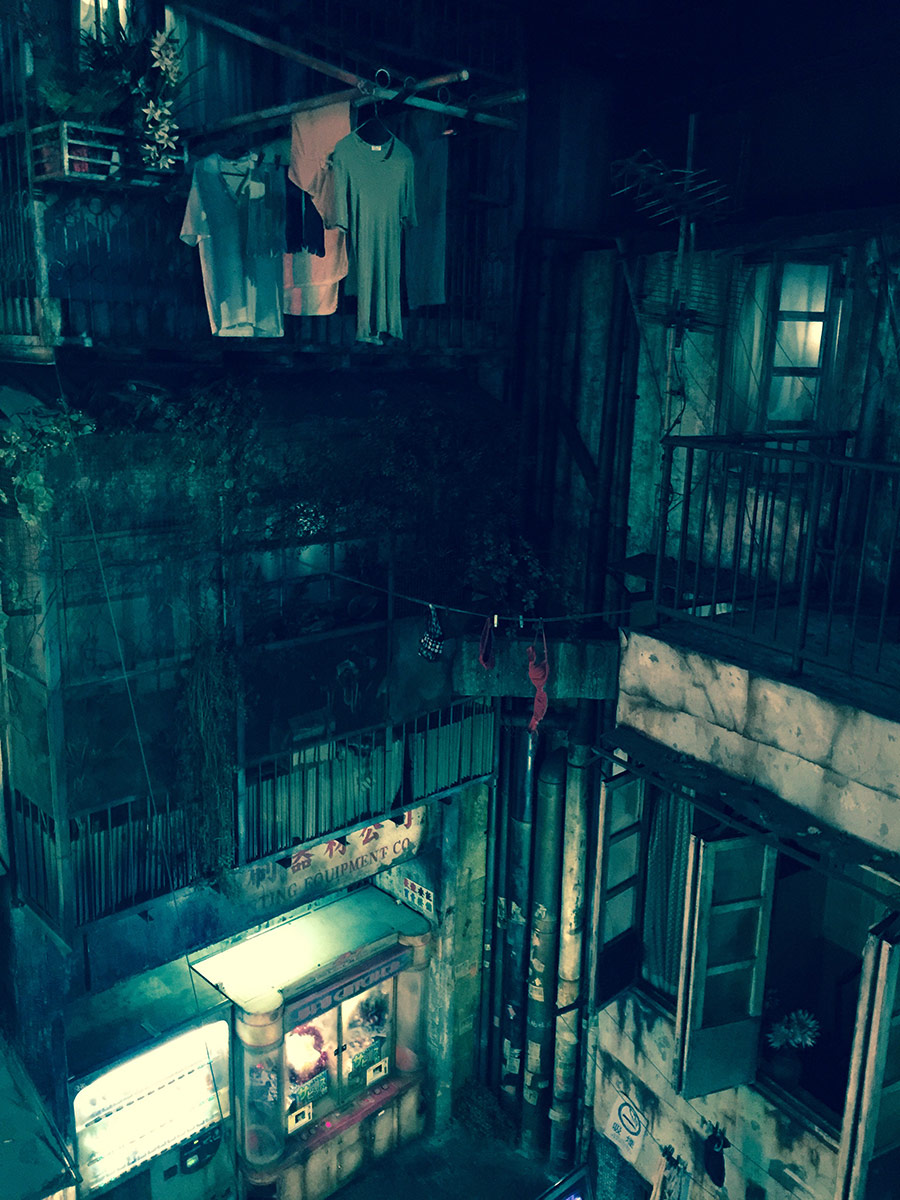
I had expected all this crazy theming and wasn’t disappointed. However, the actual arcade was even more confounding, and it wasn’t even trying to be. I spent a solid hour walking around the various floors, trying to understand what the games even were, and completely failing. Granted, I’m not an expert on arcades and maybe arcades in the US have some of these same games, but I mostly doubt it.
Things would start with the familiar, like a Guitar Hero console. Okay, I know what that is. Now here’s the same thing, but for the piano. Okay. Here’s one with an entire drum kit in it. Okay. Here’s one with two traditional kettle drums you play with a friend. ...okay?
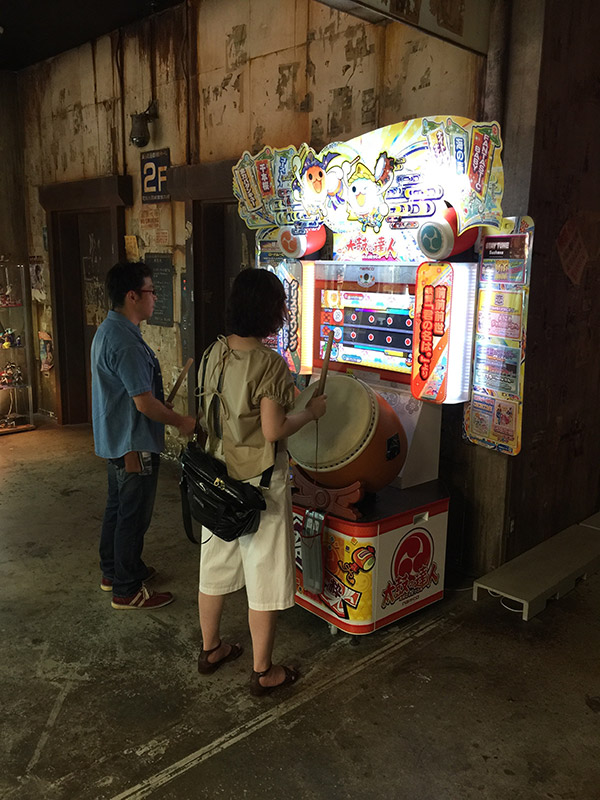
Then there’s a wall of stand-up machines with round screens that girls play by pressing unmarked buttons around the screen’s edge while boy band footage plays on the screen. Is this a game? Are they controlling something?
Here’s a row of consoles with a grid of screens like a Rubix cube, each screen displaying a different image. What.. how do you... Oh hey, Pac Man! Four people are playing a cocktail table Pac Man, with four Pac Mans in the maze at the same time. I could imagine this existing in America somewhere okay now the Pac Mans are huge I no longer know what’s happening.
One floor was a pool hall on one end and a ping pong hall on the other, imagine a pool hall but with ping pong tables instead. At the far end of the room were the dart boards, but the dart boards had screens you were aiming at and electronic things going on when you hit them.
Ninety percent of the Akihabara in Tokyo had been room after room of what we’d call claw machine games and what I think they call crane games. Basically a big glass case of prizes you try to grab with a remote-controlled claw:
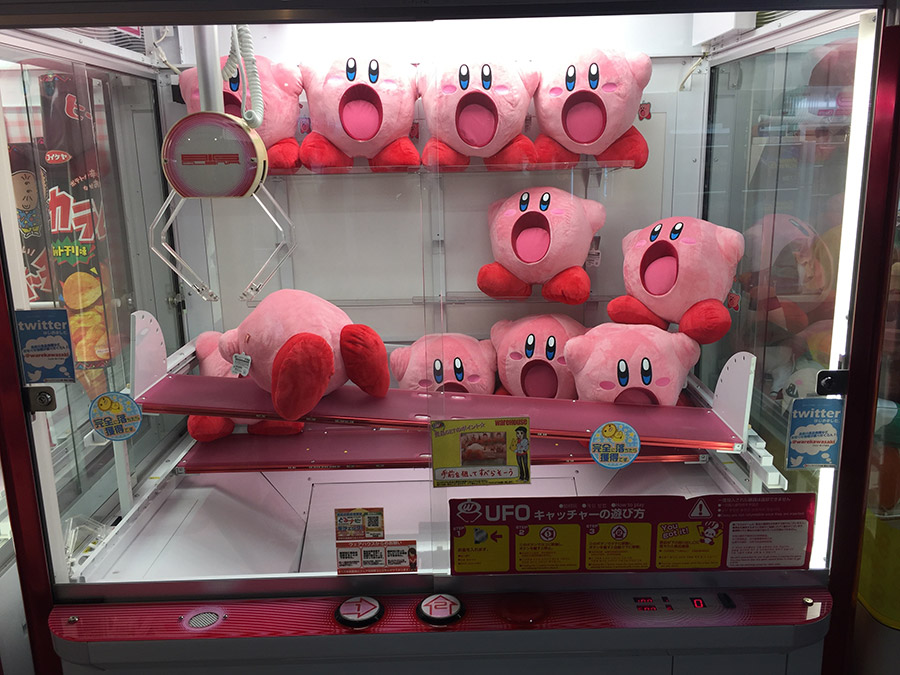
Another floor of the arcade was just tons and tons of these. I understand how these work but not in any remote way why they’re so popular.
There were what appear to be fancy photo booths, where I think you can digitally manipulate the photos it takes before it spits them out. I think. There could have been sex in there for all I know.
The last floor was the strangest, the most detailed insight I can offer is that the games there seemed to be gambling machines. I had a pachinko machine growing up so I know what those are, and these were not that. There are huge carousels with arms pushing coins at you and screens inside with a rooster playing a saxophone, I had no idea what was going on at any point on this entire floor.
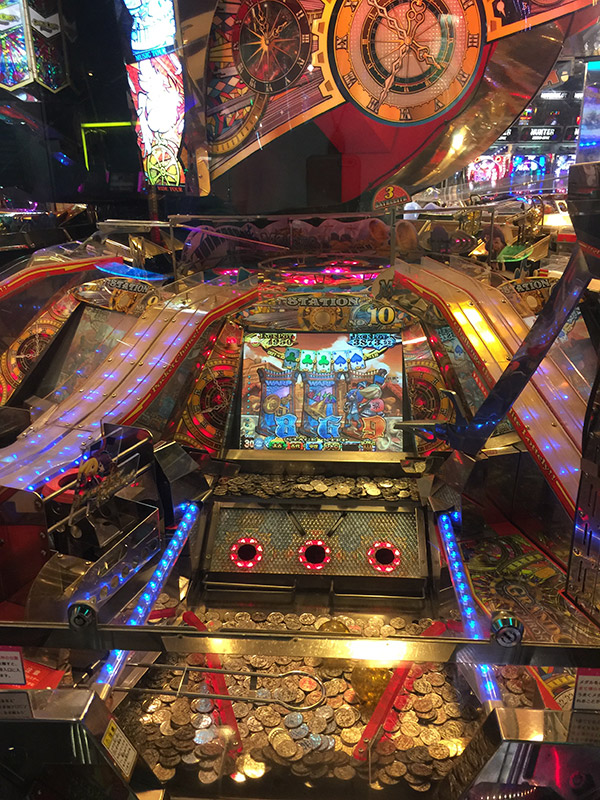
At some point I realized I’d been walking around the arcade for an hour with my mouth hanging open. I proceeded to walk around the arcade with my mouth open for another hour. Then it was off to the airport and a quick hop, skip and an Oh God I think the weird guy next to me on the plane has bird flu back to America.
One of the best things about travel is that if your trip had any meaning at all, you’re not the same person when you come back. You come home, but you never see your home the same way again. It didn’t actually change, but now you’re awake to it in a way you weren’t before.
Returning from Japan has been very strange for me. For two weeks, in my dreams every night I was still in Japan, and upon waking every morning it would take a few very confusing minutes to realize where I really was. For the first few days it seemed like everything I saw throughout the day was a prop in a play, not quite real. It was like the abstract meaning we unconsciously assign to things was missing.
Being home, I’m overwhelmed by the quaintness and Americanness of everything I see, the expansive lawns and boxy, Midwestern buildings. It almost seems like a cartoon, between the DQ Grill & Chill and the impossibly white people who smell like milk. Everyone has a slightly entitled look on their faces, even the children, something I didn’t see in Japan. Maybe it’s just the look that says Chicago and Boston were never vaporized by bombs. We have a kind of innocence, lacking those kind of events haunting our national psyche. It reminds me of how I’ve always felt watching footage from the 1950s, how everything seems so manicured and willfully simplified, like Disneyland. America seems a bit like that to me now.
I can’t help but reflect on what a product of our environment we all are, and how that environment’s a product of history.
Traveling makes you uncomfortably aware of everything, and so coming home can be comforting. You can relax on a level you couldn’t while you were away. But it’s simultaneously discomforting, as you’re also aware that you were asleep before and you don’t quite want to fall back into that. The comfort comes at a price.
Since I’ve been back I’ve been reading about the small group of people who have been to every country in the world. This fascinates me. I’ve been to nine countries and each has changed me. How would I view the world, life, and myself after visiting 200?